Laboratory|実験室
Past|過去
Anthro-film Laboratory 57
Special Talk and Discussion with Becca Voelcker
“Farmer-filmmakers, fieldwork, and growth”
Date & Time: July 26th 2024, 16:00 -
Venue: National Museum of Ethnology, 2nd Floor, Seminar room 7
Senri Expo-Park 10-1, Suita, Osaka 565-8511 Japan
https://www.minpaku.ac.jp/en
※reservation is not required.
日時:2024年7月26日(金) 16:00 -
会場:国立民族学博物館2階 第7セミナー室
〒565-8511 大阪市吹田市千里万博公園10-1
https://www.minpaku.ac.jp/information/access
※発表と議論の言語は英語です
※予約等必要なし
Speaker: Becca Voelcker
(Lecturer, Art Department, Goldsmiths, University of London, BBC New Generation Thinker 2024)
Discussant: Ran Muratsu
(Assistant Professor, Research Institute for Languages and Cultures of Asia and Africa, Tokyo University of Foreign Studies)
Talk abstract
Drawing on research for her book, Land Cinema in an Age of Extraction (California University Press, 2026), Becca will present a talk titled ‘Farmer-filmmakers, fieldwork, and growth’. Using ten photographs, the talk explores two highly unusual experiments in going ‘back to the land’. In the mid-1970s, the leftist activist groups Ogawa Productions (Japan) and Somankidi Coura (Mali) both moved to rural areas to establish agricultural collectives, documenting and disseminating their fieldwork on film. Using soil and celluloid, these farming-filmmaking collectives understood their struggle for justice as encompassing climate and culture, their yield as being both self-sufficiency and self-representation. Seen today, their rural experiments offer timely insight into what Anna Tsing describes as possibilities for collaborative survival on the edges of extractive capitalism.
 Tamura Masaki with miniature camera on a pole to shoot planting at mud level Nornes Forest page 203
Tamura Masaki with miniature camera on a pole to shoot planting at mud level Nornes Forest page 203
 Moussa Coulibaly and Ousmane Sinaré during the agricultural internships Haute-Marne 1976 Photograph by Bouba Touré Grisey Sowing 243
Moussa Coulibaly and Ousmane Sinaré during the agricultural internships Haute-Marne 1976 Photograph by Bouba Touré Grisey Sowing 243
Bio
Dr Becca Voelcker lectures in art and film history at Goldsmiths, University of London, specializing in anticolonial and ecofeminist representations of land since the 1970s. Becca received her PhD from Harvard University in 2021. Her first book, Land Cinema, is forthcoming with California University Press. The book is a cross-cultural history of eco-political cinema based in ten locations including Wales, where Becca grew up, and Japan, where she lived as a young adult. Alongside research, Becca writes for Sight & Sound, introduces films at the BFI, and serves on film festival juries. Becca is a BBC New Generation Thinker 2024 with regular appearances on BBC Radio 3 and 4.

Anthro-film Laboratory 56【中止】
山崎嘉那子氏作品の上映とディスカッション
日時:2024年7月23日(火)17:00–
会場:京都大学大学院アジア・アフリカ地域研究研究科
川端キャンパス 稲盛財団記念館3階
318号室 & オンラインZoom(ハイブリッド方式)
対面会場:https://www.asafas.kyoto-u.ac.jp/access/
※発表と議論の言語は日本語です。作品には英語字幕が付いています。
※参加希望者は7月22日(水)までに、以下のリンクから事前登録ください
https://us02web.zoom.us/meeting/register/tZIoce6orDovE9MKej7IU1xrlOUWwFiM292A
登録後、ミーティング参加に関する情報の確認メールが届きます。
We are here. ONODERASAN’S DREAM FOR THE FUTURE.
制作年:2022年
時間 35分
編集・録音:山崎嘉那子
出演:小野寺清子、武田有史、植田かずみ(声による出演)、山崎嘉那子(声による出演)
ナレーション:武田有史
使用言語:日本語(英語字幕付)
(作品内作品)
タイトル ONODERASAN’S DREAM FOR THE FUTURE.
制作年:2019年
監督・編集 Alijcja Rogalska
撮影:武田有史
出演:小野寺清子、武田有史
インスタレーション:Alijcja Rogalska
使用言語:日本語・英語
概要
「今日本で介護を受ける高齢者は、目に見えません。同時に、私たちの行う介護も目に見えていません。」
日本の高齢化は止まることを知らず、2065年には国民の約2.6人が65歳以上になると予想される。日本社会において高齢者介護は重要な課題であり続けてきた。国家による高齢者ケアのための政策は、1975年に実施された70歳以上の医療費無償化を皮切りにスタートし、2000年代には施設介護から在宅介護へとその舵を切る。しかしこのような政策は高齢者の新たな形での孤立を引き起こし、介護労働者や家族に介護の負担を強いる結果となった。
このような日本の高齢者介護に対する問題意識を共有した介護福祉士兼俳優の武田有史と、アーティストのAlijcja Rogalskaは、2019年にアーティスト・イン・レジデンス制度を利用し、共同で映像作品を作成した。彼らの作品は、武田が介護する小野寺清子さんという寝たきりの高齢者の家を舞台とし、インスタレーションと映像という手法を掛け合わせたものであった。小野寺さんは、この映像制作とその反響を通じて自分の家の外の世界との接点を見出し、生き生きとするように見えたという。しかし、作品完成の数ヶ月後に彼女の口からこぼれたのは「死にたい」という言葉だった。(参照:「Review ミライ」https://library.paradiseair.info/long2018/review/03/28/%E3%83%9F%E3%83%A9%E3%82%A4/)
本作では、日本の高齢者とその介護という不可視化された領域の生々しいまでの現実的な質感を映像や語りによって共有すると共に、高齢化問題の一端に対して芸術が何をしうる(何ができる/何を起こしてしまう)のかという問いの検討をアーティスト、俳優兼介護福祉士、人類学者が共同で試みたプロセスによる所産である。具体的には、2019年に作成された『ONODERASAN’S DREAM FOR THE FUTURE.』のその後について、聞き取り調査や俳優による語り、発表者自身の祖母との関わり、生活地域での写真撮影・録音を織り交ぜ、マルチモーダルな手法で形とした。本作から、人が社会において主体化されることまたは可視化されることと、人が生きる生活世界が生み出す生の感覚のズレと、それに対して芸術がもたらしうる作用についての議論を提起しうるのではないだろうか。
プロフィール
発表者 山崎嘉那子(京都大学大学院人間・環境学研究科人間・環境学研究科 博士課程1回生)
同志社大学グローバル地域文化学部アジア・太平洋コース卒業。株式会社ガイアックスでの勤務を経て京都大学大学院人間・環境学研究科文化人類学専攻修士課程に入学・修了。専門は演劇人類学。日本、シンガポール、ハワイの障がい者や高齢者による演劇実践を調査。幼少期からテレビCMやミュージカルなどに出演。2021年にはカナダバンクーバーのインプロシアターで俳優として活動。2022年からは演劇ユニットOiBokkeShiの俳優、スタッフ、広報に携わる。


Anthro-film Laboratory 55
Film Screening and Discussion with PANÁKOVÁ Jaroslava
Date & Time: May 21st 2024, 15:30,
Venue: National Museum of Ethnology, 2nd Floor, Seminar room 7
Senri Expo-Park 10-1, Suita, Osaka 565-8511 Japan
https://www.minpaku.ac.jp/en
※reservation is not required.
日時:2024年5月21日(木)15:30–
会場:国立民族学博物館2階 第7セミナー室
〒565-8511 大阪市吹田市千里万博公園10-1
https://www.minpaku.ac.jp/information/access
※発表と議論の言語は英語です
※予約等必要なし
Presenter: PANÁKOVÁ Jaroslava
(Senior scholar at the Institute of Ethnology and Social Anthropology, Slovak Academy of Sciences, Visiting Research Scholar, Center for Northeast Asian Studies, Tohoku University)
Discussant: KAWASE Itsushi
(National Museum of Ethnology, Japan)
Film: Five Lives
75’, original language – Russian, with English subtitles
Direction, photography, production: Jaroslava Panáková,
Film editing: Šimon Špidla, Film score: Jonatán Pastirčák
Trailer in English: https://vimeo.com/178311719




Annotation
Viktor Valerievich Mumichotkak nicknamed Mucha, Chukcha from Novoe Chaplino (Chukotka, Russia) died tragically in 2012. Someone stabbed him and cut off his fingers. When young Alle Ukuma's son was born in 2014, her mother told her: "Last night I dreamed of Mucha, he came back in your boy, we will call him Viktor". According to locals, the deceased can return to life up to five times. The film essay about life, death and a possible return prompts a generally valid question: How can one learn to accept one's finitude?
Logline: Death is the end. But I can't see it from here.

PANÁKOVÁ Jaroslava パナーコヴァ・ヤロスラヴァ
Position at the CNEAS visiting associate professor at the CNEAS, Tohoku University (4/1/-6/30/2024)
The project is supported using public funding by Slovak Arts Council and CNEAS, Tohoku University.
Profile
Jaroslava Panáková, a visiting associate professor at the CNEAS, Tohoku University, is a senior research fellow at the Institute of Ethnology and Social Anthropology, Slovak Academy of Sciences in Bratislava, Slovakia. She received her doctorate in Sociology of Culture from Saint Petersburg State University, and her MA in documentary cinema from Prague’s FAMU. She was a postdoc fellow at the Max Planck Institute for Social Anthropology in Halle, CNRS in Paris, and Vienna University.
Jaroslava has conducted her field research on northern peoples in Saint Petersburg and Chukotka, looking comparatively at temporary migration, indigenous tourism, and identity. Her monograph Visual Regimes of Russian Beringia (2020) [SK] focuses on various genres of visual representations and self-fashioning in the Soviet and post-Soviet Chukotka. She is now preparing a book on death and the visuality of commemoration. Her recent research interests include olfaction and ecological anthropology. She attempts to bring sensory and multimodal methodologies into studying both arctic tundra and Carpathian meadow.
Anthro-film Laboratory 54
Film Screening and Discussion with Jacobo Sucari
Date & Time: 16th May (Thu) 2024 15:00-
Venue: Ritsumeikan University, Kinugasa Campus, Jukokan, B1F, Theater Room
56-1 Toji-in Kitamachi, Kita-ku, Kyoto, 603-8577
https://maps.app.goo.gl/XGEhZVcPaVH9BHud6
※reservation not required.
日時:2024年5月16日(木)15:00–
会場:立命館大学衣笠キャンパス、充光館地下1階、001教室シアタールーム
〒603-8577 京都府京都市北区等持院北町56−1
https://maps.app.goo.gl/XGEhZVcPaVH9BHud6
※発表と議論の言語は英語です
※予約等必要なし
“STRUGGLE FOR URBAN SPACE”
Script and Direction: Jacobo Sucari
Music: Joan Saura
Length: 59min 30sec
Languages: Catalan/ Spanish with English subtitles.
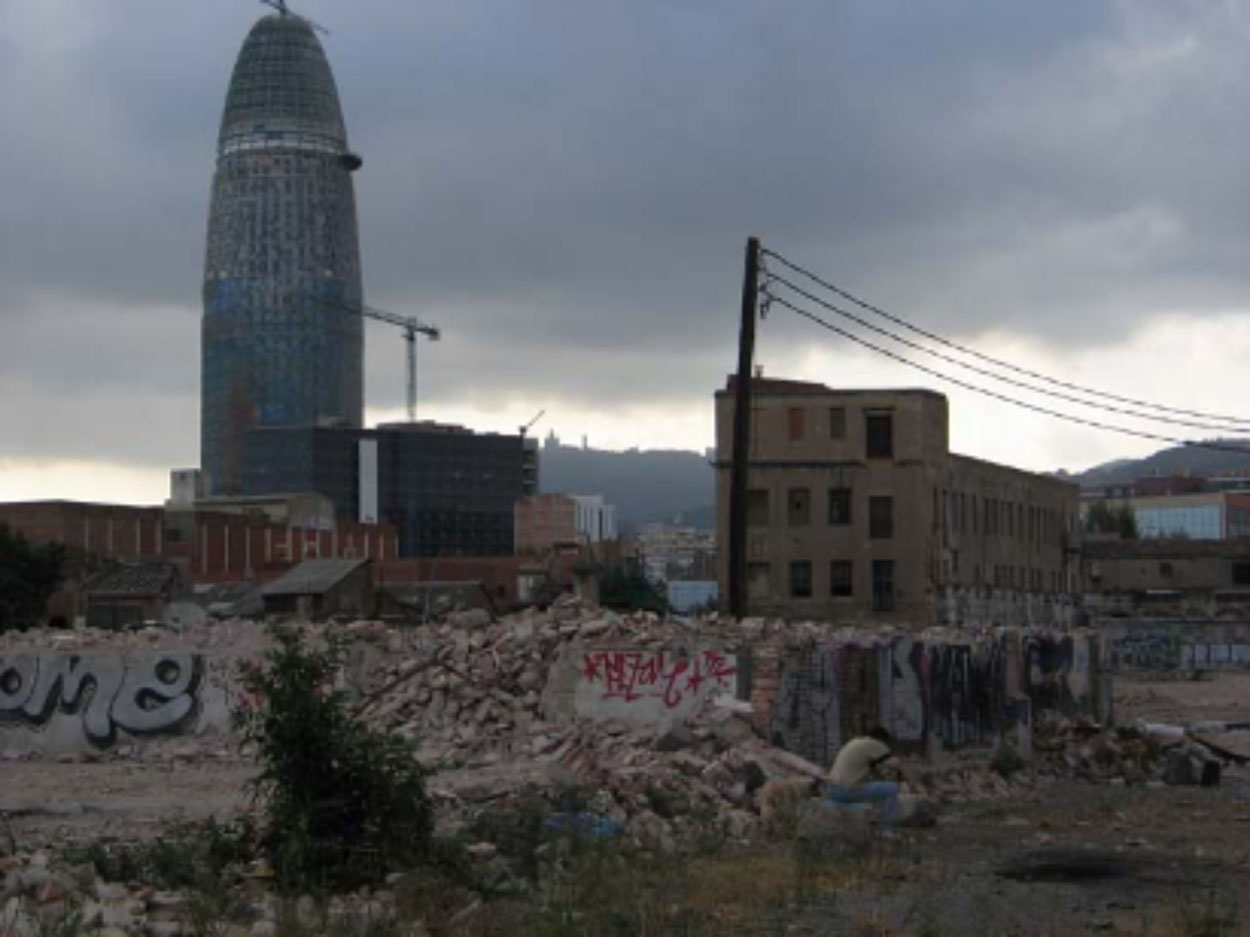
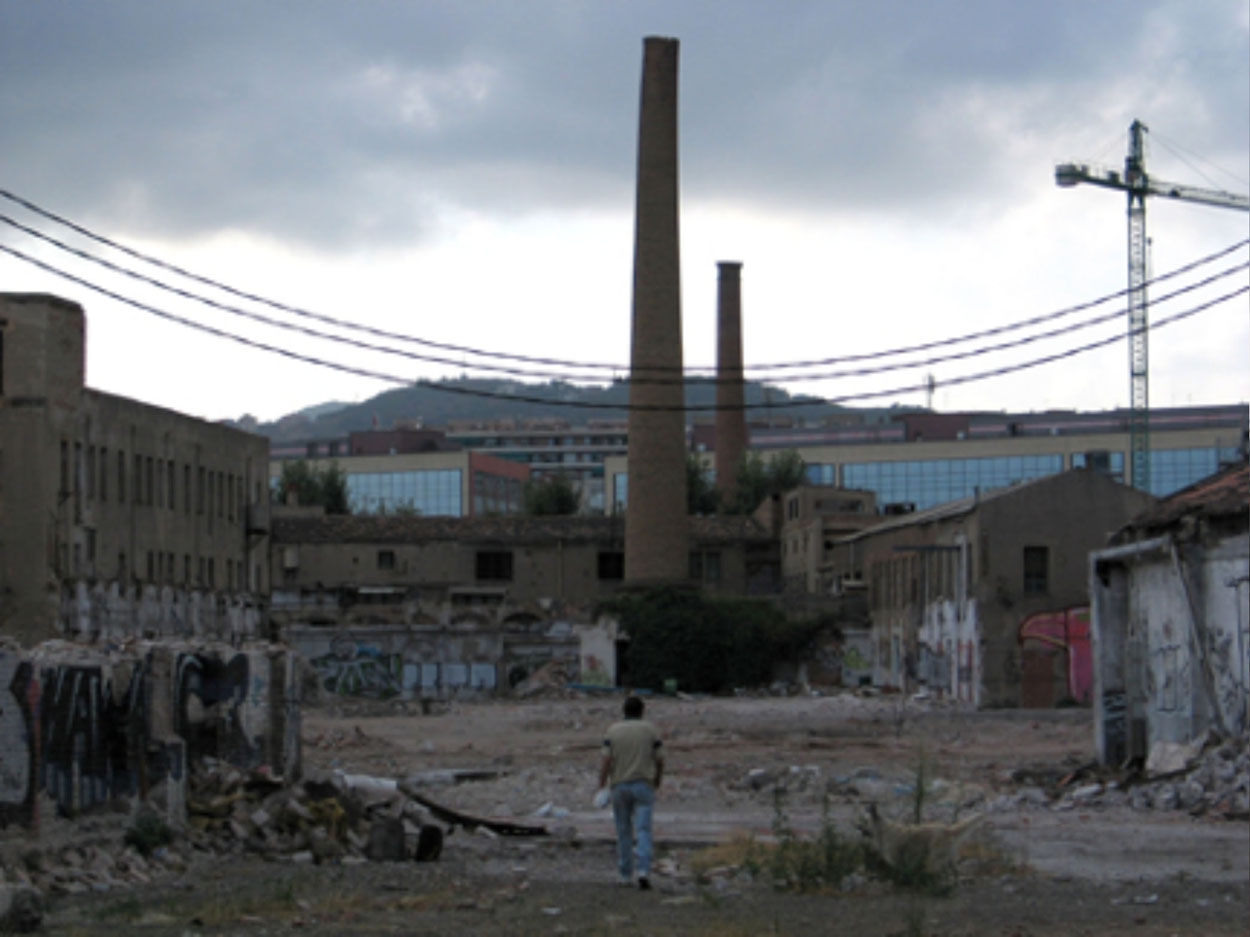
SYNOPSIS
The “Struggle for Urban Space” is one of Jacobo Sucari's documentary series works on the old factory district of Poblenou in the city of Barcelona. This line of research on urban transformation has been developed by Jacobo Sucari in documentaries and audiovisual installations over the last 11 years.
The documentary “Struggle for Urban Space” deals with the dramatic changes that urban development is inflicting on the landscape and the inhabitants of Barcelona’s Poblenou district. This old industrial neighbourhood of factories and workshops is suffering a major process of transformation as a result of the City Council’s Regeneration Programme known as 22@. It aims to convert Poblenou into an important centre for state-of-the-art technology and associated services. “Struggle for Urban Space” shows the reactions of the different neighbourhood organisations, displaced factory workers, artists sharing workshops and squatters active in the area.
The documentary works its way into this whole social fabric reflecting the conflict between the old and the new, between heritage as a social memory and progress as some beautiful angel of doom.
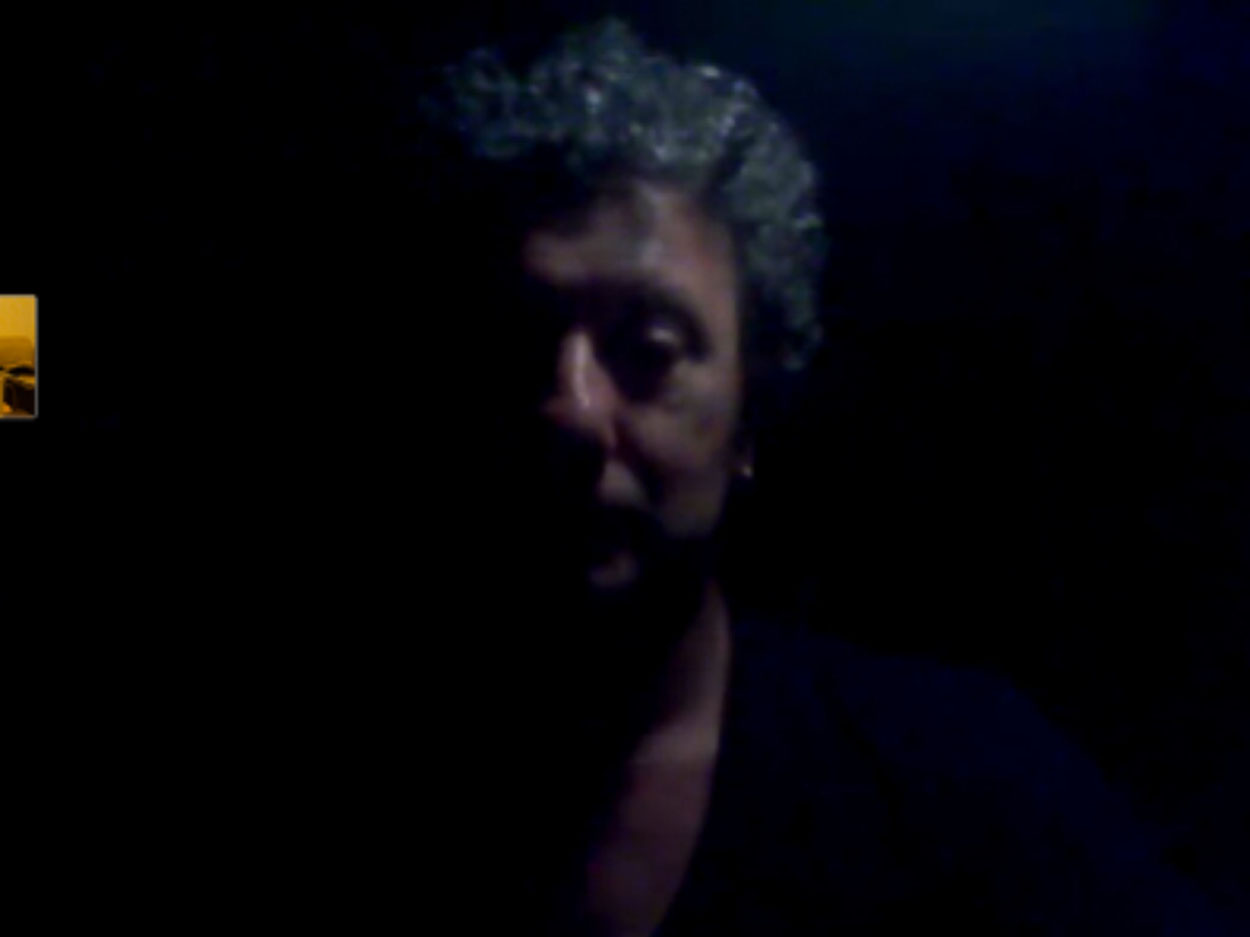
Profile
Documentary filmmaker, musical improvisation instrumentalist and writer.
PhD Professor at the Faculty of Fine Arts, University of Barcelona (UB).
My artistic work is based on the intersection of image, text and sound, constructed in a synchronic way, as an audiovisual composition. In my videography the narratives are often abstract or experimental; in others, closer to the documentary genre, the plot assumes a dramatic development.
My works have been presented in different spaces and contexts, both in the artistic tradition such as museums and galleries, as well as in the cinematographic tradition: festivals, cinemas and programming in different TV channels.
ONGOING PROJECTS:
I am currently working on a writing project within the framework of the essay on technopolitics entitled "Chronicles of Mundo Chungo", and on a documentary film "The Myth of the Absent", about the philosopher Walter Benjamin and the border crossing between France and Spain where he died in 1940.
More information about the author at www.jacobosucari.com
Contact: jacobosucari@gmail.com
協力:丸山真貴子
Collaboration: Makiko Maruyama
Anthro-film Laboratory 53
Film Screening and Discussion with Erminia Colucci
Date & Time: Feb 22nd, 15:30–, 2024
Venue: National Museum of Ethnology, 2nd Floor, Seminar room 7
Senri Expo-Park 10-1, Suita, Osaka 565-8511 Japan
https://www.minpaku.ac.jp/en
※reservation is not required.
日時:2024年2月22日(木)15:30–
会場:国立民族学博物館2階 第7セミナー室
〒565-8511 大阪市吹田市千里万博公園10-1
https://www.minpaku.ac.jp/information/access
※発表と議論の言語は英語です
※予約等必要なし
Presenter: Erminia Colucci
(Professor, Department of Psychology, Middlesex University,
Visiting Research Scholar, Center for Southeast Asian Studies, Kyoto University)
https://kyoto.cseas.kyoto-u.ac.jp/en/staff/erminia-colucci/
Discussant: Chika Yamada
(Assistant Professor, Center for Southeast Asian Studies, Kyoto University)
Film
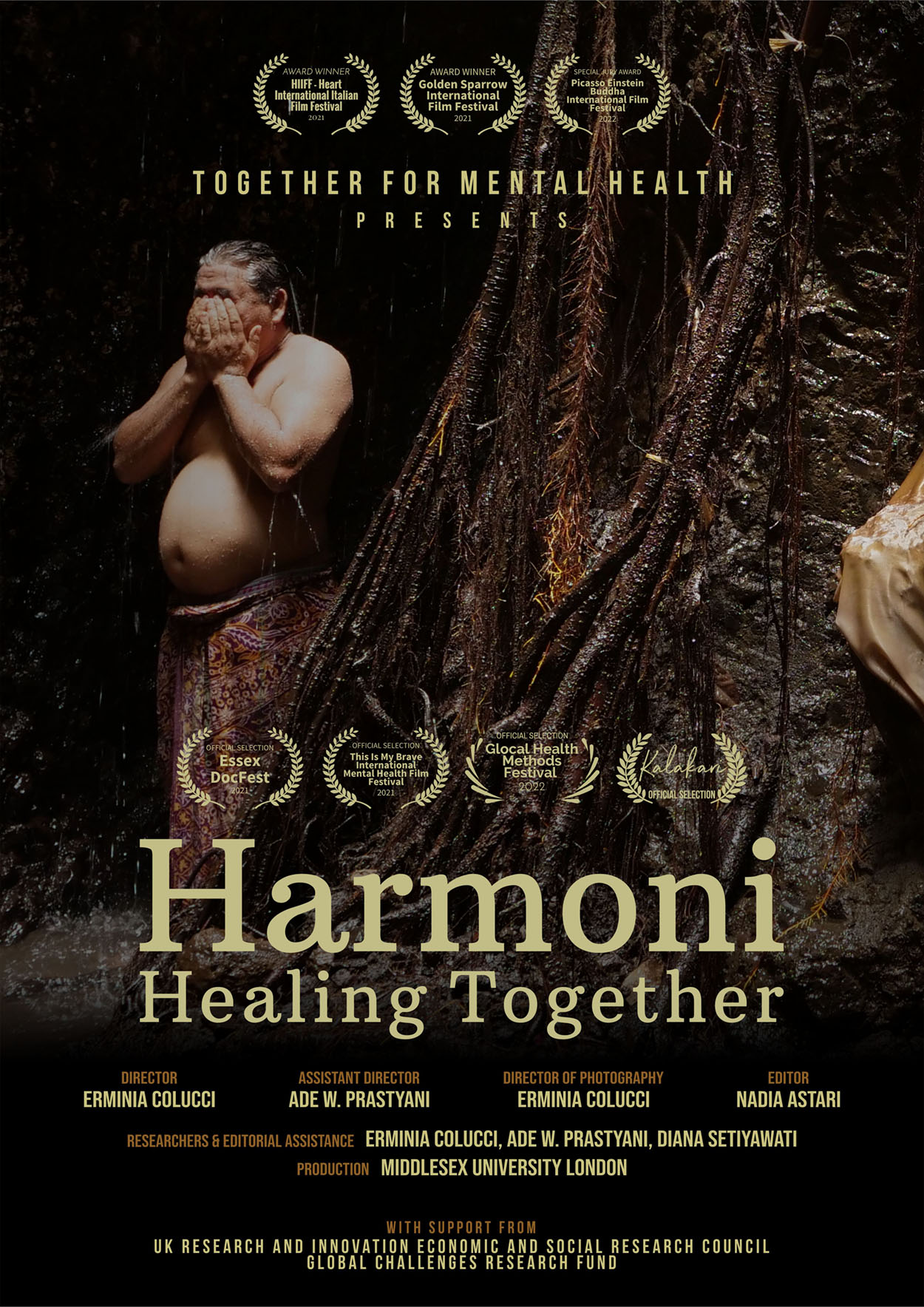
Harmoni -Healing Together-
Directed by Erminia Colucci, 2021, 98min
Language: English, Indonesian, Balinese, Sundanese, and Manggarai with English subtitles.
Synopsis
As a nation of 270 million, Indonesia is facing the grave task of caring for millions of people living with mental illness. Many have experienced human rights abuses in their lifetime. In communities rich in their traditional and religious values, Indonesian faith-based or traditional healers and mental health professionals work tirelessly to improve mental health care and prevent human rights abuses. In the face of scepticism, can they negotiate their way to achieve successful collaboration instead of being antagonists?
‘Harmoni: Healing together’ explores these collaborative practices in three islands - Java, where the communities are predominantly Islamic, Hindu communities in Bali, and Catholic communities in Flores. The dream of a family home, making sense of illness and spirits through rituals, dilemmas over medicine use, and the embrace of co-existing spiritual and medical perspectives are some of the main themes presented in this innovative film.
Part of “Together for Mental Health”, an interdisciplinary, international collaboration between Indonesia, Ghana and the UK. Using visual methods, it explores examples of collaboration between mental health workers and pluralistic healing approaches and their impact on preventing human rights abuse and improving care for people living with mental illness experience.
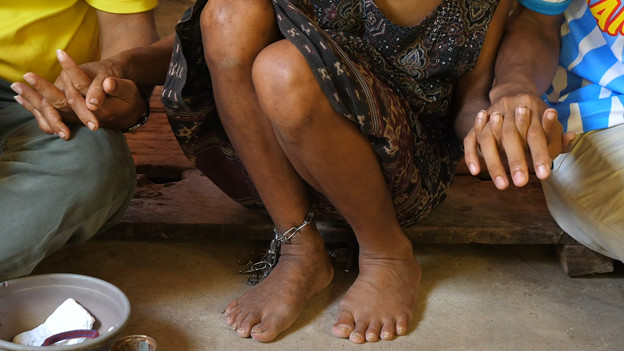
About the filmmaker/presenter
Dr. Erminia Colucci is Professor of Visual Psychology and Cultural & Global Mental Health in the Department of Psychology at Middlesex University London (UK) and Visiting Professor at Gadjah Mada University (Indonesia). Erminia has a background in Cultural Psychiatry (PhD), Visual Anthropology (MPhil), Education (PGCert), Data Analysis (PGDip) and Cultural and Community Psychology (BSc and Hons). Her main area of research are human rights and mental health, suicide and suicide prevention, domestic violence against women and children, spirituality and faith-based/traditional healing, and first-hand stories of people with lived-experience of ‘mental illness’ and suicidal behaviour, with a focus on low-middle income countries and ethnic minorities and refugee populations. Erminia is passionate about using arts-based and visual methodologies, particularly photography and ethnographic film-documentary and participatory visual methods, in her research, teaching and advocacy activities. Erminia is the founder of Movie-ment(https://movie-ment.org/), Aperture -the first Asia-Pacific ethnographic documentary festival- and Co-chair of the World Association of Cultural Psychiatry SIG on Arts, Mental Health and Human Rights (https://waculturalpsy.org/about-us/special-interest-groups).
For more info https://www.mdx.ac.uk/about-us/our-people/staff-directory/profile/colucci-erminia and https://movie-ment.org
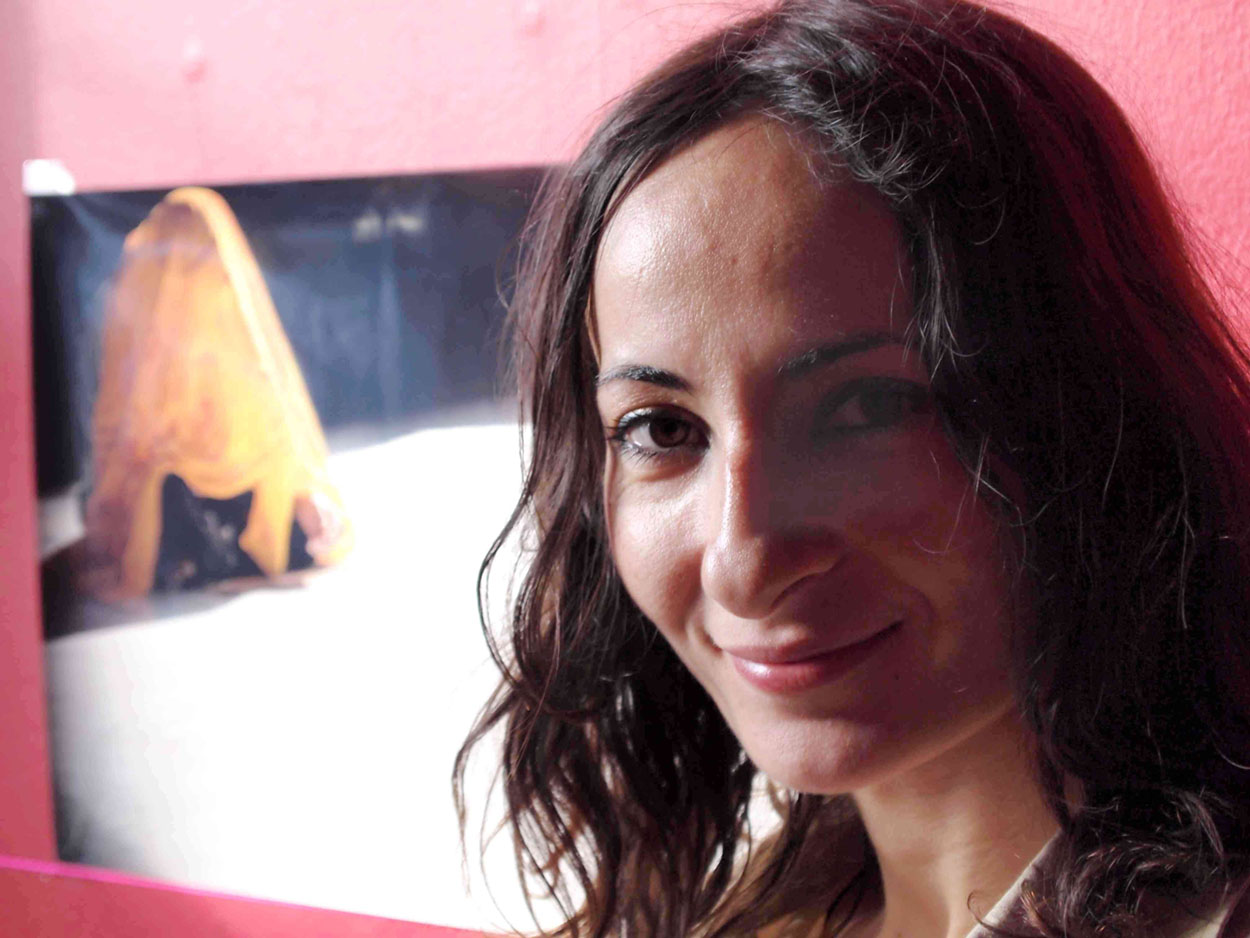
Anthro-film Laboratory 52
制作過程の民族誌映画に関するセミナー
Work-in-progress Film Seminar
Azmari -The Fest of Voices-
日時:2023年12月14日(木)15:30–
会場:国立民族学博物館2階 第7セミナー室
〒565-8511 大阪市吹田市千里万博公園10-1
https://www.minpaku.ac.jp/information/access
※発表と議論の言語は日本語、及び英語です。
※予約等必要なし
Date & Time: December 14th, 15:30–, 2023
Venue: National Museum of Ethnology, 2nd Floor, Seminar room 7
Senri Expo-Park 10-1, Suita, Osaka 565-8511 Japan
https://www.minpaku.ac.jp/en
Reservation is not required.
Azmari -The Fest of Voices-
Directed by Itsushi Kawase, 70min, Amharic (English subtitle)
Shooting: 2022-2023 (including footages from 2002-2003),
Location: Gondar, Addis Ababa, Tokyo
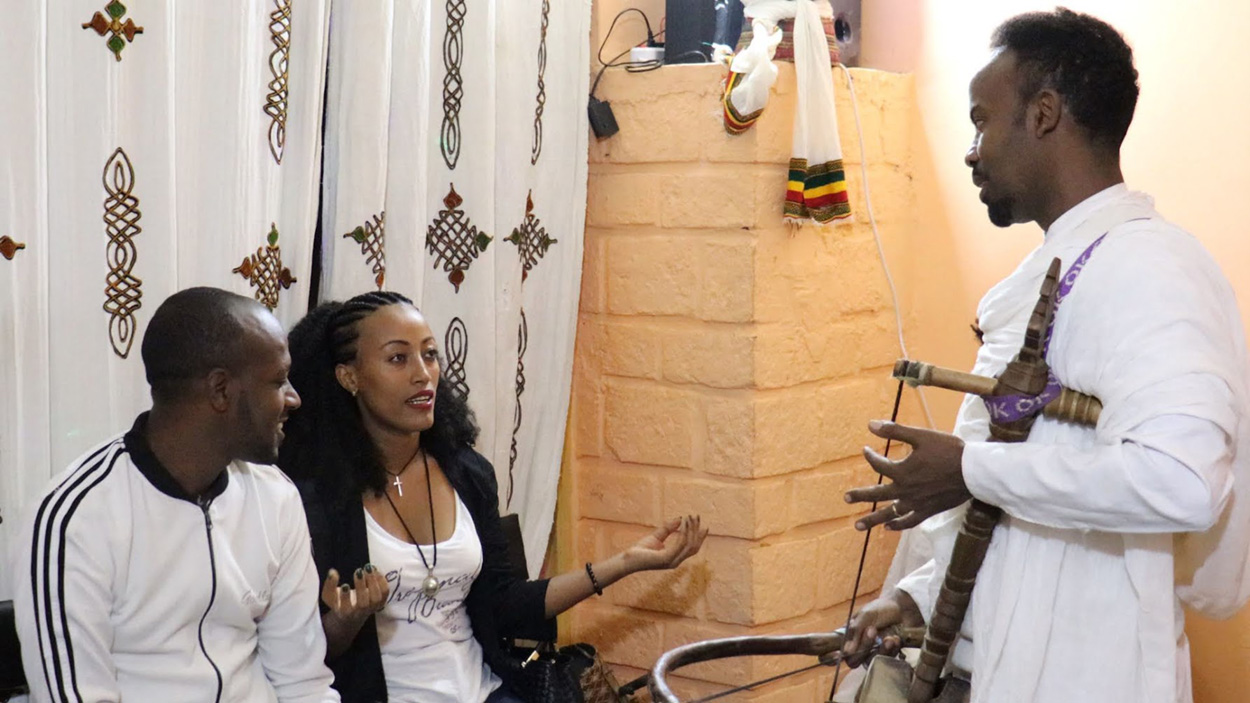
The Azmari, who play the one-stringed fiddle called masenqo, are hereditary musical professionals who have made music their livelihood in the communities of the Ethiopian highlands since ancient times. Azmari simultaneously serves as a resistance against the rulers and as representative voices of the people for social and political satire and debate through songs. The performances by Azmari are characterized by the improvisation of poetry, not only by the singer but by the audience, who improvise and throw their own poems at the singer. Azmari’s songs serve as a mirror, reflecting the social situation and feelings of the locals. This film follows the performance activities of Solomon Ayanaw, an Azmari working in Addis Ababa, and examines issues surrounding the transformation, authenticity, and inheritance of Azmari culture through conversations between the anthropologist/filmmaker, Itsushi Kawase, and Solomon, his relatives, and the audience.
発表者/ Presenter 川瀬慈 Itsushi Kawase
ディスカッサント/ Discussant 秦岳志 Takeshi Hata, ロッセラ・ラガッツイ Rossella Ragazzi
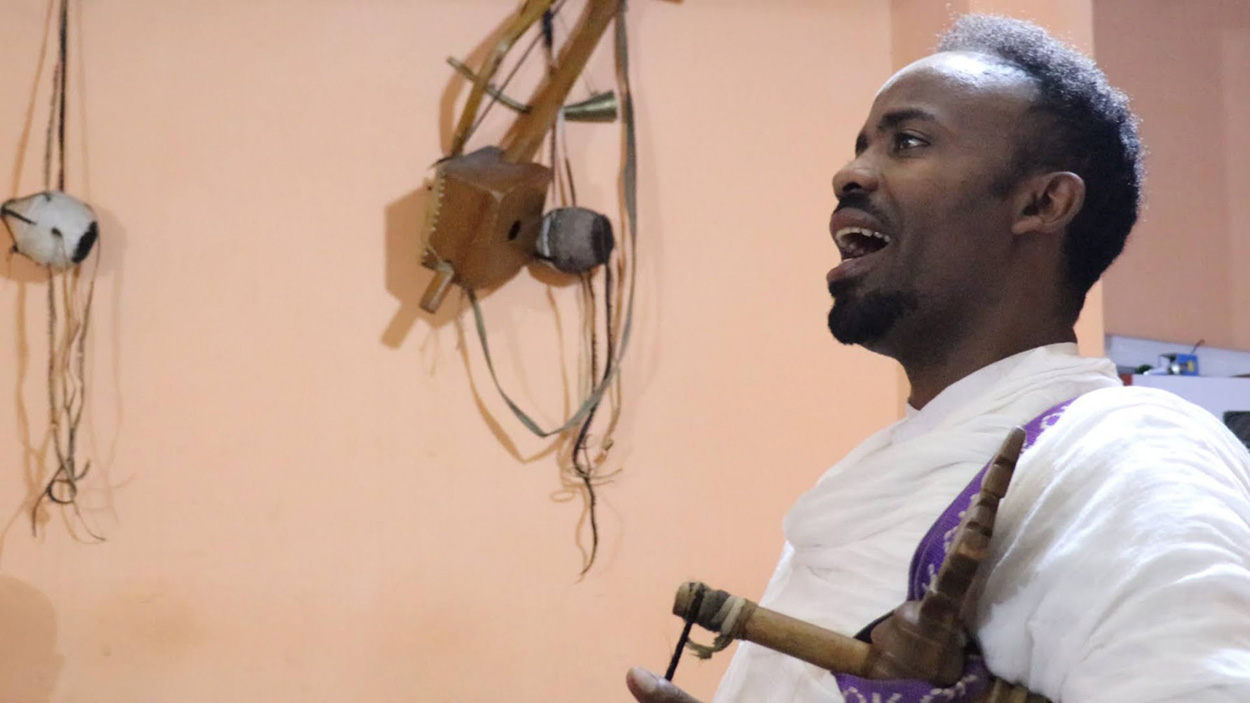
Anthro-film Laboratory 51
リサ・スピリアールト作品の上映とディスカッション
Film Screening and Discussion with Lisa Spilliaert
日時:2023年10月13日(金)15:30–
会場:国立民族学博物館2階 第7セミナー室
〒565-8511 大阪市吹田市千里万博公園10-1
https://www.minpaku.ac.jp/information/access
※発表と議論の言語は日本語、及び英語です。
※参加希望者は10月10日までにkawase07@gmail.comまで連絡、ご予約ください
Date & Time: October 13th, 15:30–, 2023
Venue: National Museum of Ethnology, 2nd Floor, Seminar room 7
Senri Expo-Park 10-1, Suita, Osaka 565-8511 Japan
https://www.minpaku.ac.jp/en
reservation is required by October 10th kawase07@gmail.com
Film 1:
N・P
2020, 60min, Escautville production
英語字幕 English Subititle
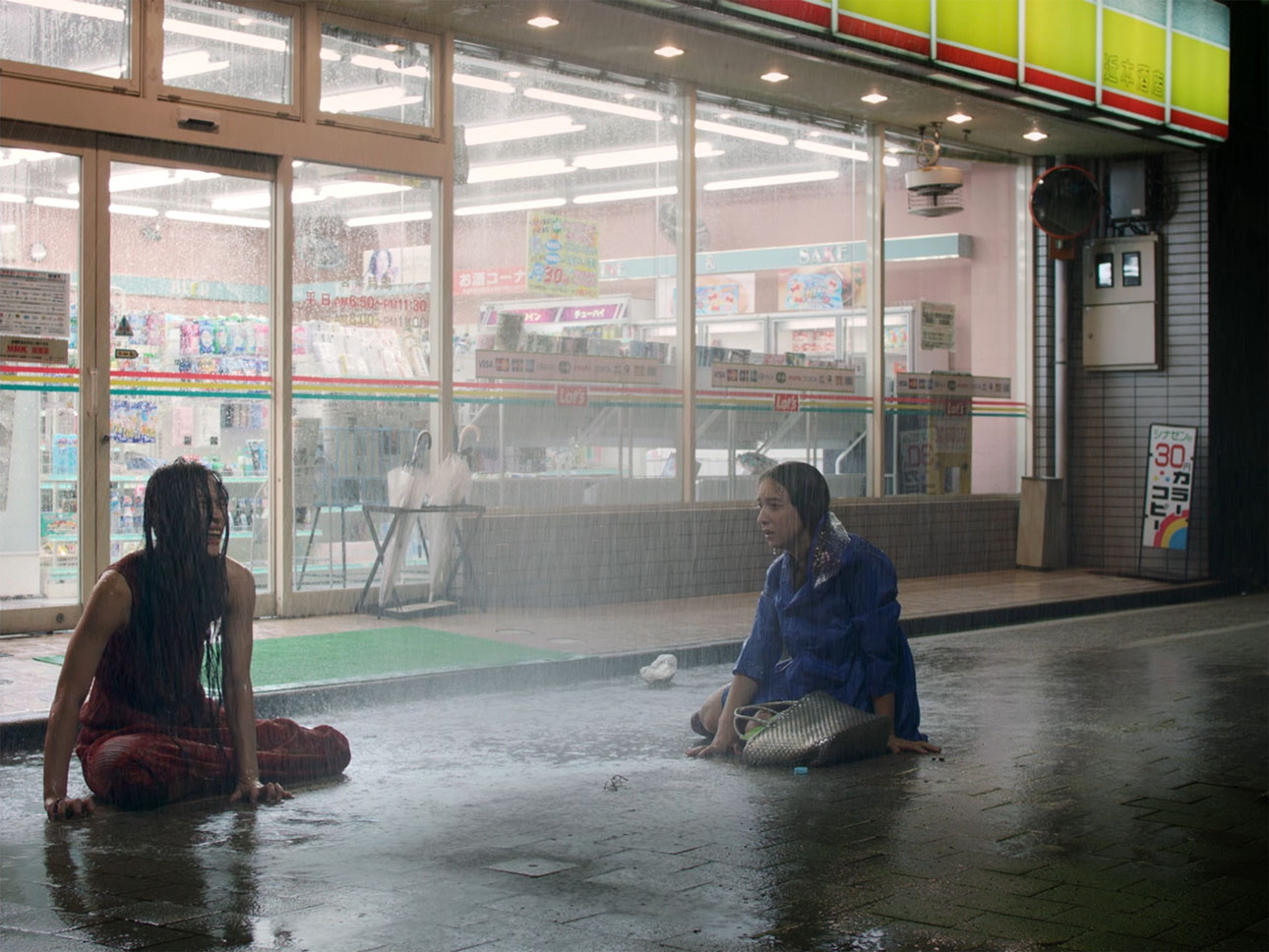
ある夏の日本を舞台に、故・高瀬皿男の謎めいた小説『N・P』 に魅了された4人の若者が、その1冊の本によって結びつけられてゆく様子が描き出される。翻訳と原作とはどう関係するのか?フィクションと現実とは?人生は、どこまでが決められた物語として演出されたフィクションなのか?そして、登場人物の間でしばしば起こる近親相姦的な相互作用の本質とは何なのか?主人公の加納風美を演じるのは、監督の実の妹でアーティストとして活動しているクララ・スピリアールト。風美と奇妙な友情を育む箕輪萃を演じるのは、振付家・ダンサーの川村美紀子。原作者・吉本ばななからは「この世に川村さん以上にリアルに翠を演じられる人はこれまでもこれからもいないと思う」と評された。劇中、台詞は聞こえない。俳優たちには物語のメモを渡し、自分たちの言葉で解釈して自由に話をさせながら撮影。その後、映像を無音にし、状況音とノイズミュージックを後付けして、字幕とインタータイトルで物語るという独自の手法がとられている。
In this silent film, set during one Japanese summer, four young people discover how one book unites them. All four are fascinated with the novel N.P by the late and mysterious Sarao Takase. The eponymous film N.P dissects the young characters’ complex web of relationships. How does a translation relate to the original? How does fiction relate to reality? And what is the nature of the often incestuous interaction between the protagonists?
The strikingly beautiful colours of the summer define the mood and atmosphere of the film, turning its complex, dark heart into a serene and glowing meditation on the young and on the influence of past experiences on one’s life.
https://np-film.com/
https://www.escautville.org/lisa-spilliaert-np
Film 2:
SPILLIAERT
2022, 29min. Escautville production
日本語・英語字幕 Japanese/English Subititle
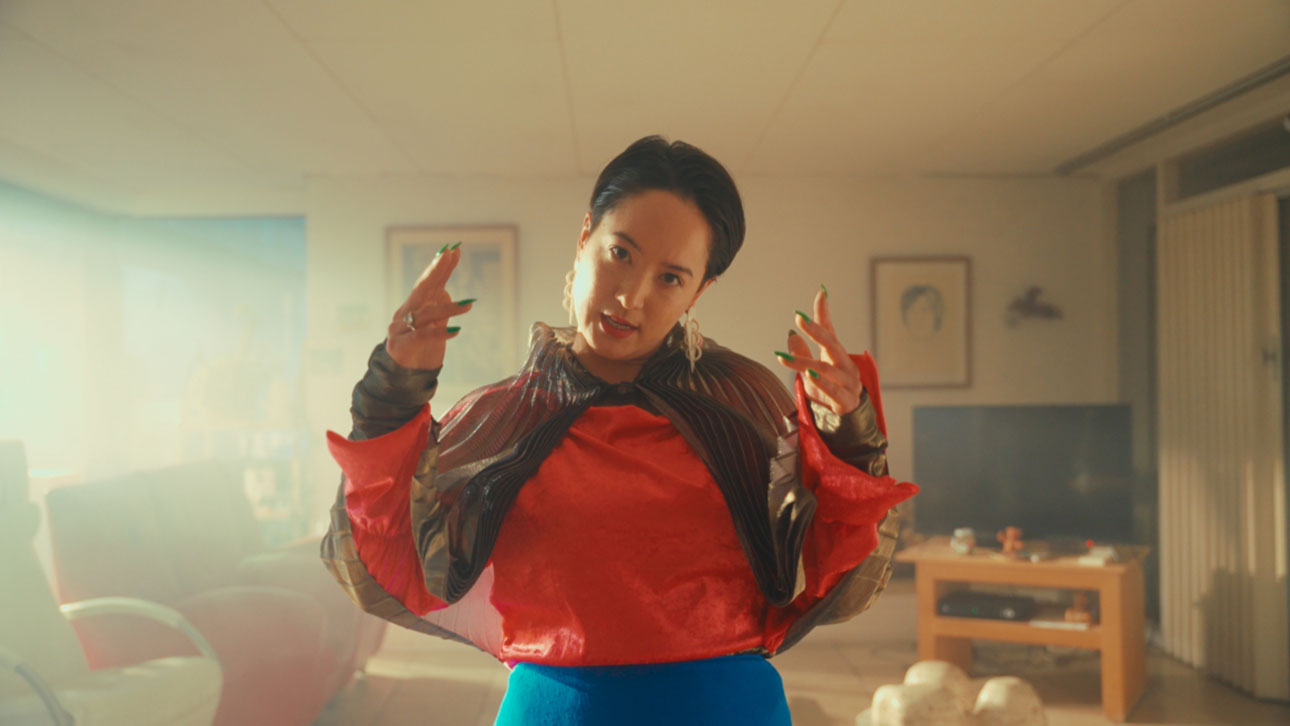
本作『SPILLIAERT』では、映画監督のリサ・スピリアールトが、著名なベルギー人画家レオン・スピリアールト(1881-1946)と自身の血縁関係を調べる。この血縁関係ははたしてフィクションなのか、そうではないのだろうか。この血縁関係によって、彼女は芸術家としての人生を運命づけられているのだろうか。自身の芸術性の起源に探りを入れる、ラッパーそして狂信的な系図学者としての姿を、彼女は本作を通して表すことになる。
In Spilliaert, filmmaker Lisa Spilliaert inquires into her blood relationship with the renowned Belgian artist Léon Spilliaert. Is she predestined to an artist’s life by this kinship, which may or may not be fictional? Is artistry genetically transferred? She reveals herself as a rapping, fanatical genealogist who probes into the origins of her artistic identity.
Lisa Spilliaert visits archives and museums, painting a picture of the hopeless search for documents and clues concerning her origins. She eventually ends up in the middle of her genealogical fantasies, represented in a ceramic sculptural family tree designed and made by her sister Clara. In Ostend’s Center for Genealogy, the protagonist tries to substantiate her claim of kinship with certificates and registers.
Spilliaert specialist Anne Adriaens-Pannier briefly introduces the historical figure of Léon Spilliaert (1881-1946) and his life in Ostend, his particular personality, his special relationship with the city of Ostend and the sea, his artistry and, of course, his outstanding oeuvre.
A descendant of Léon Spilliaert, who chooses to remain anonymous, relates his memories and his personal relationship to the oeuvre of his great-grandfather. Once again, the question arises of the difference between real memories and retrospectively constructed meaning.
Spilliaert's narrative structure is strung together by a number of rap poems, performed by Lisa Spilliaert. By choosing this form, she uncovers parallels and contrasts between rap music’s free identity construction and the strictly regulated structure of genealogy.
All these strands culminate in a strange encounter between Lisa and Léon Spilliaert, during which the absurdity of the desires projected onto the past is undermined.
https://www.escautville.org/lisa-spilliaert-spilliaert
発表者 | Presenter

リサ・スピリアールト | Lisa Spilliaert
1990年東京都生まれ。ベルギー・ゲントの王立美術アカデミー大学院写真科修了。系譜学への強い関心と自伝の物語性を題材とした作品を制作している。2014年ベルギー西フランダース州美術賞大賞受賞。以来ロッテルダム国際映画祭(2015・2017年)等で作品を発表、2015年にはモノグラフ出版。長編デビュー作である「N・P」はFIDMarseille(2020年マルセイユ・フランス)で初公開され、Berwick Film&Media Arts FestivalやUnderdox Munchenをはじめ数多くの映画祭で上映された。個展はこれまでBeursschouwburg(2017年ブリュッセル・ベルギー)とBrakke Grond(2022年アムステルダム・オランダ)で開催。ベルギー・アントワープのプロダクションEscautvilleのメンバーとして現在は新作映画を制作中。
Lisa Spilliaert (1990, Tokyo) lives and works in Ghent, Belgium. Her fascination for genealogy and the constant shifting between her cultural backgrounds are recurring motifs in her autobiographically inspired work.
Anthro-film Laboratory 50
In between Reality and Fiction : Collaborative Methods of Filmmaking with Migrants
Masterclass by Laurent Van Lancker
Date & Time: August 29th, 14:00–, 2023
Venue: National Museum of Ethnology, 2nd Floor, Seminar room 7
Senri Expo-Park 10-1, Suita, Osaka 565-8511 Japan
https://www.minpaku.ac.jp/en
reservation is required by Aug 25th kawase07@gmail.com
日時:2023年8月29日(火)14:00–, 2023
会場:国立民族学博物館2階 第7セミナー室
〒565-8511 大阪市吹田市千里万博公園10-1
https://www.minpaku.ac.jp/information/access
※発表と議論の言語は英語です。
※参加希望者は8月25日までにkawase07@gmail.comまで連絡、ご予約ください
Film 1. Kalès (2018) - 63'
directed by Laurent Van Lancker
An intimate and immersive perspective on the ‘Jungle of Calais’, evoked by a polyphony of men, stories and feels. A sensory journey through the daily life of migrants, characterized by survival strategies. A film of wind and despair, of fire and solidarity, of hope and hell.
In close cooperation with some former residents of the 'Jungle of Calais’, Laurent van Lancker offers a poetic and political view on the daily life of migrants, which he experienced during his frequent visits of the ‘Jungle’. Some of the images were filmed by the migrants themselves, evoking a great intimacy. Kalès offers a view on the lives of migrants in the European transit zones and the human capacity to adapt to all situations.
Trailer: https://vimeo.com/237484098
Film 2. we others (nous autres) (2022) - 90'
directed by Laurent Van Lancker
This fictional documentary was created through a collaborative process with contemporary migrants who embody and appropriate European emigration stories of the past and combine them with their own migratory experiences. A poetic and political film, in which autobiographical tales, archives and dreams of the past and the present, blend to evoke a sensory and epic experience.
Locked up and hidden in a truck, eight contemporary migrants from various countries try to survive the hunger and anguish of a long illegal journey across borders. Little by little, in the darkness of the lorry trailer, they get to know each other and share their life stories.
But the stories they tell are not only their own journeys, but also personal stories of a century ago from European emigrants (Ukraine, Russia, Italy, Belgium). This film articulates many resonances between past and present migrations and reveals how historical amnesia is alive in our perception of migration.
Trailer: https://vimeo.com/780524510
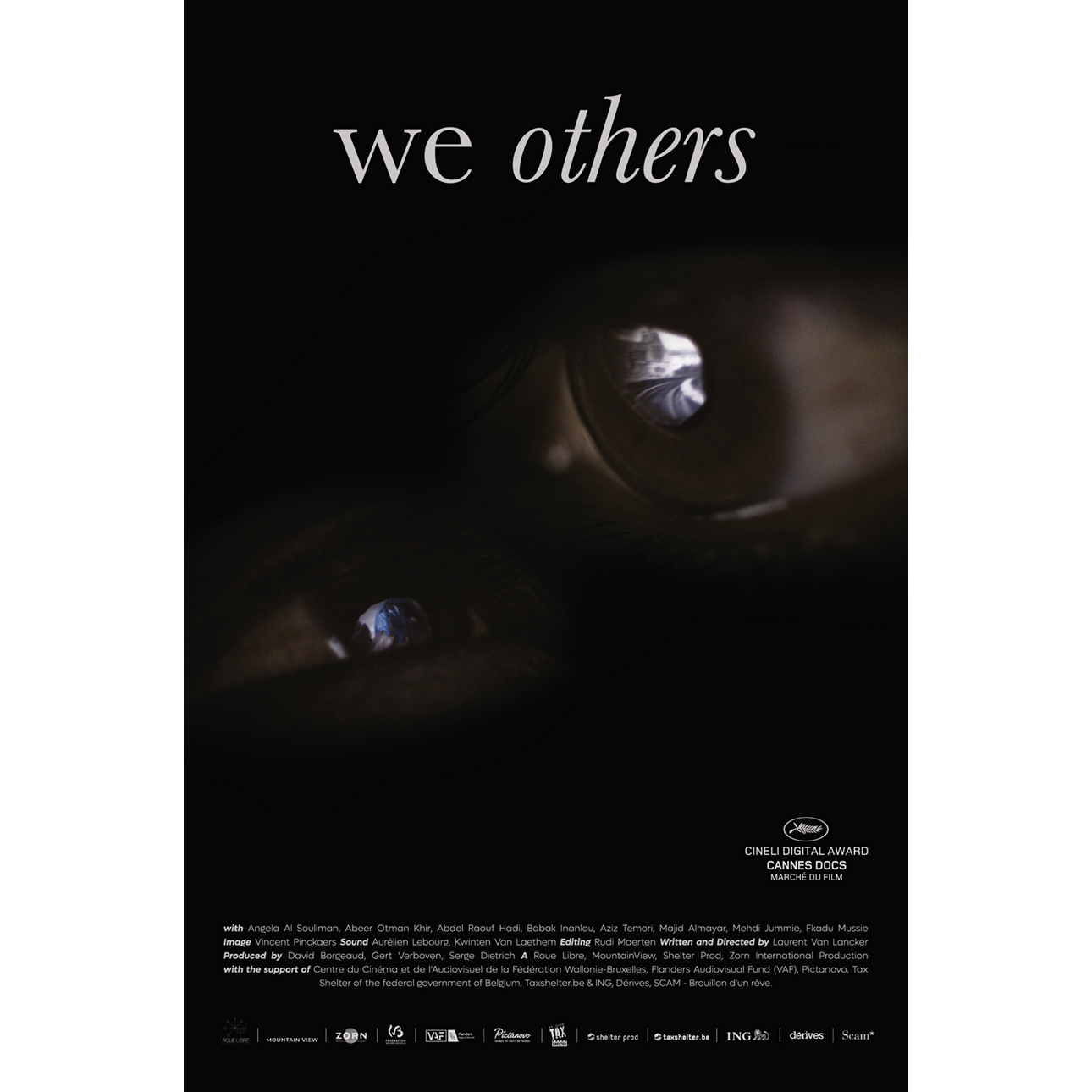
About the filmmaker/presenter

Laurent Van Lancker both studied Film and Anthropology, and holds a PhD in Audiovisual Art. He is Professor in Audiovisual Anthropology at Aix-Marseille University, where he started a research group on “Alternative Narrative Ethnographic Forms”. He co-founded SIC – SoundImageCulture project lab. He made fifteen films (experimental, documentaries and fictions) and won nine awards. His early documentary works explored social and religious themes. Followed by a series of short works called 'Experimental Ethnographies'. Lately, he made three long-feature films around migration themes. His works draw on various modes: Collaborative, Hybrid and Sensory cinema. They propose a dialogue between ethics and aesthetics, poetics and politics.
Anthro-film Laboratory 49
交渉するマルチモーダル人類学 ― 映像とテクストの〈あいだ〉、人類学知と先住民知の〈あいだ〉
日時:2023年7月9日 13:00-17:50
第1部:映像上映 (開場12:30) 13:00-14:00
第2部:ディスカッション 14:30-17:50
会場:立命館大学衣笠キャンパス 充光館シアター型教室(JK001)
〒603-8346 京都府京都市北区等持院北町56−1
https://goo.gl/maps/QFZXrxDPTEv2w1vS6
予約:https://forms.gle/Mt2mWpM1DqJk224VA(応募多数の場合は先着)
※使用言語は英語だが、日本語の同時通訳が入る。
同時通訳希望の方は申し込みフォームにチェックをお願いします。
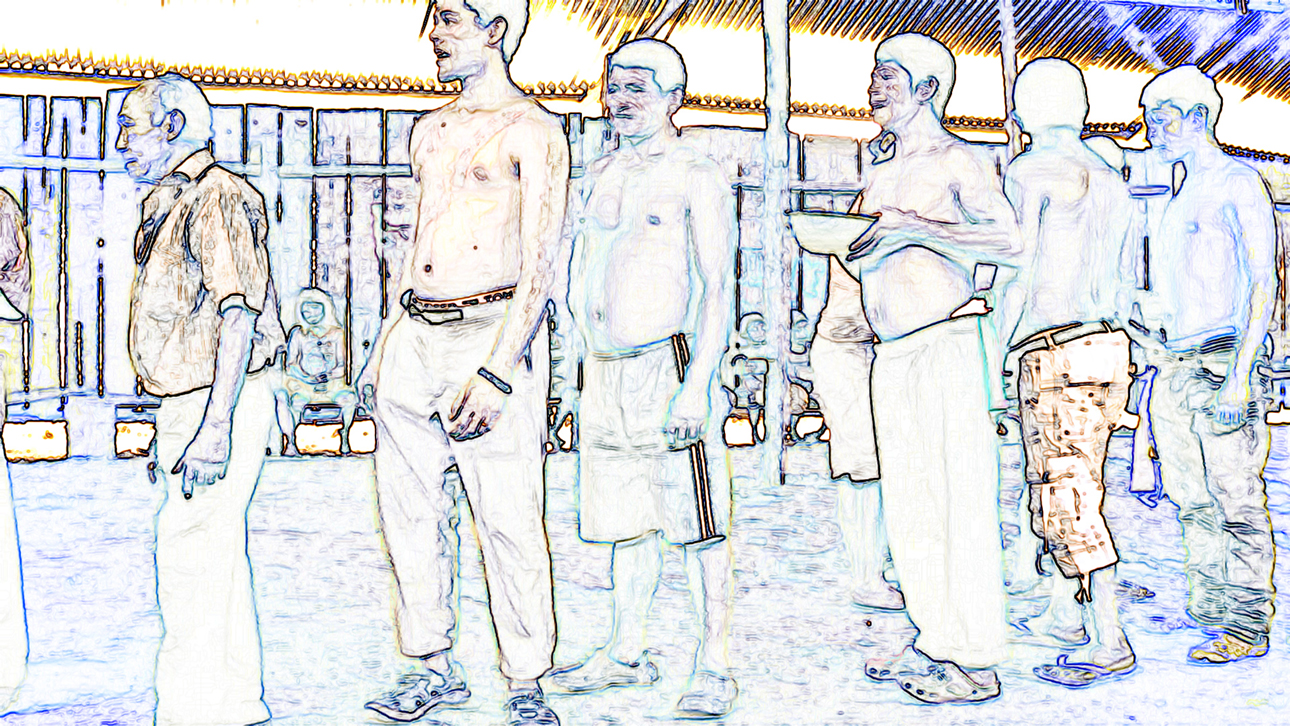
Kirainia
デジタル革命によってリアルとバーチャルの境界がより曖昧になり社会が複層化するのに対応し、アート、デザイン、ビジネス、学術など、既存の境界を越えた協働が盛んになってきている。そうした状況の中、文化人類学では、テクストに偏重する知を統合的かつマルチモーダル(多感覚的)な知へと再編成するマルチモーダル人類学の試みが注目されてきた。
本ワークショップでは、アメリカのマルチモーダル人類学界の中心で活躍しているファン・カストゥリジョン博士(ペンシルベニア大学1フェロー)を招聘し、映像視聴と言語討論を通じて、映像とテクスト、人類学知と先住民知といった複数の〈あいだ〉を往還し、新しくも根源的なマルチモーダル知のハイブリッド性について考察する。
第1部の「映像上映」では、南米コロンビアはクベオ人の失われた音について考えるカストゥリジョン博士の『Kirainia』(40分)、ルワンダとコロンビアというそれぞれのフィールドについてカストゥリジョン博士とふくだぺろが音とイメージのみで対話した音―イメージ・ダイアローグ『Read Letters and Asynchronous Perspectives(RLAP)』(10分)を視聴する。
第2部では、「ミュージッキング・アーカイヴをひもとく:北西アマゾンの楽器と音インフラのリメイク」と題し『Kirainia』等の映像を織り込んだカストゥリジョン博士のマルチモーダル書籍が扱うローカル知と人類学知の共同理論について議論する。そして『RLAP』を踏まえた「音―イメージ・ダイアローグで何が起きていたのか」ではカストゥリジョン博士とふくだの双方の視点からテクスト知とは異なり一意的な概念に収斂しない具象のポリフォニーとしての映像知の可能性と課題について考察する。
モデレーターには人類学ゲームの研究開発プロジェクトを推進する小川さやか教授(立命館大学)、ディスカッサントにアート=ベースド・リサーチ、リサーチ=ベースド・アートの交接点を探究してきた毛利嘉孝教授(東京藝術大学)を招いて、フロアを巻き込んだ闊達な議論を促進する。人類学にとどまらず、広く人文社会科学一般における実践的、多感覚的な未来知のあり方を日本とアメリカという2つの位置から国際的に探究する本会には、研究者のみならず、アーティスト、デザイナー、ビジネスマンなど様々な方の参加を歓迎すると共に、言語によって壁を作らないよう、英語と日本語の同時通訳を入れる。
1 ペンシルバニア大学では、2018年に研究教育機関である実験民族誌センター、アーティストと研究者の協働コレクティブCAMRA、メディア芸術祭SSMFを設立し、実践的かつ多感覚的な知へのシフトや学術と社会の新しい協働関係を掲げて、北米のマルチモーダルシーンを牽引してきた。
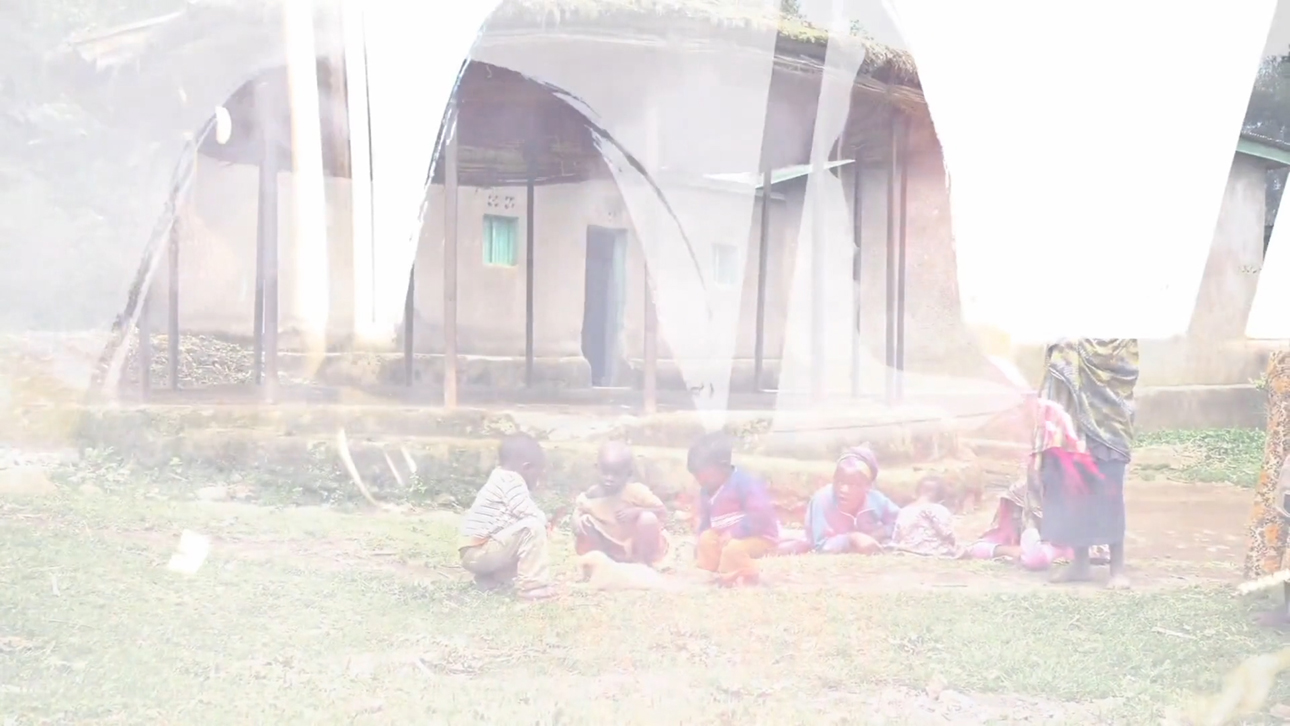
Read Letters and Asynchronous Perspectives(RLAP)
■プレゼンター
ファン・カストゥリジョン
アーキン芸術デザイン大学助教
ペンシルベニア大学ギルバート・セルデス・マルチモーダル・フェロー
コロンビア出身。マルチモーダル人類学者、民族音楽学者、メディア・アーティスト。地域としてはトルコとコロンビアの北西アマゾンを専門とする。主要な関心は、聴くことの理論、メディアアーカイブ、現代の治療芸術、ミメーシス、記述の諸様式など。脱植民地、視覚文化、音響/音楽文化や人物、空間、魔法、テクノロジーに関する先住民分析といった現代の議論と対話する作品を制作する。ペンシルバニア大学アネンバーグ・コミュニケーション大学院の初代ギルバート・セルデス・マルチモーダル・フェローであり、キプロスのアーキン芸術デザイン大学のサウンドアーツ&デザイン学部助教。
https://penntoday.upenn.edu/news/scholarship-beyond-written-word
ふくだぺろ
立命館大学大学院先端総合学術研究科博士課程
マルチモーダル人類学者、詩人、アーティスト。主なフィールドは中央アフリカの大湖地域。論文,映像,詩,写真,小説、スケッチといったメディアを複合的に用いて、現実がいかに創造されるかを探究する。マンチェスタ一国際映画祭2016実験映画賞受賞、『現代詩手帖』新鋭2020選出。
https://researchmap.jp/fukudapero
■モデレーター
小川さやか
立命館大学教授
1978年生まれ。京都大学大学院アジア・アフリカ地域研究研究科一貫制博士課程指導認定退学。博士(地域研究)。国立民族学博物館機関研究員、同助教、立命館大学先端総合学術研究科准教授を経て現職。主な著書に『都市を生きぬくための狡知—タンザニアの零細商人マチンガの民族誌』(2011年、世界思想社、第33回サントリー学芸賞受賞)、『チョンキンマンションのボスは知っている—アングラ経済の人類学』(2019年、春秋社、第8回河合隼雄学芸賞・第51回大宅壮一ノンフィクション賞受賞)、『「その日暮らし」の人類学』(2016年、光文社新書)など。
https://research-db.ritsumei.ac.jp/rithp/k03/resid/S001094
■ディスカッサント
毛利嘉孝
東京藝術大学教授
社会学者。専門はメディア/文化研究。東京藝術大学・大学院国際芸術創造研究科教授、音楽学部音楽環境創造科教授、未来継承創造センター長。特に現代美術や音楽、メディアなど現代文化と都市空間の編成や社会運動をテーマに批評活動を行う。主著に『バンクシー:アート・テロリスト』(光文社新書)、『ストリートの思想』(日本放送出版協会)、『文化=政治』(月曜社)、『増補 ポピュラー音楽と資本主義』(せりか書房)、編著に『アフターミュージッキング』(東京藝術大学出版会)ほか。
http://mouri.geidai.ac.jp
本会は、立命館大学大学院先端総合学術研究科によって主催され、ペンシルベニア大学アネンバーグ・コミュニケーション大学院学部長の支援によって、日本文化人類学会近畿地区研究懇談会とともに共催されています。


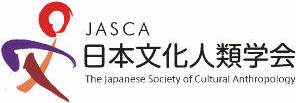
Anthro-film Laboratory 48
Film Screening and Discussion with Inge Daniels
Date & Time: December 16th, 15:30– , 2022
Venue: National Museum of Ethnology, 2nd Floor, Seminar room 7
Senri Expo-Park 10-1, Suita, Osaka 565-8511 Japan
https://www.minpaku.ac.jp/en
reservation is not required
日時:2022年12月16日(金)15:30–, 2022
会場: 国立民族学博物館2階 第7セミナー室
〒565-8511 大阪市吹田市千里万博公園10-1
https://www.minpaku.ac.jp/information/access
※発表と議論の言語は英語です。
※予約等必要なし
She Waves At Me
Directed by Inge Daniels, 2022, 20 min.
‘She Waves At Me’ explores what it feels like to be an aging body in an aging housing estate. The film, based on 18 months of ethnographic fieldwork in Central London, juxtaposes the intricate care that goes into maintaining the buildings and their surroundings with elderly inhabitants’ struggles and strategies to create safe and comfortable homes for themselves and their loved ones.
Inge Daniels Professor, University of Oxford
https://www.isca.ox.ac.uk/people/dr-inge-daniels
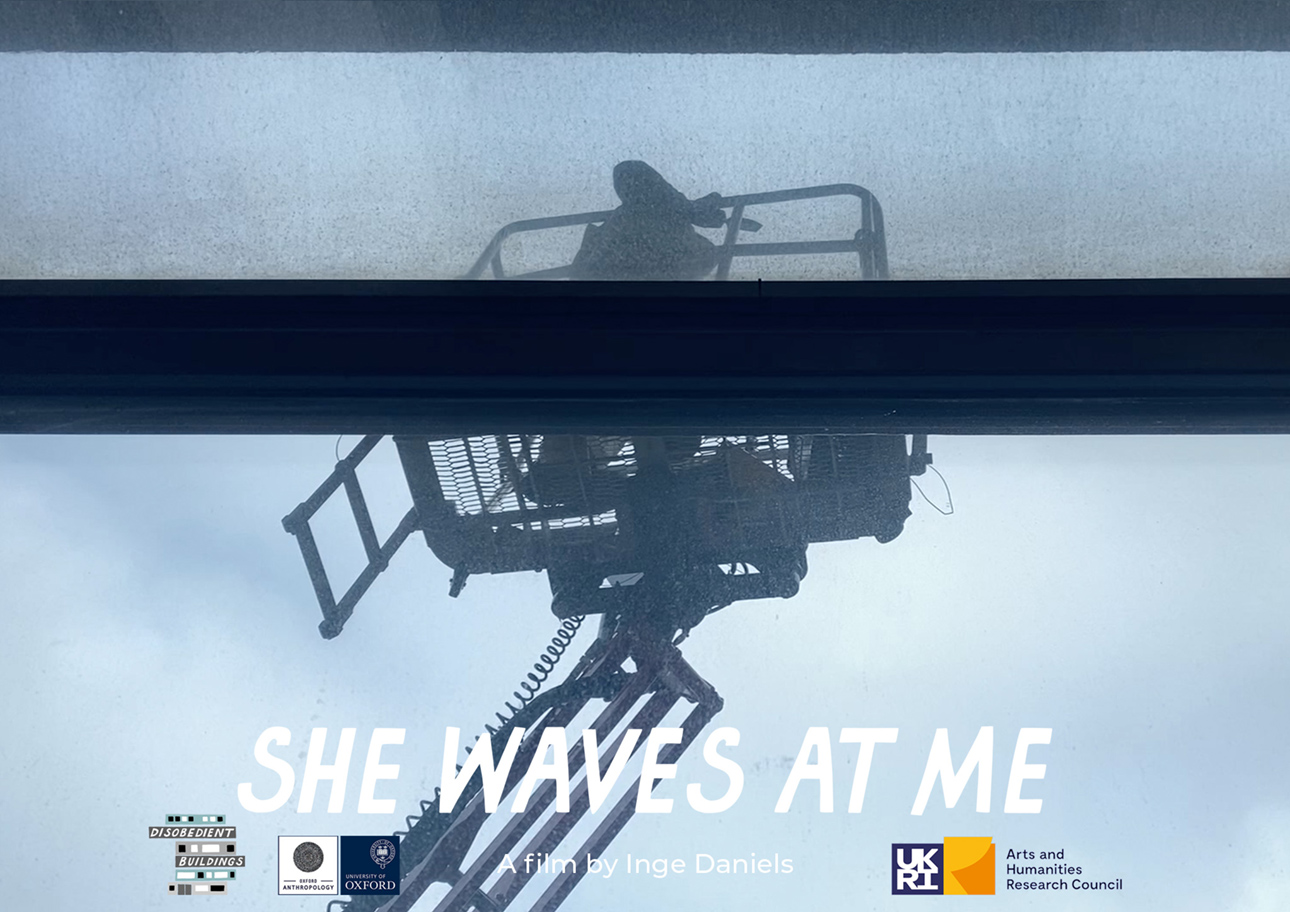
Anthro-film Laboratory 47【this event is canceled】
Palimpsest of the Africa Museum
- Film Screening and Discussion with Matthias De Groof -
Presenter : Matthias De Groof
Date & Time: July 21st, 15:00–, 2022
Venue: National Museum of Ethnology, 2nd Floor, Theater Room
Senri Expo-Park 10-1, Suita, Osaka 565-8511 Japan
https://www.minpaku.ac.jp/en
reservation is required by July 19th kawase07@gmail.com
日時:2022年7月21日(木)15:00–
会場: 国立民族学博物館2階 シアタールーム
(参加希望者が多数の場合、会場を別室へ変更します。)
〒565-8511 大阪市吹田市千里万博公園10-1
https://www.minpaku.ac.jp/information/access
※発表と議論の言語は英語です。
※参加希望者は7月19日までにkawase07@gmail.comまで連絡、ご予約ください
Palimpsest of the Africa Museum
Directed by Matthias De Groof, 2019, 69 min, French, Nederlands (English Subtitles)
Synopsis
In 2013, the Royal Museum for Central Africa closes for renovation. Not only the building and the museum cabinets are in need of renewal: the spirit of the museum has to be brought into this century. In COMRAF, a board of advisers, the process of decolonization leads to fierce discussions.
While disassembling the metre-high statue of Leopold II, his ghost wanders through the corridors and halls of the museum. The renovation of the Museum for Central Africa is an opportunity to give a modern interpretation to the museum's existence and mission. The stuffed wild animals, the traditional masks and the dusted artifacts are to make way for a more complete, modern view on Africa. The museum calls on the help of experts and initiates consultations with representatives of African organizations that have joined forces in a structure set up for this purpose, COMRAF. Exhibiting the minerals from the Congolese soil is no longer just a matter of scientific explanation. We must also consider the horrific conditions in which these raw materials were mined and the disruptive consequences for Congolese society. But in order to completely dislodge the majestic building from its colonial form, more fundamental questions also need to be asked. Who is looking at whom here? And whose story is being told here?
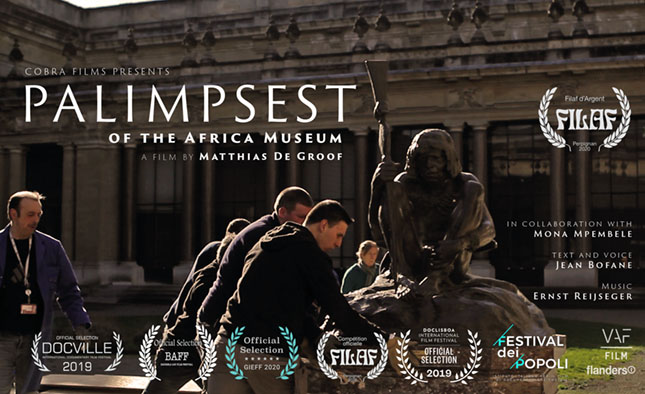
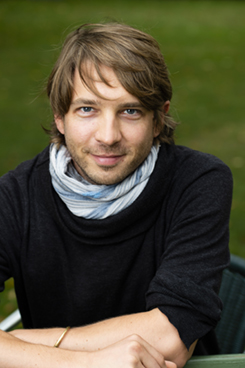
About the Filmmaker
Matthias De Groof is an award-winning filmmaker whose films (Lobi Kuna, Palimpsest…) have been presented at venues like the IFFR, FIFA and the Berlinale. His edited book on Lumumba in the Arts is published with Leuven University Press, and reached the top-100 "books to escape the news" (LitHub). He has held fellow appointments at the New York University’s Tisch School of the Arts as a Fulbright scholar; the Helsinki Collegium for Advanced Studies; and the Africa Multiple Cluster of Excellence of the Bayreuth University. Currently, De Groof is guest-professor at the UA and VUB, and postdoctoral researcher at the Waseda University in Tokyo. He will continue his research as a Marie Skłodowska-Curie Fellow at the University of Amsterdam and the Rachel Carson Center for Environment Humanities.
Anthro-film Laboratory 46
制作過程の映画(2作品)のブラッシュアップ
日時:2022年6月20日(月)16:30–
会場: 国立民族学博物館(館内会場については、参加者の数にあわせて決めます)
〒565-8511 大阪市吹田市千里万博公園10-1
http://www.minpaku.ac.jp/museum/information/access
※発表と議論の言語は日本語です。非日本語話者の参加者を含む場合は、英語も使用します。
※今後の新型コロナウイルスの感染状況次第では開催方法を変更する可能性もあります。
※参加希望者はkawase07@gmail.comまで連絡、ご予約ください
作品1
我は汝を想起する:現代中央アジア草原地帯のバフシ(仮)
発表者:和崎聖日(中部大学人文学部)
概要
現代中央アジアのオアシス農耕定住地帯には、ペルシア系を中心とする定住民だけでなく、歴史のさまざまな段階で定住化したモンゴル・テュルク系の遊牧集団を出自とするムスリムたちも数多く暮らしている。本作では、こうした遊牧集団のうち、コングラト(qoʻngʻirot)と、ジュズ(juz)またはユズ(yuz)と呼ばれる2つの集団を取り上げる。
本作は、これらの社会で現在も行われている病気治療の儀礼にフォーカスしたものである。そこでは、バフシ(baxshi)と呼ばれる女性の民間治療師(霊媒師)が幽精や精霊など不可知の存在と交流し、また神(アッラー)の名を連祈し、神に呼びかけることによって、病気の治癒が試みられる。なお、「バフシ」の語源には諸説があり、サンスクリット語、モンゴル語、ブリヤート語、ウイグル語などを起源とするとされる。いずれにせよ、この語は中国語では「博士」(はくし)に相当し、日本語との連続性も指摘されている。本作は「バフシ」への注目をとおして、近代国民国家の枠組みを大きく超えてユーラシア大陸に広がる、緩やかに共通した遊牧文化の存在を実証的に検討する営みの1つとしても位置付けられる。
30-40分 (日本語字幕)
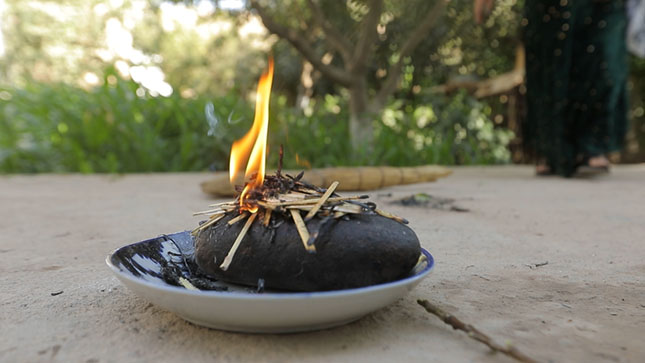
<我は汝を想起する(仮)>
作品2
There is No Sound of Kane Gong Here This Year Again:
Record of 2021 Japanese Gong Ensemble in Kitashida, Saga Prefecture
発表者:古澤瑞希(総合研究大学院大学)
概要
This documentary film focuses on folk performance art involving an ensemble of Japanese gongs.
These performances are very rare in Japan and are primarily practiced in Northern Kyūshū, including the Saga prefecture; they perform with gongs, drums, and flutes. This documentary recorded the activity of the Kitashida-no-Kane-buryū (Gong Ensemble of Kitashida) in 2021 as they practiced in Kitashida section of Ōaza-Kuma, Shiota town, Ureshino city, Saga prefecture.
Through interviews with local people in 2021, this film will discuss the possibilities and hopes of overcoming the situation of lack of flute players.
30分以内(英語字幕)
The 46th World Conference of the International Council for Traditional Music発表予定
Anthro-film Laboratory 45
ドイツの映像人類学派HMKW Berlin, M.A. Visual and Media Anthropology
- 修士論文の中間発表およびディスカッション-
開催方法:Zoomミーティングによる開催(以下のフォームより申込ください。参加無料。)
https://docs.google.com/forms/d/e/1FAIpQLSf8BeOUcbOOy1j_k6aMXMRtVXsrcUbu9y0KWODIkzrl97SrcA/viewform
日時:2021年10月25日 (月) 14:00–
※発表と議論の言語は日本語です。
※お問い合わせ先:川瀬慈(kawase07@gmail.com)
発表1.
他者の視点 — 日本の難民に対するイメージを通して
発表者:櫻井 環(HMKW Berlin, M.A. Visual and Media Anthropology)
概要
COVID-19の影響による水際対策が強化される前、2019年に日本で難民申請した外国人10375人のうち、認定を受けたのは44人、認定率は0.4%だった。この数から想起されるのは、日本政府の受け入れにおける諸問題だけではなく、"難民"というイメージは日本では何として捉えられているのかという疑問である。
本研究では、そのような日本において”難民”がどのようなイメージとして認知されているかを調査するインタビューや、メディア研究を通して、映像作品を制作する。「なぜ私たちは難民について知る必要があるのか?」これは言い換えれば、なぜ私たちは「他者」を知る必要があるのか?という問いである。他者を通して自分のアイデンティティをどのように考えているのか、”難民”という政治状況も国籍も経験も全く異なる人を想起する視点から考察する。
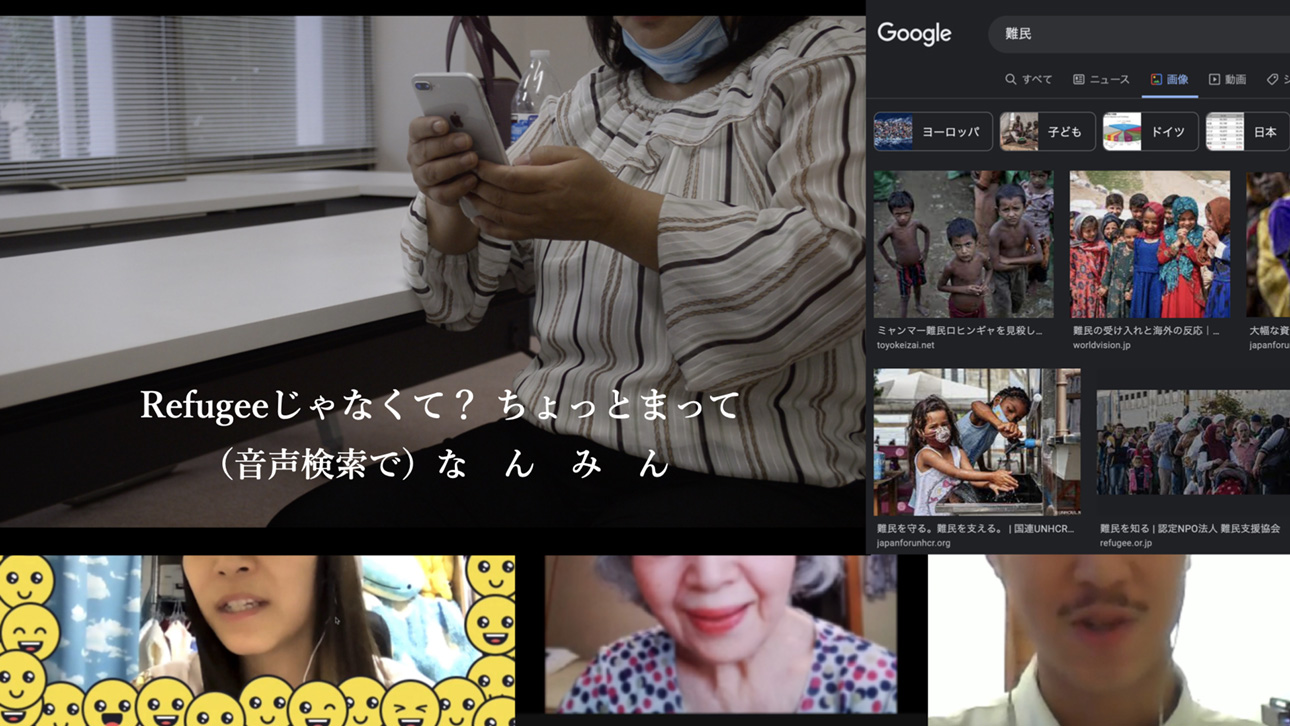
難民当事者や複数の世代にわたって実施したインタビュー映像の一部
発表2.
植物になること:シピボ族のシャーマンのディエタと夢分析(仮)
発表者:渡邊 由美(HMKW Berlin, M.A. Visual and Media Anthropology)
概要
ペルー東部アマゾンに住むシピボ族の“世界(Neto)”は, 一連の規則と多様な存在者を包摂する自然から成る. 彼らの世界では, すべての存在者が空気(Niwe)を吸うことで命を得ると同時にNiweを媒介に繋がっているため, 人間の好ましくない性質や病の要因にも見える/見えない存在者が発するNiweの影響を考慮する必要があるという.
Onayaと呼ばれるシャーマンは, 薬用植物の力を用いることでこのような見えない存在者が放つNiweを知覚し, 病を治癒する治療師としての役割を担ってきた. 彼らはDietaと呼ばれる修行中にみる夢を通して, 薬用植物のスピリットとの間に相互扶助的な信頼関係を構築することで, 植物のもつ治癒力を授かるという.
本論文は, シャーマン歴30年超の2人のシャーマンがDieta中に見た夢とその解釈の仕方に焦点をあてることで, シピボ族のシャーマンたちがどのように植物との関係性を構築しシャーマンとしての能力を獲得していくのかを明らかにしようとするものである.
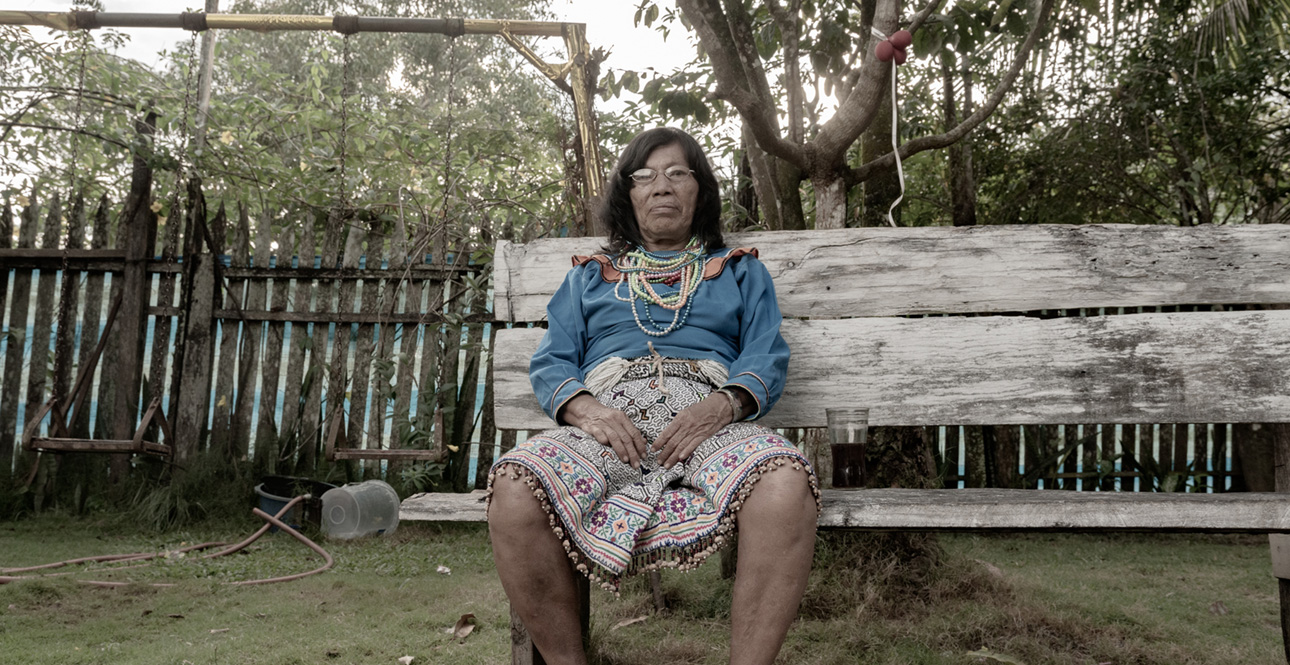
シピポ族の女性シャーマン
発表3.
社会空間的排除と周縁化される人々の〈生きられた経験〉の可視化の試み — 東京におけるホームレスネスを事例として
発表者:丹羽 理(HMKW Berlin, M.A. Visual and Media Anthropology)
概要
本論文は、空間を構成する本来的な異種混淆性と生成変化に注目するマッシーの空間認識論(Massey, D. 2005. For Space)を理論的枠組みとしつつ、東京における野宿者の人々のエスノグラフィーと視覚メディアによる可視化の実践を通じて、社会空間的排除の問題を再帰的に検討することを試みるものである。
近年のグローバリゼーションの急激な進行とともに、後期資本主義社会では資本の主導による都市空間の再編が加速している。その過程は都市空間の統一的なスペクタクル化を増長しながら、同時に、ジェントリフィケーションや公共空間の私有化などの社会空間的排除を伴い、“逸脱した他者”としてスティグマ化された人々—貧困者や野宿者たちを周縁化する機制を強めていく。スペクタクルと排除の共存というこの現代的課題を考察するとき、そのダイナミズムと複雑性の下に不可視化された、排除された人々の多様な軌跡(trajectories)や物語り(narratives)を視覚的に前景化することは、有効なアプローチとなり得ないだろうか。
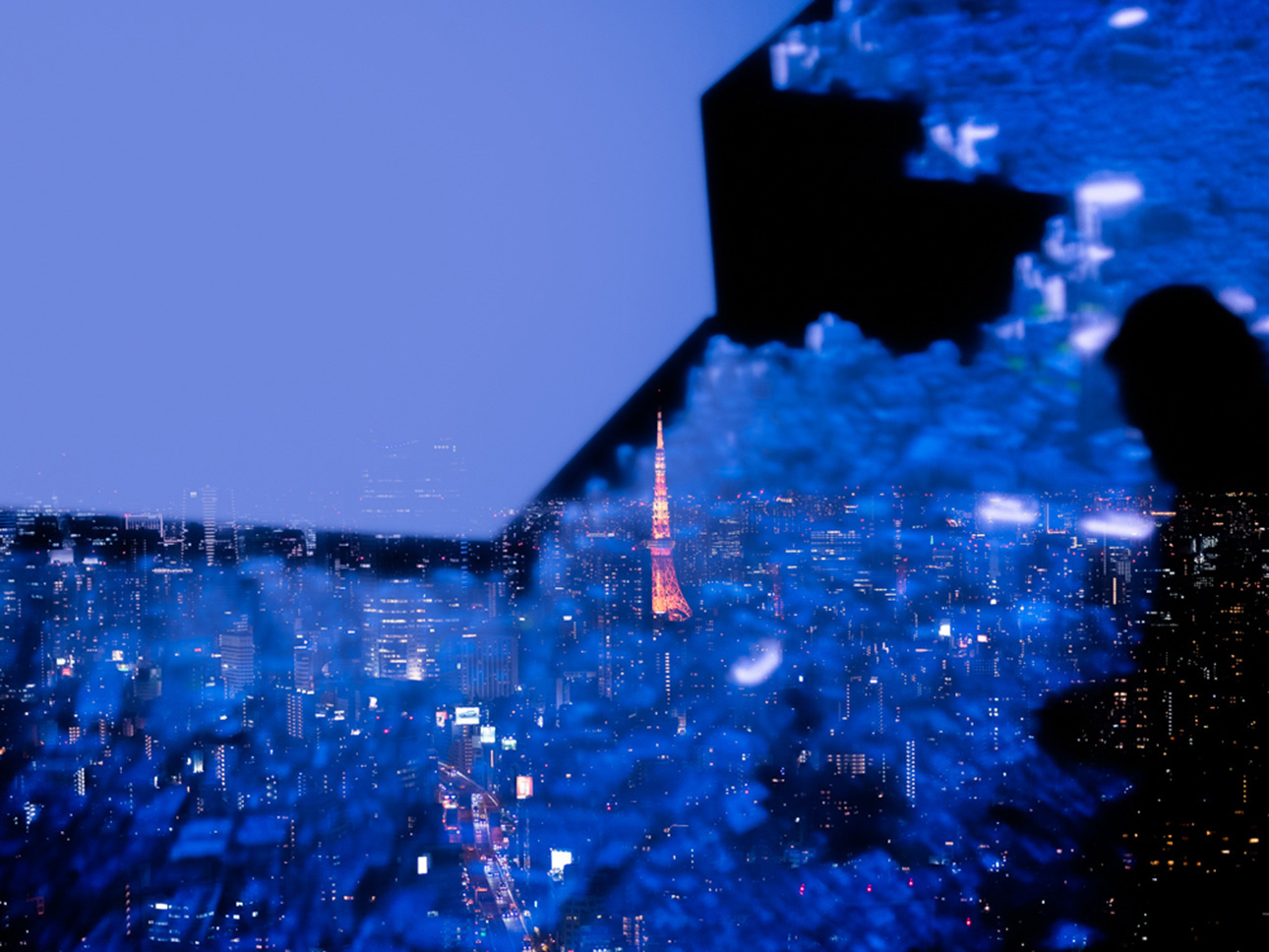
渋谷の再開発地から眺めた東京の夜景
発表者のプロフィール
櫻井 環(さくらい たまき)
2016年立教大学法学部政治学科卒業後、映像や技術を使用した空間演出や作品を制作する会社で勤務したのち、HMKW Berlin, M.A. Visual and Media Anthropologyに入学。2013年より、日本における難民の2世の学習支援事業などに取り組んでおり、現在は難民連携委員会(RCCJ)の学習支援事業のコーディネーターとして活動中。
渡邊 由美(わたなべ ゆみ)
熊本生まれ。フリーランスの経営コンサルタントとして活動する傍ら, 2010年にシピボ族の植物療法に出会いその虜になる。2017年7月よりペルーアマゾンに活動の拠点を移し, シャーマンと暮らしながら植物療法を学ぶ。2019年10月HMKW Berlin, M.A. Visual and Media Anthropology入学。
丹羽 理(にわ さとる)
2009年よりフォトジャーナリストとして活動を始める。主な取材歴としてはアラブの春におけるエジプト革命、フィリピン北部カリンガ州の違法金鉱山、東日本大震災など。視覚表現のオルタナティブな手法とその可能性を求めて、2019年よりHMKW Berlin, M.A. Visual and Media Anthropologyへ参加。
HP: https://satoruniwa.net/photography/
Anthro-film Laboratory 44
The Image-making from Africa, Part 2 -Perspectives from Visual Anthropology- (Zoom Meeting)
Date: 2021 March 16th 17:00~19:00 (Japan time)
This event is co-organized by African Studies Center, Tokyo University of Foreign Studies
and Kanto Branch of Japan Association of African Studies.
※Please submit the online registration form by March 14th.
Note that the meeting will be recorded for future publication.
Ethnographic film practices of various kinds from across the globe are entwined with new forms of audiovisual expressions and approaches. These practices detach visual anthropology from its Western colonial legacy and expand the horizon of knowledge creation, storytelling and collaborative research in humanities. Following the previous discussion in Part1, we dig into prospects and challenges facing the image-making on Africa more deeply through watching and discussing about two graduation films of the master course in Maroua University in Cameroun.
Moderators:
Itsushi Kawase
National Museum of Ethnology, Japan
Ran Muratsu
African Studies Center, Tokyo University of Foreign Studies
Takanori Oishi
African Studies Center, Tokyo University of Foreign Studies
Film 1
Ladde salori, the impossible life in the bush
Filmmaker: Hamidou Hamidou
Year of production: 2020
Location: Cameroun
Duration: 36 minutes
Sound: mono
Language: Fulfulde, French (English and French Subtitles)
Synopsis
The film “Laddé Salori” the impossible life in the bush” portrays three Mbororo Fulani refugees’ brothers from the Central African Republic living in Meidougou, a small village in rural Cameroon. Due to violence and abduction by criminals throughout the bush areas in their region, they can no longer live their traditional pastoralists’ way of life. The days of freedom and wealth are over and their large herds have disappeared. Their cattle have been sold away to pay ransoms. The nomads had to flee and have been forced to settle. The film follows the three men’s everyday life struggle. They are obliged to start cultivating and to send their children to school. Adapting to a monetary economy in sedentary lifestyle is challenging and humiliating to them.
Film 2
Happier than a millionaire (A l’aise plus qu’un millionnaire).
Filmmaker: Atouna Michel
Year of production: 2019
Location: Maroua, Cameroon
Duration: 24 minutes
Sound: mono
Language: Fulfulde (English Subtitles)
Synopsis
Tchistchaz and Daylon, young men of 27 years each and their friends made narcotic drugs. For them, consuming the plethora of excitement is a way to exist in a society where young people are looking for a landmark. Exploring several drugs to the point of developing circumvention strategies in the face of societal prohibitions, our young interlocutors let us enter their world to present their visions of the world to us.
Profile of Presenters
Mouadjamou Ahmadou
Mouadjamou Ahmadou is an ethnographic filmmaker, interested in the visual aspects of culture, social changes and adaptation.
He holds a PhD in Visual Anthropology at the University of Maroua in Northern Cameroon. His research interests include social and economic transformations among peasants and pastoralists.
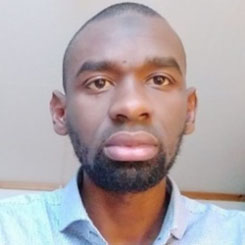
Hamidou Hamidou
Hamidou is a PhD candidate at the University of Maroua in Cameroon.
He made ethnographic films in Northern Norway societies and in Northern Cameroon.
The new one is : The impossible life in the bush, Ladde salori.
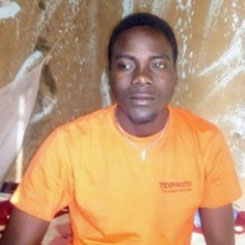
Atouna Michel
Atouna Michel is a PhD candidate in Visual anthropology at the University of Maroua in Cameroon.
He made a film: Happier than a millionaire. The film won a student competition prize at the international film festival (International sahelian film festival).
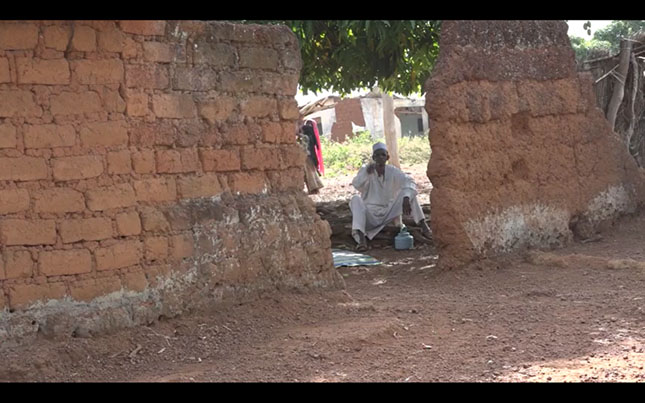
Ladde salori, the impossible life in the bush
Anthro-film Laboratory 43
“Maya Deren: A fore figure of an artist-anthropologist” (Zoom Meeting)
Date and Time: 2021 January 26th 15:30~17:00 (Japan time)
※Request for participation is required by January 24th to: kawase07@gmail.com
The zoom link will be sent to participants.
Note that the meeting will be recorded for future publication.
Speaker: Arjang Omrani (Temporal Lecturer, University of Münster)
Discussant: John Wells (Temporal Lecturer, Kanazawa University)
In her review of Maya Deren's legacy, Jeanette DeBouzek (1992) asks: "how can an avant-garde artist's sensibility be usefully applied to ethnographic work?" In following her path, this lecture-presentation explores Deren's theoretical and practical endeavors in relation with art (cinema), ethics and anthropology. These ideas and perspectives will be overviewed, especially, with considering her project in Haiti as the main focal point, This journey, conclusively tends to envisage a fore figure of an artist-anthropologist, through the existing affinities between Deren's ideas and works with the more contemporary and progressive approach to anthropology.l
About the Speaker:
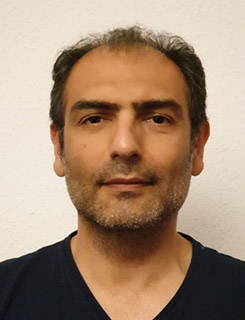
Arjang Omrani, Filmmaker and Audio-visual Anthropologist, born in 1972 in Tehran.
Master Degree in Visual and Media Anthropology from Free University of Berlin.
Member of the research group of Culture & Education and PhD candidate at the University of Gent. Lecturer at the Visual Anthropology, Media and Documentary Practices Master course at the university of Muenster (Germany). Engaged with Audio-Visual, sensorial and performative modes of presentation in Anthropological studies and human life with major focus on Phenomenology and Embodiment, Migration and Transculturality. Produced several feature length and short films-videos that have been presented in different international film festivals, Academic programs and art exhibitions.
Actively presenting his theoretical and practical works in various international symposium and conferences.
Anthro-film Laboratory 42
The Image-making from Africa, Part 1 -Perspectives from Visual Anthropology- (Zoom Meeting)
Date: 2020 June 26th 17:00~19:00 (Japan time)
This event is co-organized by African Studies Center, Tokyo University of Foreign Studies.
※The number of participants will be limited to 30 people.
Please submit the online registration form by June 23rd.
We will send the zoom page, related films (vimeo with password)
and website links for the meeting to participants beforehand.
Note that the meeting will be recorded for future publication.
Ethnographic film practices of various kinds from across the globe are entwined with new forms of audiovisual expressions and approaches. These practices detach visual anthropology from its Western colonial legacy and expand the horizon of knowledge creation, storytelling and collaborative research in humanities. The aim of this Zoom meeting of anthropologists/filmmakers from Cameroon, Ethiopia, Mali, and Japan is to introduce Ethnographic films and visual anthropological research activities in African countries. We identify prospects and meet the challenges facing the image-making from/on Africa.
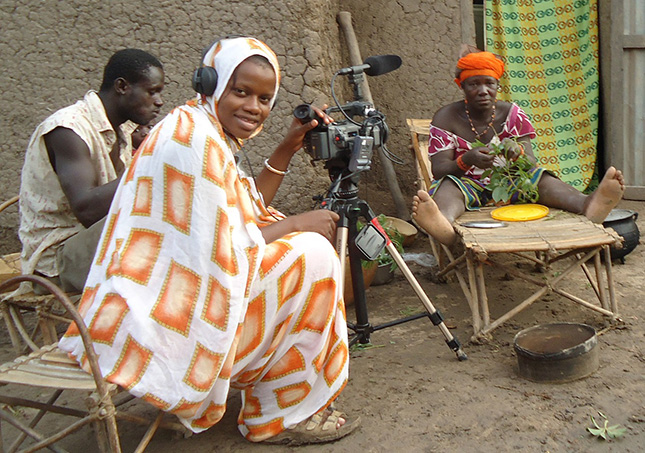 The shooting of 'Djeneba' Bata Diallo (2011)
The shooting of 'Djeneba' Bata Diallo (2011)
Moderators:
Itsushi Kawase
National Museum of Ethnology, Japan
Ran Muratsu
African Studies Center, Tokyo University of Foreign Studies
Solomon Mekonen
Visual and Media Anthropology, Freie Universität Berlin/HMKW
Speakers:
Mouadjamou Ahmadou
The University of Maroua, Cameroon
Mitiku Gabrehiwot
Mekelle University, Ethiopia
Bata Diallo
The University of Bamako, Mali
Solomon Mekonen
Freie Universität Berlin/HMKW
Profiles of Speakers:
Mouadjamou Ahmadou
Mouadjamou Ahmadou is an ethnographic filmmaker, interested in the visual aspects of culture, social changes and adaptation.
He holds a PhD in Visual Anthropology at the University of Maroua in Northern Cameroon. His research interests include social and economic transformations among peasants and pastoralists.
Mitiku Gabrehiwot
Mitiku Gabrehiwot is an Associate Professor of the Department of Anthropology, Mekelle University in Ethiopia. He uses visual media to explore social change and cultural identity of the people in Tigray region. His current research projects include change and continuity and Political Anthropology.
Bata Diallo
Bata Diallo is a PhD candidate at the University of Bamako in Mali. She made a MA film "Djeneba, a Minyanka woman of Southern Mali" for Visual Cultural Studies, University of Tromsø.
The film is an hour-long chronicle of the quotidian life in rural Mali from a woman’s point of view. It focuses on Bata engages Djeneba's life-world in observational and participatory style based on the intimate conversation with protagonists.
Bata currently works on analysis of the political idea of Fily Dabo Sissoko (1900-1964), one of the founding fathers of modern Mali.
Solomon Mekonen
Solomon Mekonen is a Berlin-based filmmaker, interested in visual storytelling grounded in anthropology.
He holds a master’s degree in Visual and Media Anthropology from Freie Universität Berlin. His research interests include decolonisation, queer studies and imagining alternative futures.
Website: https://solomonmekonen.com/
Vimeo: https://vimeo.com/user21987400
Twitter: twitter.com/Leuleselam
 The shooting of 'Emails to My Little Sister' Solomon A. Mekonen (2018)
The shooting of 'Emails to My Little Sister' Solomon A. Mekonen (2018)
Anthro-film Laboratory 41
Film Screen and Discussion about "Distributed Multimodalities:
Ethnographic experiments in Memory and Performance" (Zoom Meeting)
Date: 2020 June 20th 10:00~12:00 am. in Japanese time
※Request for participation is required by June 17th to tamagonotamago@gmail.com
The Zoom link will be sent to participants.
The number of participants will be limited to 30 people.
Film Screen and Discussion about "Distributed Multimodalities: Ethnographic experiments in Memory and Performance" (Zoom Meeting)
This session aims at discussing about the theme "Distributed Multimodalities: Ethnographic experiments in Memory and Performance", which originally took place as a panel of the International Biennial Online Conference Distribute 2020, organized by the Society for Cultural Anthropology (SCA) and the Society for Visual Anthropology (SVA). The 40 min. panel consists of 5 min. segmented presentations made by 8 anthropologists or performers/artists. By discussing this panel, we would like not only to deepen the understanding of the topic, but also to envision the future of multimodal panel presentations and ethnographic collective works.
Program
・Watch the Panel (40min. Link will be distributed before the session) "Distributed Multimodalities: Ethnographic experiments in Memory and Performance"
https://distributedmultimodalities.carrd.co/
・Presentations by panel organizers and watch the film of Can Tamura "Okinami(沖波)”24min.
http://japandocumentary.com/
・Discussions about the Panel
Panel Abstract
This panel explores historical, social, and cultural memory as distributed phenomena in the context of performance. We envision performance taking several ethnographic modes (with the caveat that these modes are not an exhaustive list): the practice of ethnography as being inherently dramaturgical and performative (Denzin 2003); the ways in which our research participants may perform in the presence of a researcher; the embodied, performative use of multimodal tools, such as the taking of photos, the recording of video, and the sharing of digital media; performance as a way of disseminating ethnographic data, whether that be through photographs, films, dance, theatre, music, soundscapes, etc.; and performance as a theoretical stance—a hacking of the Aristotelian notion of “phronesis,” an applied, active wisdom that is set apart from analytical knowledge (episteme) and technical knowledge (techne) by taking seriously the social and the political (Flyvbjerg 2001).
This panel hopes to raise important questions such as: what kind of shifts in positionality may take place when one takes seriously the distribution of one’s ethnographic and personal performative practices, whatever they may be? How does performance become a means of distributing collective forms of memory? In what ways can multimodality be deployed within the discussion of performance, memory, and distribution?
Additionally, this panel is interested in how one’s ancillary performative practices (i.e. hobbies or external artistic endeavors) can generate new openings within one’s ethnographic research. We are attentive to the ways in which performance can break down contrived divisions between “serious scholarship” and creative pursuits; for example, if a phronetic approach to ethnography is deployed, how might it disrupt the established positivist, Western conception of what scholarship, learning, knowledge, dissemination, etc. can and should be (Genovese 2019)? In what ways might ethnographic phronesis (re)distribute research opportunities and their dissemination in a more egalitarian and decolonial fashion?
With this in mind, this panel hopes to produce an experimental audiovisual presentation in which each presenter’s research is not individually presented, but instead is woven among and between the other presentations—illuminating and generating previously unseen elements. This sensory approach—highlighting primarily the visual and the sonic—will evoke a contextual collaboration through juxtaposition and superimposition (for an example: see Tamura's film Je Suis Snowed In). The entire presentation will be descriptively hard captioned—as well as include audio descriptors— in order to make it as accessible as possible.
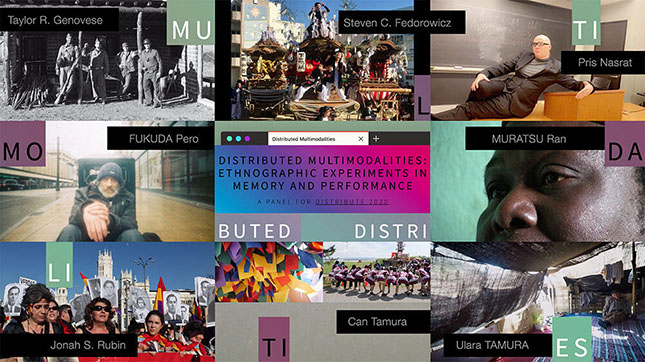 A Panel for Distribute
A Panel for Distribute
Organizers
Taylor R. Genovese (Arizona State University)
Profile : https://www.taylorgenovese.com/#about
URL:www.taylorgenovese.com
Can Tamura (Filmmaker)
Profile :https://kisetsuga.com/about/
URL:https://kisetsuga.com/
Panelists
Steven C. Fedorowicz, Kansai Gaidai University
"Neighborhood Autumn Festival in Japan: A Multimodal Visual Ethnography and Performance"
Steven C. Fedorowicz is a cultural anthropologist, visual anthropologist, and associate professor of anthropology in the Asian Studies Program at Kansai Gaidai University. His interests include deaf communities, sign language, performance, globalization and ethnographic photography. See more of his work at http://visualanthropologyofjapan.blogspot.com/.
Jonah S. Rubin, Knox College
"Beyond an Informational Approach to Memory Politics: Re-membering Personhood at Spanish Mass Grave Exhumations"
https://www.knox.edu/academics/majors-and-minors/anthropology-and-sociology/faculty/rubin-jonah
MURATSU Ran, Kyoto University
"Multimodal Spirits"
Ulara TAMURA, Kanazawa University
"From Backwardness to Pride: Yörük Cultural Revitalization through Performances in the Largest Nomadic Festival in Turkey”
FUKUDA Pero, Ritsumeikan University
"Sitting Gazing Gazed"
Pris Nasrat, Independent Scholar
Dragthropology: Queer and trans theoretical transformations through enraged comedy
Taylor R. Genovese, Arizona State University
"You're breaking my immersion!" Dispatches from a simulated war zone
Can Tamura, Filmmaker ·
"Kiriko Matsuri of Noto, Japan: The Outsider's Body as a Resource for Maintaining Local Rituals”
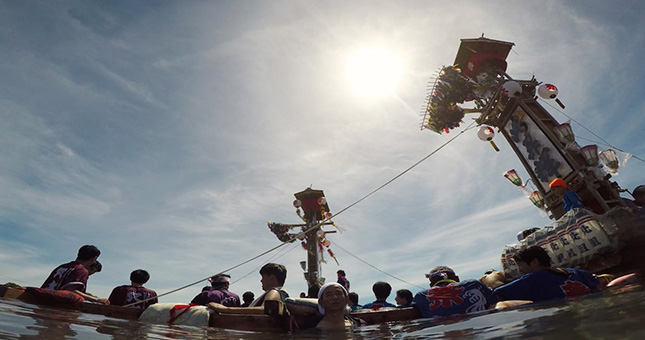 Okinami by John Wells (Can Tamura)
Okinami by John Wells (Can Tamura)
Anthro-film Laboratory 40
Film-screening and Discussion on Films on Performance (Zoom Meeting)
Film 1. "Drags in da’ House" by Paula Bessa Braz, Mihai Andrei Leaha
Film 2. "IN-BETWEEN" by Yuka Takahashi
Film 3. "Chicken Blood" by Alberto Gerosa
Date & Time: June 1st, 9:00–12:00 (Japan Time), 2020
※Request for participation is required by May 28th to: kawase07@gmail.com
The Zoom link will be sent to participants.
The number of participants will be limited to 20 people.
Paula Bessa Braz, Mihai Andrei Leaha (São Paulo) and Yuka Takahashi (Tokyo) will be showing the latest cut of their films "Drags in da’ House" and "IN-BETWEEN". They would appreciate feedback at this stage for further filming and editing. Alberto Gerosa (Hong Kong) will be showing his short film "Chicken Blood", a finished work but his ethnographic research on the subject of the film is still in progress. We will have a constructive discussion on filming performance from anthropological perspectives.
Moderators
Joshua Rickard (Kumamoto University)
Itsushi Kawase (National Museum of Ethnology, Japan)
Film 1. 《work-in-progress/rough cut》
"Drags in da’ House" (20 min.)
by Paula Bessa Braz, Mihai Andrei Leaha
Three young Brazilian artists perform at a Drag Race competition at the famous independent electronic music party, Caps Lock form São Paulo. When the global pandemic provoked by Coronavirus forces most Brazilians into confinement, Divina Kaskaria, Satine and Gabeeh Brazil are left to perform their drags online, while coping with the challenges of everyday life with social distancing and home isolation.
Using collaborative ethnography employed through self-filmed video diaries as well as public online shows, the film offers an intimate glimpse into the lives of the three artists while focusing on the processes of producing a Drag Queen inside a home for an online environment. The film project is based on postdoctoral research about participation and embodiment of experiences in local DIY electronic music scene conducted at the University of São Paulo.
Film 2. 《work-in-progress/rough cut》
"IN-BETWEEN" (24 min.)
by Yuka Takahashi
Yuka, a Japanese girl who fall in love with Balinese dance makes her dream come true to become a dancer in Bali. As a Japanese Balinese dancer, she gradually gets to understand the important perspective of the Balinese that arts including dance are the medium which transport us to the world between the seen and the unseen.
Film 3.
"Chicken Blood" (8 min.)
by Alberto Gerosa
Chicken Blood (鸡血) is an ongoing ethnographic research, performance and film project, based on the Chicken Blood ritual, performed daily by millions of migrant workers across China to maximise labour productivity and company profit. The project aesthetically re-interprets this folk practice, elevating it as the most prominent Chinese contemporary performance style, and promoting its study as an interpretative paradigm of Chinese Performance art from the cultural revolution to the present day.
Profile of Presenters
Paula Bessa Braz
Paula Bessa Braz is an anthropologist and PhD student in Social Anthropology at Universidade de São Paulo (USP), in Brazil.
Dedicated to the study of musical cultures in urban settings, she integrates the research group “Local Musicking: new pathways to ethnomusicology”, coordinated by Suzel Reily, supported by FAPESP, Funding Agency of the State of São Paulo. She also integrates the group Pesquisa em Antropologia e Música, attatched to Laboratório de Imagem e Som em Antropologia (LISA).
For her Masters, Paula engaged on a research about the teaching and learning processes and identity building through musical discourse and the playing among children of a family in the outskirts of a violent city in Brazil. As a product of the research, in addition to the written ethnography, Paula also developed a filmic ethnography, where the aspects of the sensible and sensitive music making of the family are addressed with a sensorial take, revealing the atmosphere of intimacy, closeness and harshness that is built by their musicking and within their surroundings.
Mihai Andrei Leaha
Mihai Andrei Leaha, is a Romanian audio-visual researcher and filmmaker working in South-America. His films have been shown at various film festivals and winning prizes. As a board member of Commission on Visual Anthropology, IUAES, and other organizations, he is involved in curating, promoting and programming ethnographic films at various conferences and festivals. He taught visual anthropology in Cluj and São Paulo. He has also organized conferences and workshops on visual and multimodal anthropology in Romania, Brazil and Peru. He is currently a postdoctoral fellow at the University of São Paulo doing a research on the DIY electronic music scene in São Paulo.
Yuka Takahashi
Yuka Takahashi is a graduate student in intermedia art at Tokyo University oft he Arts, mainly making works such as dance performance and film based on the anthropological approach to Balinese dance. From 2017 to 2018 she stayed in Bali,the Republic of Indonesia to learn Balinese traditional dance and was active as a professional dancer in the village of Peliatan. Back in Japan, her research and works are about the cross-cultural spirituality of dance. In addition to the anthropological research on Balinese culture and her performance of Balinese traditional dance, she also works on some dance performances to poem and music. Though still the concept of her creations is a living hieroglyph, the word that Antonin Artaud mentioned Balinese dance
Alberto Gerosa
Alberto Gerosa is an Italian anthropologist and filmmaker who first moved to China in 2007. His work has been acquired among others by Cineteca di Bologna, Hong Kong Film Archive, Tai Kwun Centre for Heritage and Arts, Hong Kong History Museum, and awarded at film festivals and academic conferences worldwide, including Vienna Biennale 2007; Visions du Rèel, Moscow Ethnocinema, Diaoyu Fortress International New Media Art Festival, University of California Berkeley, École des Hautes Études en Sciences Sociales, Paris, Manchester University, Oxford University, University College London, Free University of Brussels, European Association of Social Anthropologists.
Alberto has taught visual anthropology and cinema at Antwerp University, the Chinese University of Hong Kong, Hong Kong Baptist University United International College, Fondation Jean Rouch, International Organisation for Migrants, UN.
Since 2015 he is a visiting scholar at the Image Anthropology LAB in Tokyo University, where he is researching with Tadashi Yanai.
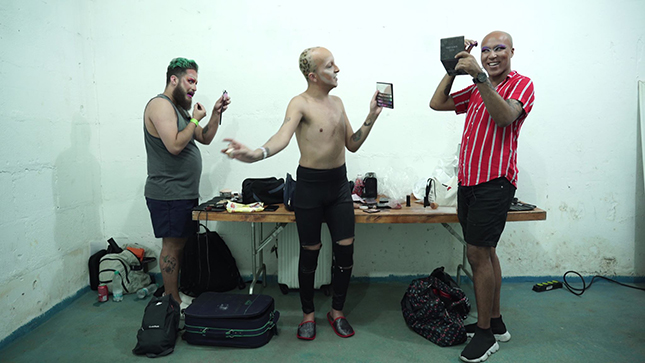 Drags in da’ House
Drags in da’ House
Anthro-film Laboratory 39
制作過程の民族誌映画のブラッシュアップを目的としたセミナー
日時:2019年12月20日 (金)17:30開始 (17:00 開場)
会場: 東京藝術大学音楽学部5号館4階 5-401教室
〒110-8714 東京都台東区上野公園12-8
交通案内:会場は、以下の地図(21)の建物
https://www.geidai.ac.jp/access/ueno
※無料。参加予約等、必要なし
発表者:
太田光海(マンチェスター大学社会人類学・映像メディア学科)
ディスカッサント:
管 啓次郎(明治大学大学院理工学研究科)
川瀬 慈(国立民族学博物館・総合研究大学院大学)
共催:
東京藝術大学大学院国際芸術創造研究科
毛利嘉孝研究室
住友文彦研究室
作品概要/クレジット
タイトル:『Kanarta』
制作年:2019年
長さ:120分
撮影・音声・編集:太田光海
出演:セバスティアン・ツァマレイン、パストーラ・タンチーマ
使用言語:シュアール語、スペイン語(日本語字幕)
制作:マンチェスター大学グラナダ映像人類学センター
作品概要
セバスティアンとパストーラは、エクアドル南部アマゾン熱帯雨林に暮らすシュアール族の夫妻だ。シュアール族はかつて首刈り族として植民者たちから恐れられ、征服されたことがない民として知られる。チチャあるいはニヒャマンチと呼ばれる口噛み酒を飲み交わしながら日々森に分け入り、生活の糧を得る一方で、彼らはアヤワスカをはじめとする覚醒植物がもたらすビジョンや自ら発見した薬草との感覚的関わりを通して現実や未来そのものを更新していく。止まることなく網の目を張り巡らす国家システムに粘り強く向き合い、変化する物質世界との関係性の中で「変わっていく同じもの」(ギルロイ)を創造的に紡ぎだしているとも言える。だがそんなとき、ある出来事が彼らに試練を与える・・・。本作品は、13ヶ月に及ぶアマゾン熱帯雨林での人類学的フィールドワークを通して作者が共に生き、彼らの「生活世界」(フッサール)の一端を垣間見た記録である。観察映画、シネマ・ヴェリテといった映像人類学の骨子を構成する手法を強固に基盤に据えつつも、幅広い表現形態のエッセンスを換骨奪胎し、一つの新たなドキュメンタリーのあり方として提示する。
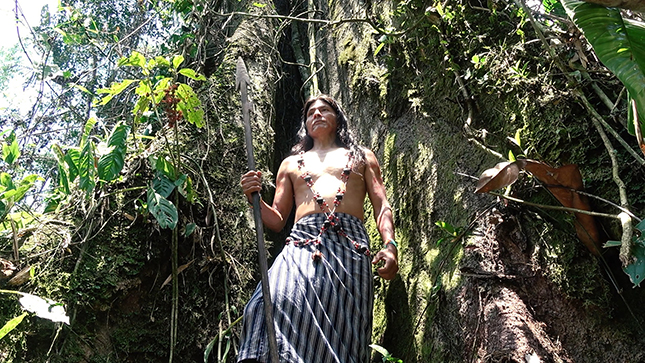 Kanarta
Kanarta
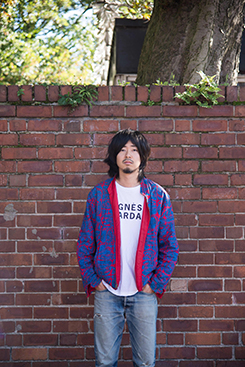
Akimi Ota photo by Tatsuki Shirai
発表者
太田光海(おおたあきみ)
1989年東京都生まれ。人類学者、映像作家。マンチェスター大学社会人類学・映像メディア学科博士課程所属。神戸大学国際文化学部(現国際人間科学部)卒業後、パリ社会科学高等研究院(EHESS)で人類学修士課程修了。パリ郊外におけるユースサッカーチームを舞台に、エスニシティ、異種混交性、階級、またそれらを生成する社会化のプロセスに焦点を当てた研究を行なった。その頃から以前より傾倒していた写真に対する情熱が発展し、動画撮影を試み始める。東日本大震災と福島第一原発事故を機に関心領域が徐々に変化し、博士課程ではアマゾン熱帯雨林先住民の人々が紡ぐ自然環境との交感的関係性、そしてその現代における変容をテーマに映像人類学の見地から研究することを決意。2016年9月より、エクアドル、ペルーのアマゾン地域にて13ヶ月のフィールドワークを行う。2019年9月、博士論文及び映像作品『Kanarta』を提出。今後は人類学と映像表現の交差点を基盤にしつつ、異なるメディアを組み合わせた新たな表現形態とそれに伴う生き方を追究したいと考えている。
※お問い合わせ kawase07@gmail.com
Anthro-film Laboratory 38
鼎談 『人類学者として芸術にたずさわる』
日時:2019年12月14日 (土)
開場:15:20/開演:15:30(〜17:30終了予定)
会場: 出町座 フリースペース
*ご来場の際は出町座1Fの映画カウンターへイベント参加の旨お申し付けください。
〒602-0823 京都市上京区三芳町133
https://demachiza.com/access
※無料、参加予約等、必要なし
発表者
中村冬日(ブリティッシュ・コロンビア大学人類学博物館)
聴き手
佐藤知久(京都市立芸術大学)
川瀬慈 (国立民族学博物館/総合研究大学院大学)
要旨
「何を誰が何をもって芸術とみなすのか。」様々な博物館や美術館を訪れ生まれたそんな疑問をきっかけに、人類学的視点から芸術を探索してきました。「人類学の父」と呼ばれるエドワード・タイラーがオックスフォード大学博物館で仕事を始めたことからわかるように、人類学ははじめから「もの」と密接な関係がありました。「もの」が芸術として認識される過程や理由に興味を持っています。学部時代はシュルレアリスムとモダニズムにおける「プリミティブ」と言う概念の研究をし、大学院で始めた現代日本書道の人類学的研究を続けています。その研究を作家とともに展覧会というかたちで、オーストラリア、アルゼンチン、そしてカナダで発表してきました。それと同時に、現代アートの社会的役割にも関心を持ち、徳之島でのアートプロジェクトや、アートギャラリーでのキューレーションにもたずさわってきました。現在は東日本大震災をテーマとした展覧会の準備を進めています。
現在、タイラーのように大学博物館で仕事をする立場から、人類学者として芸術にたずさわるとはどう言うことなのかを改めて考える機会にしたいです。また、芸術と人類学の関係について、参加者のみなさんとの意見交換を楽しみにしています。
プロフィール
中村冬日(なかむらふゆび)
芸術人類学と博物館学を専門にする社会文化人類学者。カナダのブリティッシュ・コロンビア大学(UBC)人類学博物館(MOA)キュレーター、およびUBCアジア研究学科・人類学学科所属研究者。1992年に渡英。サセックス大学卒業後、オックスフォード大学から修士号、博士号を取得。学位の間に東京で企業勤務、NHKで映画関係の仕事に携わる。オーストラリア国立大学、東京大学、アルゼンチン国立東洋美術館での勤務を経て2014年より現職。多摩美術大学芸術人類学研究所特別研究員(2010〜2015年)。著書には『Asia through Art and Anthropology: Cultural Translation across Borders』(2013年出版、オーストラリア・ニュージーランド芸術学会賞受賞)など。フィールドワークを京都、アルゼンチン、ブラジルで行い、東日本大震災後に長期ボランティアをしたことをきっかけに最近は東北で調査を行なっている。https://anth.ubc.ca/faculty/fuyubi-nakamura/
佐藤知久(さとうともひさ)
文化人類学者、京都市立芸術大学教授
川瀬慈(かわせいつし)
映像人類学者、国立民族学博物館/総合研究大学院大学准教授
www.itsushikawase.com/japanese
※お問い合わせ kawase07@gmail.com
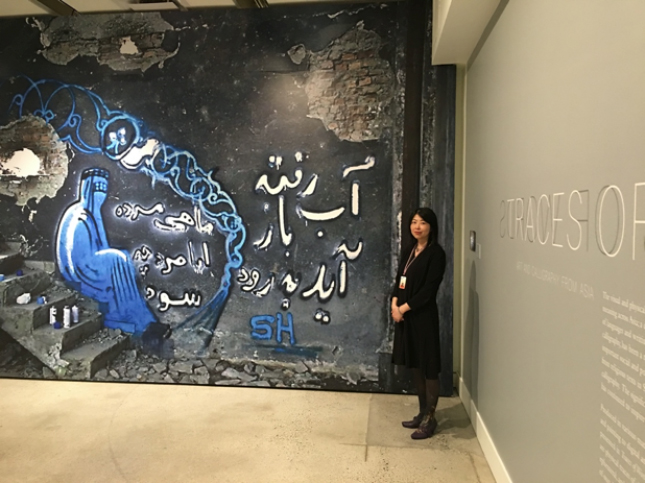 中村冬日「Traces of Words」展にて。撮影:清水優子
中村冬日「Traces of Words」展にて。撮影:清水優子
Anthro-film Laboratory 37
制作過程の民族誌映画(3作品)のブラッシュアップを目的としたセミナー
日時:2019年10月18日(金)14:00–
会場: 国立民族学博物館4階映像実験室
(参加希望者が多数の場合、会場を別室へ変更します。)
〒565-8511 大阪市吹田市千里万博公園10-1
http://www.minpaku.ac.jp/museum/information/access
※発表と議論の言語は日本語です。
※参加希望者はkawase07@gmail.comまで連絡、ご予約ください
作品1
Guli Armug’on: Women’s local Islamic ritual in Uzbekistan
発表者:和崎聖日(中部大学人文学部)
ウズベキスタン東部フェルガナ州のブルバリク村のドスティ・フド・ピーリム(「わが導師たる神の友」の意味)聖者廟では、毎年春の訪れとともに「グリ・アルムガーン」と呼ばれるアフガン・ハナズオウが鮮やかなピンク色の花をつける。この開花にあわせて、女性たちは穀物と農作物の豊穣を祈り、イスラーム聖者ドスティ・フド・ピーリムに神へのとりなしを願う。この儀礼の名も「グリ・アルムガーン」と呼ばれる。この儀礼は、古くこの地に栄えたゾロアスター教の豊穣の女神アナヒータの信仰とイスラームの信仰が融合したものとして興味深い。本作では、ユーラシア大陸の中央部で歴史的に混住していったペルシア系やテュルク系の定住民、ならびに定住化したモンゴル・テュルク系の遊牧諸部族を「イスラーム」の名の下に結びつける儀礼の存在、そして女性たちの暮らしぶりを記録した。本作は2019年に現地の研究者らとの協働で制作された。
現時点での作品の長さ: 約16分
監修/監督:Iqboljon Meliqo‘ziev / Adhamjon Ashirov / Seika Wazaki
撮影:Iqboljon Meliqo‘ziev / Shohrux Mirzo Inomjonov
編集:Muhammad Bobur Mavlonov / Seika Wazaki
撮影地:Ferghana, Uzbekistan
言語:Uzbek, Tajik (English subtitle)
協力 : Japan Society for the Promotion of Science Grant-in-Aid for Young Scientists / The Institute of History, The Acacemy of Science of Uzbekistan republic / Uzbekistan State Institute of Arts and Culture
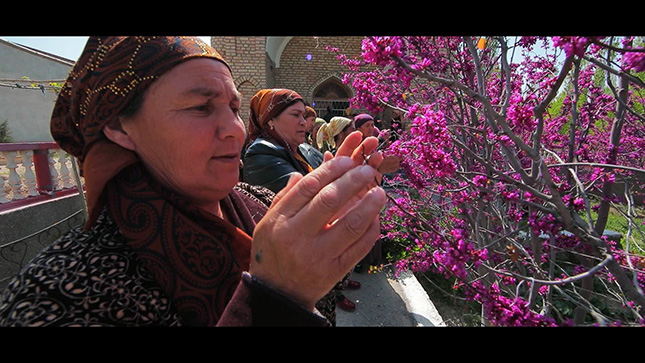 Guli Armug’on: Women’s local Islamic ritual in Uzbekistan
Guli Armug’on: Women’s local Islamic ritual in Uzbekistan
作品2
妖術師の声
発表者:村津蘭(京都大学大学院 アジア・アフリカ地域研究研究科)
本作品は西アフリカに位置するベナン共和国で近年興隆するキリスト教系新宗教の信者の家族を追ったものである。病気になった娘が、悪魔祓いで回復したことによってその家族は信仰に入った。その悪魔祓いで話し始めた霊は、親族の中で彼女を疎む「妖術師」であった。
不可視の存在であるアフリカの「妖術師」の霊が、キリスト教の悪魔祓いの中でどのように感知可能な存在になるのか。妖術師の声の情動的側面に注目することで考えていきたい。
現時点での作品の長さ: 約25分
監督・撮影・録音・編集:村津蘭
撮影地:ベナン共和国ウェボ市
言語:フォン語(日本語字幕)
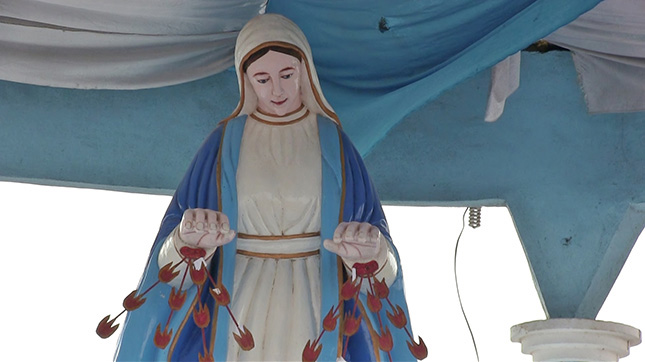 妖術師の声
妖術師の声
作品3
アシェンダ
発表者:川瀬慈(国立民族学博物館)
アシェンダはエチオピア北部ティグライ州やアムハラ州各地において8月下旬に開催される祭祀である。はなやかに着飾った女性のグループが太鼓をたたきながら軒先で門付けを行うと同時に、道行く人々を祝福する。アシェンダはエチオピア北部の代表的な宗教であるキリスト教エチオピア正教会の信仰の支柱である聖母マリアを称え、子孫繁栄を願うことを目的に行われるとされる。近年は、ティグライ州観光文化局が観光資源、無形文化遺産としてのアシェンダの可能性に着目し、このお祭りを再創造し、プロデュースする動きがみられる。本作は、政策のなかで大きく変容するアシェンダを様々な角度から記録し、当祭祀に人々が求める世界を描く。
現時点での作品の長さ: 約120分(部分的に抜粋して上映)
監修/監督:川瀬慈
撮影・録音・編集:川瀬慈、野原位(NEOPA)
撮影地:エチオピア連邦民主共和国メケレ市とその界隈
言語:アムハラ語、ティグレ語(日本語字幕)
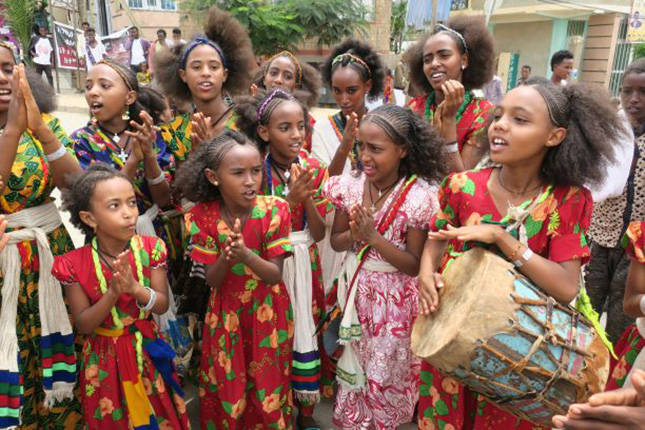 アシェンダ
アシェンダ
Anthro-film Laboratory 36
鼎談 『芸術と人類学の交差点で書き、創り、教えるとき』
日時:2019年7月9日 (火)17:30–
会場: 京都市立芸術大学芸術資源研究センター
京都府京都市西京区大枝沓掛町13-6
http://www.kcua.ac.jp/arc/access/
※参加予約等、必要なし
■論者
池内須摩(シカゴ美術館附属美術大学 )
川瀬慈 (国立民族学博物館/総合研究大学院大学)
佐藤知久(京都市立芸術大学)
■要旨
アメリカの作家カート・ヴォネガットが、「自然科学のようなふりをしている詩を学んでみてはどうか」という指導教授の誘いに惹かれて文化人類学の世界に足を踏み入れたという話があります。マヤ・デレン、ウルスラ・ル・グイン、グレゴリー・ベイトソンなど、芸術と人類学の境界を自由に生きた面白い人たちというのはけっこうたくさんいますが、一方で学問的、科学的な人類学がこの種の領域横断的な思想のほとばしりを押さえてしまうことも多いです。かくいうヴォネガットの修士論文も型破りであったことからシカゴ大学に受理されず、数十年後に大学が彼の小説に修士号を与えると言いだすまで、学位は授与されませんでした。
今でこそ全く別々の分野と見られがちな芸術と人類学ですが、その接点から噴き出す創造力は、ふたつの領域の原点が酷似していることを示唆してはいないでしょうか。では、学問的な枠組みの中に身をおきながらも、芸術と人類学の交差点で書き創り教えることには、今日いったいどんな意味があるのでしょうか。池内須摩による話題提供、問題提起を中心に「芸」と「学」の境界にて活動する三人が鼎談を行います。

池内須摩
■Profile
池内須摩(いけうちすま)
文化人類学者。兵庫県出身。北海道大学卒業後に渡米、米国のエモリー大学人類学部より博士号を取得。シカゴ美術館附属美術大学(School of the Art Institute of Chicago)教養学部助教。
著書には日本における日系ブラジル人還流移民と南米宗教の伸長についてのエスノグラフィー『Jesus Loves Japan: Return Migration and Global Pentecostalism in a Brazilian Diaspora』(スタンフォード大学出版)があり、映像作品では全米人類学会の映像人類学分科会映画祭で発表した『In Leila’s Room』がある。日本の移民や宗教について研究しつつ、アメリカの美大の学生に人類学・宗教学・移民学を教えており、芸術と人類学の交差点について模索中。www.sumaikeuchi.com/
川瀬慈(かわせいつし)
映像人類学者、国立民族学博物館/総合研究大学院大学准教授
www.itsushikawase.com/japanese
佐藤知久(さとうともひさ)
文化人類学者、京都市立芸術大学教授
※お問い合わせ kawase07@gmail.com
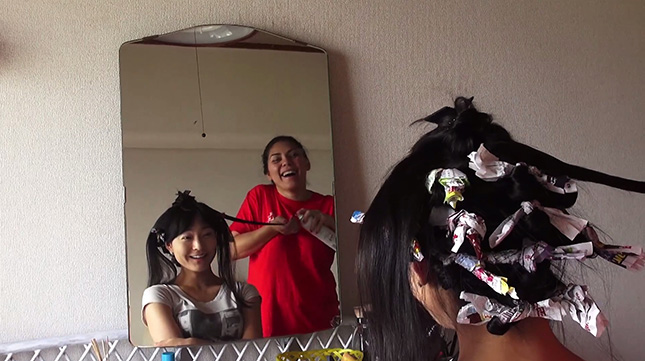 "Shot In Leila's Room" by Suma Ikeuchi
"Shot In Leila's Room" by Suma Ikeuchi
Anthro-film Laboratory 35
The Joint Seminar with University of East Anglia (UEA)
Date & Time: June 6th, 14:30–16:00, 2019
Venue: National Museum of Ethnology, 2nd Floor, Seminar room 7
Senri Expo-Park 10-1, Suita, Osaka 565-8511 Japan
http://www.minpaku.ac.jp/english/
reservation is not required
日時:2019年6月6日(木)14:30–16:00, 2019
会場: 国立民族学博物館2階 第7セミナー室
〒565-8511 大阪市吹田市千里万博公園10-1
http://www.minpaku.ac.jp/museum/information/access
※発表と議論の言語は英語です。
※予約等必要なし
■Program
1. Rethinking Feminism: Representation of Women in Post-Revolutionary Iranian Cinema
Ms Zahra Khosroshahi (PhD candidate, UEA)
2. Family and Gender in Contemporary Japanese Cinema: Confronting Anxiety in the Films of Koreeda Hirokazu, Mr Duncan Breeze (PhD candidate, UEA)
3. The Two Studios Ghibli: Differential Branding of Studio Ghibli Inside and Outside Japan
Dr Rayna Denison (Senior Lecturer in Film and Television Studies)
4. Humanities Goes to Japan
Dr Eylem Atakav (Associate Dean International, Faculty of Art, Media and American Studies)
5. From Norwich to Japan: East Anglian Film Archive films from Japan
Ms Noriko Morisue (PhD candidate Yale University)
※There will also be the screening of short video clips that introduce PhD students from the Faculty of Arts and Humanities, UEA.
Discussants from Anthro-film Lab:
Hirohisa Fukuda/ fukudapero
Itsushi Kawase
Yushi Yanohara
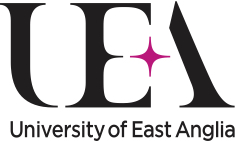
Anthro-film Laboratory 34
『Go Ask The System Why(システムに尋ねろ)』
ミュージックビデオ:『Go Ask The System Why(システムに尋ねろ)』
(撮影・編集:矢野原佑史、撮影地:カメルーン共和国、3分)
発表者:矢野原佑史
ディスカッサント:柳沢英輔、ふくだぺろ/福田浩久
日時:2019年1月31日(木)17:00–19:00
会場:立命館大学 平井嘉一朗記念図書館
シアタールーム(図書館の1F入ってすぐ左手、ゲートの手前)
〒603-8577 京都府京都市北区等持院北町56−1
https://goo.gl/maps/XwDmFyrtiNA2
※参加希望者は前日までに福田 isthisapen7@gmail.comまでご連絡、予約ください
■要旨
2018年10月、発表者はアフリカ中西部のカメルーン共和国を訪れた。現地のラッパーたちとともに楽曲/映像を制作することで、彼らの視点から現代カメルーン社会を読み解こうとしてきた矢野原にとって、5度目のフィールドワークであった。ただ今回は現地の空港に着くなり、これまでとは異なる情勢が感じられた。大統領選挙期間中であるため、街にはポール・ビヤ大統領のポスターが張り巡らされ、乗合タクシーの乗客たちの話題も選挙一色であった。
当国ではマイノリティーである英語話者のラッパーたちとつくる楽曲も、いつになくシリアスなコンシャス・ラップとなった。そのうちの1つ、「Go Ask The System Why(システムに尋ねろ)」において彼らは、1982年以来続くポール・ビヤ政権を直接批判することはなく、カメルーンを取り巻く各国や各機関を含めた「(国際)社会システム全体に問題がある」と現状を分析した。
本発表では、発表者がブラッシュアップ中のミュージックビデオと、そのフッテージの一部を上映する。ラッパーたちの世界観とメッセージに加え、現代カメルーン社会の「今」を音楽主体の映像に記録すること、それを表現することの可能性について考察する。
また、ディスカッサントに柳沢英輔(同志社大学助教/音文化研究者)とふくだぺろ/福田浩久(立命館大学博士課程/Anthro-film Lab/詩人)を招き、二人のセレクションによる関連映像を併映し、音と映像の関係についての議論を深めたい。
プロフィール
矢野原 佑史 (やのはら ゆうし)
京都大学アフリカ地域研究資料センター研究員。2005年よりカメルーン共和国にて、現地のヒップホップ・カルチャーと、Bakaの伝統音楽の研究に取り組む。単著に『カメルーンにおけるヒップホップ・カルチャーの民族誌(京都大学アフリカ研究シリーズ21)』(2018年、松香堂出版)。共著に鈴木裕之・川瀬慈編『アフリカン・ポップス!―文化人類学からみる魅惑の音楽世界―』(2015年、明石書店)。
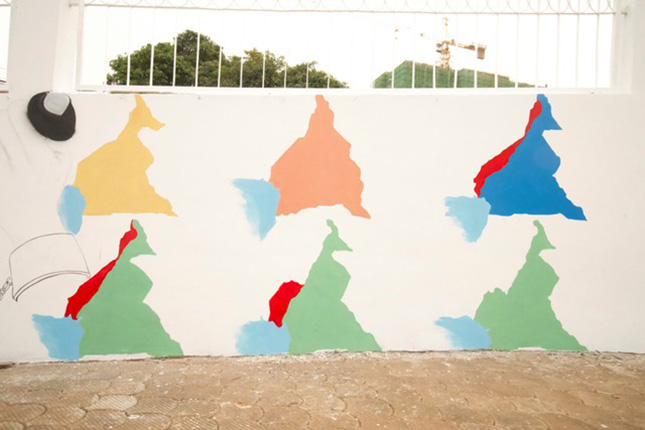
Anthro-film Laboratory 33
Growing Up Married - Film Screening and Discussion with Eylem Atakav
Date & Time: December 13, 14:00–, 2018
Venue: National Museum of Ethnology, 4th Floor, Eizo Jikken Shitsu (Visual Experiment Laboratory),
Senri Expo-Park 10-1, Suita, Osaka 565-8511 Japan
http://www.minpaku.ac.jp/english/
reservation is required: kawase07@gmail.com
日時:2018年12月13日(木)14:00–
会場: 国立民族学博物館4階 映像実験室(参加希望者が多数の場合、会場を別室へ変更します。)
〒565-8511 大阪市吹田市千里万博公園10-1
http://www.minpaku.ac.jp/museum/information/access
※発表と議論の言語は英語です。
※参加希望者はkawase07@gmail.comまで連絡、ご予約ください
Growing Up Married
(Eylem Atakav, 27 min, 2016)
Growing Up Married is a documentary which focuses on the stories of child brides recollecting their memories as adults. It explores what happens after child marriage by focusing on the stories of four women, and making their experiences visible, while contributing to debates around this significant, complex and emotionally charged human rights issue which has often been discursively silenced.
Details: Year of production: 2016 Director: Eylem Atakav Producer: Eylem Atakav Assistant Director: Burcu Dabak Editors: Lucy Rivers and Roger Hewins Edit supervisor: Hannah Merridale Dubbing Mixer: Matt North Post-production supervisor: Sean Thompson Production assistant: Umut Yukaru.
Facebook: A Documentary Film on Child Marriages: Growing Up Married
About the filmmaker
Dr Eylem Atakav is Senior Lecturer in Film and Television Studies at the University of East Anglia where she teaches courses on women and film; women, Islam and media; and Middle Eastern media. She is the author of Women and Turkish Cinema: Gender Politics, Cultural Identity and Representation (2012) and editor of Directory of World Cinema: Turkey (Intellect, 2013). Growing Up Married is her first exposure to filmmaking. She is currently co-leading an Arts and Humanities Research Council-funded project entitles British [Muslim] Values.
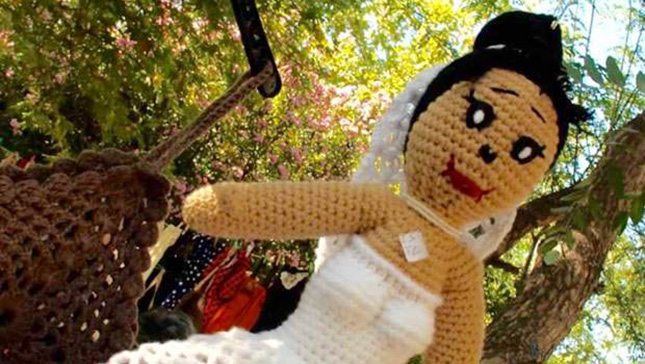
Anthro-film Laboratory 32
Film Screening and Discussion with Maria Salaru and Sungeun Kim
Date & Time: December 8, 13:30–, 2018
Venue: National Museum of Ethnology, 4th Floor, Eizo Jikken Shitsu (Visual Experiment Laboratory),
Senri Expo-Park 10-1, Suita, Osaka 565-8511 Japan
http://www.minpaku.ac.jp/english/
reservation is required: kawase07@gmail.com
日時:2018年12月8日(土)13:30–
会場: 国立民族学博物館4階 映像実験室(参加希望者が多数の場合、会場を別室へ変更します。)
〒565-8511 大阪市吹田市千里万博公園10-1
http://www.minpaku.ac.jp/museum/information/access
※発表と議論の言語は英語です。
※参加希望者はkawase07@gmail.comまで連絡、ご予約ください
Film1
Blocul - An Ethnography of a Romanian Block of Flats
(2016, 61min, Director: Maria Salaru)
Presenter: Maria Salaru
Synopsis
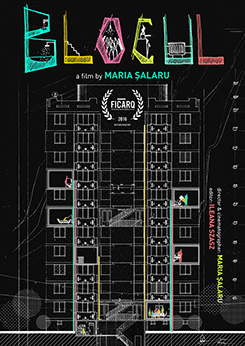 From neighbourly disputes over garlic-heavy cooking to memories of Ceaușescu’s heatless winters, this film explores the rich social and material universe of a Romanian apartment building. It follows the story of the block’s administrator, in his effort to mediate relationships between neighbours and maintain peace and order. In doing so, it crayons the rich nuances of the inhabitants’ everyday lives. The block comes to life, as its inhabitants constantly reshape it to defy the passing of time, while its failing infrastructure encroaches on their neighbourly relations. This is a film about people’s homes, and the spaces in between. In those spaces, the pipes don’t only carry hot water – they carry meanings from one inhabitant to the next.
From neighbourly disputes over garlic-heavy cooking to memories of Ceaușescu’s heatless winters, this film explores the rich social and material universe of a Romanian apartment building. It follows the story of the block’s administrator, in his effort to mediate relationships between neighbours and maintain peace and order. In doing so, it crayons the rich nuances of the inhabitants’ everyday lives. The block comes to life, as its inhabitants constantly reshape it to defy the passing of time, while its failing infrastructure encroaches on their neighbourly relations. This is a film about people’s homes, and the spaces in between. In those spaces, the pipes don’t only carry hot water – they carry meanings from one inhabitant to the next.
Maria Salaru
Dr Salaru is a visual anthropologist whose research is situated at the intersection between anthropology and architecture. She has conducted a year-long research project using innovative visual methods (photography and film) inside an urban block of flats in Romania. She also produced an observational documentary about the inhabitants of this buildings called Blocul, which was screened at film festivals internationally and received the Best Documentary award in 2016 at Ficarq, the Architecture and Film Festival in Spain. She is currently working on an Erasmus+ Project about urban infrastructure at Durham University, which brings together universities and non- academic partners from the sustainable living and energy sector, based in Slovenia, Czech Republic, the UK and the Netherlands.
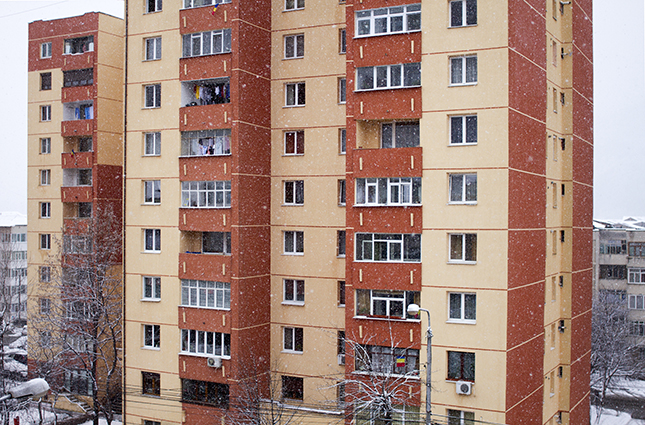 Blocul
Blocul
Film2
The Island of Yasammen (working title)
(Director: Sungeun Kim)
Presenter: Sungeun Kim
Synopsis
Yasammen is one of 527 Yemenis who applies for an asylum status in South Korea in the summer 2018. She would spend next 6 months in Jeju, the touristic southern Island and the only part of the country where a Yemeni can enter without a visa. The arrival of her people would trigger a public uproar sparked by Islamophobia and racism, which leads up to a national debate whether to abolish an existing refugee law. In October, Yasammen like most of others acquires humanitarian visas; not a single case of asylum status is admitted. In fact, since South Korea enacted the refugee legislation as the Asia’s first in 2013, only 4 percent of the asylum seekers have been accepted. With this one-year-long humanitarian visa Yasammen leaves Jeju for the mainland.
The film will recompose Yasammen’s time spent in Jeju Island after her departure. The everyday footage in the island filmed by herself will be juxtaposed in the narrative construction of her memories performed by the multiple female islanders that have acquainted her through regular gatherings among Yemeni and Jeju women. Two activists who organized those gatherings and worked as her translators will be the main performers and storytellers in the film. Yasammen’s physical presence as well as absence will be highlighted in the context of female body that, she once reflected, seems only tangible through oppression. I wish to make a film documenting her feminist struggle never to seize reclaiming her body despite of the systematically enforced state of ‘fugue’ and the stigma of the genderless body on the run.
Sungeun Kim
Sungeun Kim is a filmmaker and visual anthropologist based in Berlin and Jeju Island (S.Korea). Her main research focuses on the media activism and civil dissent resisting against militarism, neo-colonialistic practices and the internal marginalization in the context of the islands in East China Sea. She studied Fine Arts at New York University and Experimental Film at University of Arts, Berlin. In 2015 she has graduated Free University in Berlin with MA in Visual and Media Anthropology.
www.seunkim.com
Current Affiliation
Freenlancer Editor and Assistant Director for various art film projects in Berlin
Archivist at Studio Haegue Yang Berlin
Filmography
The Memory of the 25th Hour (2017), 78 min
The Will (2018), 20 min
Selected Screenings
Ji.hlava International Documentary Film Festival 2018
Document Film Festival Glasgow 2017
Festival International du Film Insulaire de Groix 2017
Seoul Independent Documentary Film Festival 2017
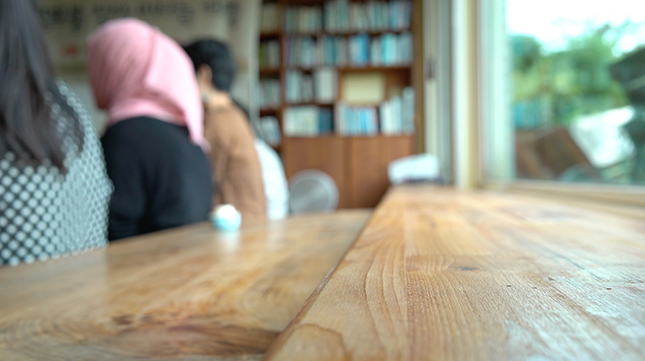 The Island of Yasammen
The Island of Yasammen
Anthro-film Laboratory 31
The Joint Seminar with Commission on Visual Anthropology, IUAES
Date & Time: November 20, 14:00–, 2018
Venue: National Museum of Ethnology, 2nd Floor, Seminar room 7
Senri Expo-Park 10-1, Suita, Osaka 565-8511 Japan
http://www.minpaku.ac.jp/english/
reservation is not required
日時:2018年11月20日(火)14:00–
会場: 国立民族学博物館2階 第7セミナー室
〒565-8511 大阪市吹田市千里万博公園10-1
http://www.minpaku.ac.jp/museum/information/access
※発表と議論の言語は英語です。
※予約等必要なし
IUAES映像人類学理事会(Commission on Visual Anthropology, The International Union of Anthropological and Ethnological Sciences )とAnthro-film Lab共催による研究会を開催します。
■Program
Oral Presentation & Discussion/14:00–
1. "Visual Anthropology and Critical Heritage"
Rossella Ragazzi (Tromsø Museum)
2. "Life-World as Object of Visual Anthropology"
Bao Jiang (Institute of Sociology, Chinese Academy of Social Sciences)
3. "Multimodal research and electronic music in São Paulo"
Mihai Andrei Leaha (University of São Paulo)
Discussion Moderators:
Inge Daniels (University of Oxford)
Hirohisa Fukuda/ fukudapero (Ritsumeikan University)
Film Screening16:30–
"Nunta pe dos/ Mockup Wedding" (2017, 41min)
by Mihai Andrei Leaha
Every year in Bănia village (Western Romania) takes place the spring carnival named Nunta Cornilor (Horns Wedding). The custom follows the structure of a traditional wedding but does so differently: all participants are men, some dressed up as women; the second day, they wear masks and the wedding gifts are messages that mock the evens that happen throughout the year in the village. The film represents the effort of the visual ethnographer that strives to show the custom in a visual manner that is specific to the local ways of looking at wedding videos. Therefore, the editing is done together with an amateur videographer that adds special effects specific to wedding videos. The result is a Mockup Wedding as seen by those who perform it.
Comission on Visual Anthropology, IUAES
http://www.cva-iuaes.com/
2018年6月から7月においてAnthro-film Labはギャラリー@KCUAにおいて、
各種の上映会、ワークショップ、レクチャーを開催。
http://gallery.kcua.ac.jp/images/2018/06/flyer_2018_im-pulse.pdf
Anthro-film Laboratory 30
『雲南からのイメージの創造 —映像人類学研究を事例に—』
http://www.itsushikawase.com/anthro-film_lab/pdf/anthro-film_lab_30.pdf
Anthro-film Laboratory 29
Anthropology on film
Films made by Frode Storaas and Knut Christian Myhre
Presenter: Hans Frode Storaas
(Professor, Department of Cultural History, University Museum of Bergen)
Date & Time: March 2, 17:00–, 2018
Venue: National Museum of Ethnology,
4th Floor, Eizo Jikken Shitsu (Visual Experiment Laboratory),
Senri Expo-Park 10-1, Suita, Osaka 565-8511 Japan
http://www.minpaku.ac.jp/english/
reservation is required by Feb 28th kawase07@gmail.com
日時:2018年3月2日(火)17:00–
会場: 国立民族学博物館4階 映像実験室
(参加希望者が多数の場合、会場を別室へ変更します。)
〒565-8511 大阪市吹田市千里万博公園10-1
http://www.minpaku.ac.jp/museum/information/access
※発表と議論の言語は英語です。
※参加希望者は2月28日までにkawase07@gmail.comまで連絡、ご予約ください
■Synopsis
Based on the long term fieldwork by the anthropologist Knut Christian Myhre, in the Kilimanjaro region in Tanzania, Frode Storaas has just finished two films that will be screened and discussed. The films demonstrate two different ways to communicate anthropological knowledge. "Cooling and Cleansing – in Kilimanjaro" (25 min.) is what could be called a "documentation film". The film is a visual documentation of a ceremony. A young man died, obviously a suicide. On the third day after the burial, a ceremony is conducted to cool or cleanse the Homestead - ihora kaa. This is performed whenever a death occurs, but it requires particular care in the case of a suicide. The film follows the ceremony step by step and demonstrates how the camera can be used for data gathering.
The second film, "Atali's Gift" (43 min.), is not primarily data gathering, but a representation in order to communicate an anthropological understanding of a given cultural and social reality. The story is about Atali who has recently moved back to his homestead in Rombo District on the eastern slopes of Mount Kilimanjaro in northern Tanzania. For nearly twenty years, he has pursued university studies and engaged in various business ventures, but these have brought him few material rewards. Atali is determined to turn his life around and is convinced he needs to settle some longstanding matters pertaining to his long-deceased father and father’s father. His path to a better future goes through the past and requires an intervention in the present. A visit from the anthropologist Knut Christian Myhre, who has long lived in Atali’s house while conducting research in the area, provides Atali with the impetus to proceed with his plans. He wants a new name and connection to a different Homestead, and for this a ceremony is required. But will his elderly mother agree to this? This is a film about anthropological topics, such as adaptation, kinship, religion and ritual life. It is also a film about anthropological fieldwork - tuning in, hanging out and hanging on - participating and observing.
This film shows how documentation is combined with a narrative and the aesthetic conventions of cinema.
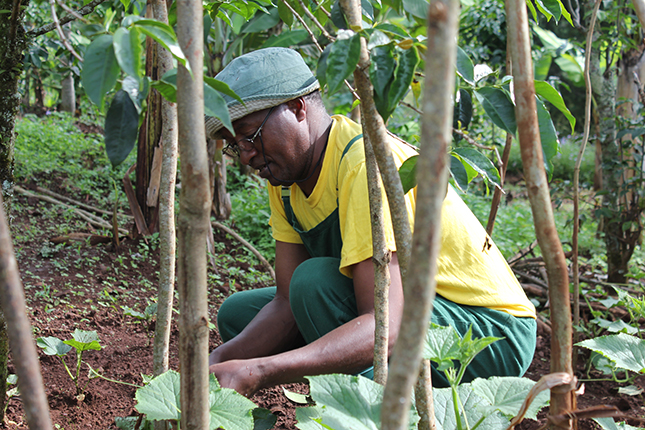
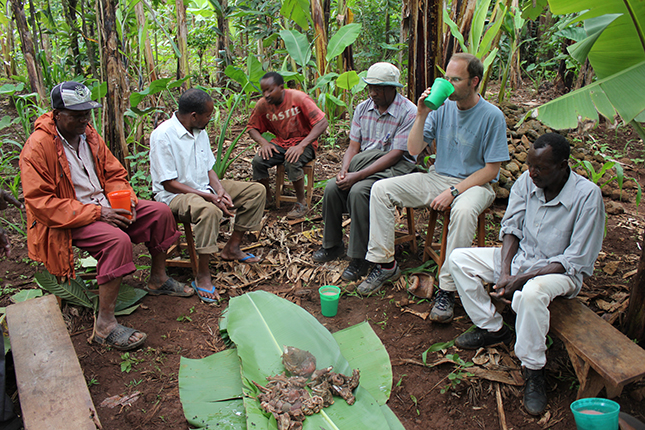
Anthro-film Laboratory 28
座談会:デジタルメディア時代の人類学 —映像で他者を想像する—
日時:2018年1月25日 18:00–20:00
会場:@KCUA ギャラリーC、入場料無料
〒604-0052 京都府京都市中京区 油小路通御池上る押油小路町238−1
主催:京都市立芸術大学、Anthro-film Laboratory
助成:平成29年度 文化庁「大学を活用した文化芸術推進事業」
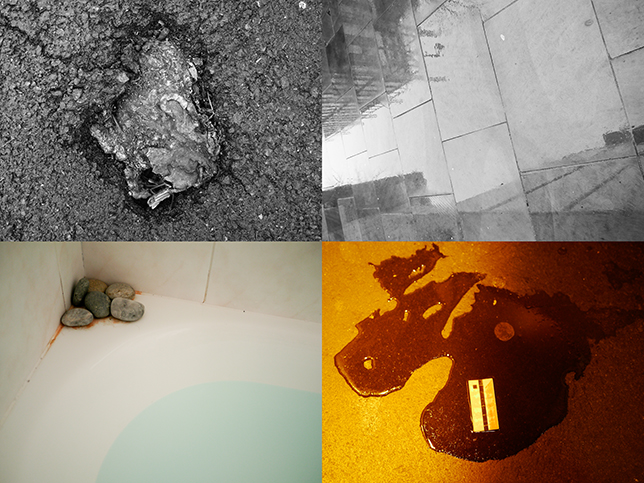
変容する時代にどう他者を想像するのか?そもそも他者とは誰のことなのか?この座談会では現代人類学の抱える根本的な課題について、経歴も関心も異なる4人の若手研究者たちが自由に意見を交差させる。4人の共通点は人類学と映像制作。デジタル化とインターネットの爆発的な普及により、現代の人類学者は大量の文献をタブレット一つに収めながら旅し、最新の研究動向を遠方にいながら瞬時に把握し、フィールドワーク中に論文を執筆することもできる。他者と経験を共有し、生活を身体化することを通して彼らの世界観を「翻訳」することで想像=創造することを生業としてきた人類学は、時空間と身体の関係性の大きな変化の波にさらされている。デジタル技術の進展により映像制作は人類学者にとってこれまで以上に容易になったが、情報をより直接的・感覚的に伝えられ「他者」との共有を可能にする映像は、人類学にとってどんな意義を持ちうるのか。逆に、人類学は映像に何を貢献できるのか。また、人類学を志すものたちは、これからどのような生き方を描いていくのか。ドキュメンタリー、マジックリアリズム、植民地主義の遺産、日本の周縁性、感覚と芸術——様々な方向へ縦横無尽に飛びながら、デジタルメディア時代の想像力と人類学について会場とともに考えていく。
■座談会の登壇者紹介
太田光海
1989年生まれ。東京都出身。マンチェスター大学社会人類学・映像メディア博士課程在籍。神戸大学国際文化学部卒業後、パリの社会科学高等研究院(EHESS)で人類学修士課程修了。パリ郊外の移民系少年たちとサッカーの関わりとエスニシティについて研究を行った。マンチェスター大学では、2015年より南米エクアドル・ペルー両国のアマゾン地域にて、先住民コミュニティの飲食文化や動植物との関わりを通した自然理解と、森林破壊や貨幣経済の浸透による自然観の変容について研究している。
ふくだぺろ/福田浩久
1982年生まれ。東京大学日本文学学士。様々な職業を経る。マンチェスター大学Visual Anthropology修士。修士プロジェクトはルワンダ国王に取材した『神話的現実とイメージからみるルワンダ王権』。フィールドから発した詩・小説・インスタレーション・映像など、異なるメディアにまたがった作品を発表しながら、妻と娘と暮らす。代表作に『ふぃっしゅのーちい』『parallel architecture』等。マンチェスター国際映画祭実験映画賞等受賞。
www.fukudapero.com
村津蘭
1983年生まれ。一橋大学法学部卒業。在学中、上海からカイロまで陸路で旅行する。その後、大手通信企業で勤めながら、ホームレス支援団体を起ちあげたり、デモでゴジラ神輿を作り町を歩いたりする中で、映像制作と出会う。西アフリカ、ベナンでの2年間の福祉センター勤務を経て、現在は京都大学アジア・アフリカ地域研究研究科博士課程に在籍し、映像を用いながらベナンの宗教における憑依や妖術師について研究している。
白井樹
1988年生まれ。一橋大学社会学部卒業。2年間休学し、東ヒマラヤの元王国であるインド・シッキム州に留学してフィールドワークを行う。卒業後、メーカーで勤めながら表現としての写真と出会い、現代写真研究所を修了。退社後、タイで日本語/文化教育に携わるかたわら、インタノン山のカレン族の村に通い生活世界を捉える写真作品の制作を開始。異なるメディアにまたがる手法に関心を広げ、2017年4月に帰国し映像人類学修士課程への進学を目指している。
www.tatsukishirai.com
Anthro-film Laboratory 27
オーストリア・チロル州の移牧農業に関する2本の民族誌映画について
発表者:高柳ふみ
Leuphana University of Lüneburg, Institute of Philosophy and Sciences of Art
日時:2017年12月19日(火) 16:00-
会場:国立民族学博物館4階映像実験室(参加希望者が多数の場合、別会場で開催)
〒565-8511 大阪府吹田市千里万博公園10-1
http://www.minpaku.ac.jp/museum/information/access
※参加希望者は前日までに川瀬kawase07@gmail.comまで連絡、ご予約ください
■要旨
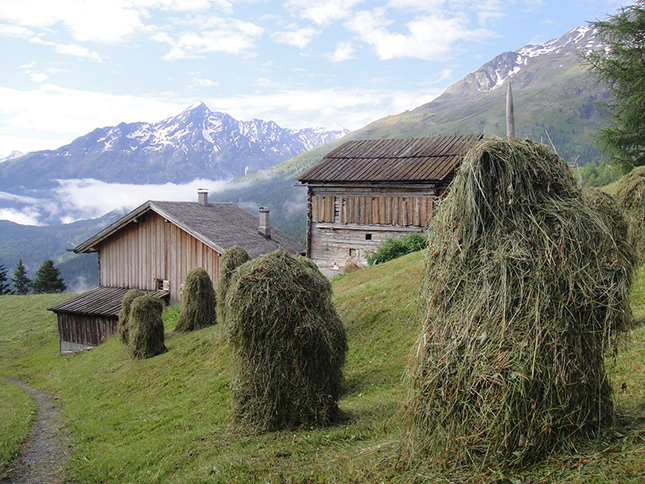
2013年よりオーストリアのチロル州の一農家でボランティアヘルパーとして移牧農業の参与観察を行い、二本の民族誌映画を作成した。一作目の「Alpine Rings Linger」では、夏季の放牧地(アルム)の農作業において、天気、地形または植生といった自然条件の下で実践される経験的知識の視覚化を試みた。二作目の「Not for Eternity」は、2016年に同農家で行われた築140年の牛舎の建替えに至るまでの一年間の農家の生活を断片的に描いた。
研究会では、上記二作の上映後、民族誌映画制作における問題点や課題等を、自作の例をもとに参加者の皆様と討論できればと思っております。
■プロフィール
高柳ふみ
現在ドイツのリューネブルク大学の研究プログラム PriMus – PhD in museums のリサーチ・アソシエートとしてハンブルクの民族学博物館にて、館所蔵のスウェーデンコレクションの調査およびダーラナ地方の物質文化についての研究を行っている。
■フィルモグラフィー
2013 “Quer durch den Stadtgarten (Through the City Garden) ”
2014 “Almklang hallt nach (Alpine Rings Linger)”
2017 “Nicht für die Ewigkeit (Not for Eternity)”
Anthro-film Laboratory 26
『津波石』制作過程のインスタレーションのブラッシュアップ
発表者:下道基行
日時:2017年12月18日(月) 16:00-
会場:国立民族学博物館4階映像実験室(参加希望者が多数の場合、別会場で開催)
〒565-8511 大阪府吹田市千里万博公園10-1
http://www.minpaku.ac.jp/museum/information/access
※参加希望者は前日までに川瀬kawase07@gmail.comまで連絡、ご予約ください
■要旨
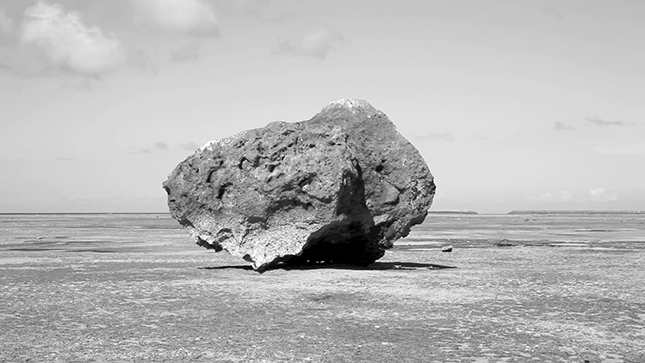
下道基行は写真家であり現代美術の舞台で活動するアーティストである。昨年度から国立民族学博物館の客員を務め、記録・収集・表現活動の方法論について、研究者たちと対話を積み重ねてきた。
彼は、2006年より日本の国境線の周辺を旅し、戦前、アジアの国々に作られた鳥居を探し、その残された風景を撮影してきた。これは、シリーズ「torii」として公表され、国内外で高い評価を得た。2014年からはアジアの国々との境界線近くに位置する沖縄・八重山諸島を旅しながら、津波によって海底より運ばれ、陸地に漂着した岩を探し出し、映像(動画)で記録するプロジェクトを行っている。
このプロジェクトを着想したきっかけとして、東日本大震災で陸地に打ち上げられた船の存在を知ったことが挙げられる。これらの船の多くは保存される事なく解体されていった。しかし、もしそれらの船が100年後、復興した街の中に残されていたら、それらにはいったいどのような意味が付与されうるのか?このような問いを抱きつつあった矢先に「津波石」と出会った。島々に残された巨大な岩たち。あるものは津波にまつわる教訓を語る語り部として、あるものは新興宗教の信者に崇められるご神体として、また、あるものは渡り鳥たちのコロニー(繁殖地)として、様々な意味や価値を与えられながら存在している。
映像シリーズ「津波石」は、動く事のない巨大な岩を定点観測し、数分の動画で記録し、ループ再生によるインスタレーション作品として発表する予定である。一瞥するとモノクロの静止画像にみえる岩の姿をとらえた動画は、そこから動いていくこと、あるいはそこに留まること、の選択を視聴者に迫り、その感覚を揺さぶる。
■プロフィール
下道 基行 したみちもとゆき
2001年武蔵野美術大学造形学部油絵科卒業。2003年東京綜合写真専門学校研究科中退。砲台や戦闘機の格納庫など日本各地に残る軍事施設跡を4年間かけて調査・撮影し、出版もされた「戦争のかたち」シリーズ(2001-2005)や、アメリカ・台湾・ロシア・韓国など日本の植民地時代の遺構として残る鳥居を撮影した代表的なシリーズ「torii」(2006-2012)など、旅やフィールドワークをベースにした制作活動で知られる。彼の作品は、風景のドキュメントでも、歴史的な事実のアーカイブでもない。生活のなかに埋没して忘却されかけている物語、あるいは些細すぎて明確には意識化されない日常的な物事を、写真やイベント、インタビューなどの手法によって編集することで顕在化させ、現代の私たちにとってもいまだ地続きの出来事として「再」提示するものである。2012年に開催された光州ビエンナーレでは新人賞を受賞。
http://m-shitamichi.com/
Anthro-film Laboratory 25
ブラッシュアップセミナー
映画『音の紋様―徳宏タイの織り/Sound Assemblage of Tai Weaving』(仮題)
(撮影・編集:伊藤悟/撮影地:中国雲南省/日本語字幕/60分予定)
発表者:伊藤悟
会場:国立民族学博物館4階映像実験室
〒565-8511 大阪府吹田市千里万博公園10-1
http://www.minpaku.ac.jp/museum/information/access
日時:2017年11月30日(木) 16:30-
※参加希望者は前日までに川瀬kawase07@gmail.comまで連絡、ご予約ください
■概要
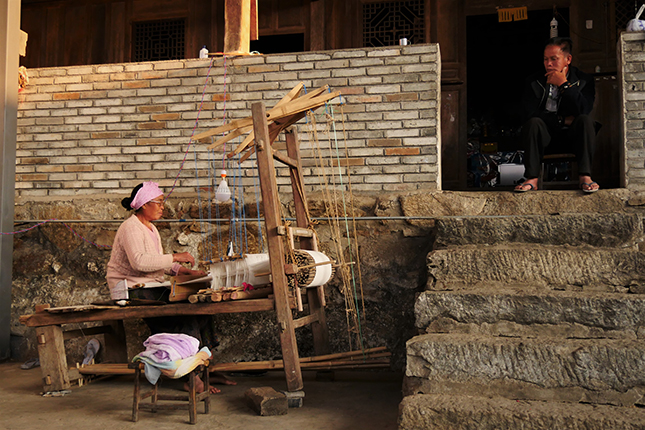
本作品は2015年から始めた織りのパフォーマンスにおいて上映するために仮編集した作品をもとに、現在私にとって3作目の民族誌映画として再編集している。テーマは、織り(やモノづくり)の作業のなかで響く音をつくっている「成分」は何なのか?
タイ族の紋織物は、後染めされた藍色がさめるにつれ、織りこまれた紋様が徐々に際立つ。私は日々の暮らしのなかで変わりゆく布の風合いが好きで、とあるきっかけからフィールドワーク中に女性の機織りを習った。ワン母さんは、「嫁入り前の姉の機織りは子守唄のような音を鳴らしていた」と思い出を語った。複雑な紋様はすでに誰も織らなくなっていたが、私の要望に村の女たちは半世紀前の記憶をたどって伝統の技を嬉々として再現してくれた。織りを学びながら、私は彼女たちの織りの音の美学に気づかされたのだった。
人は、場所やモノとの関係のなかに様々な履歴を織り込み、記憶をつくっている。記憶の喚起は、きまってふとした感覚的な契機に起こる。人の手によって織られた、ものを言わぬ布に魅了される私たちは、そこから何を感じとるのか。ある人は、織物から材料や技術を見出し、織り手が生きた環境や社会状況を読み解く。現代の芸術家は、織物を「楽譜」として読み替えを試みる。そして、タイ族の女性たちは、織物の出来具合から、あるいは、布が織られている今の音から、織り手個人の「人となり」を聴きなす。
かつて村の娘は、将来の夫と子供のために、嫁入り前にたくさんの布を織り貯めなければならなかった。結婚後は老後まで織りを止めた。彼女たちの布は、家事や農作業、思い人との逢瀬の合間をぬい、長い時間をかけて織りあげられるのだった。彼女たちは布を織る機に豊かな音を鳴らす工夫を凝らしていた。織りする身体は、杼や筬、綜絖、そして錘の木材など、機の様々な部分と協働し、リズミカルに運動する。女たちの織りの運動は、様々な感情、感覚的な記憶や思いをエネルギーにして生じ、反復し、そこに「音のアッサンブラージュ」を現す。音と共に生まれた布は、私たちをとりまく雰囲気のように、いつも感性的な残響をただよわせている。
撮影を試みるなか、織りが日常から消えた今では、昔ながらの感性を映像でいかに表現すればよいのか糸口を見つけられずにいた。私が彼女たちの言葉として聞きたかったことは、いつもフィールドの日々の暮らしのなかでふとしたときに紡がれてきた。逆に、彼女たちにとって布や織りは言葉にせずともすでに雄弁に語っている(感じさせている)。そして、織りや布と共に生きてきた彼女たちの心や身体のなかで残響はまだ消えていない。できればそんな言葉にならない時間のなかに織られてきた感性を映像で表現したい。
皆様の感想やアドバイスをお願いいたします。
参考:伊藤悟2014「織機から響く生活の音 ― 撮影と身体実践の往還が引き起こした感性への気づき」『カルチュラル・スタディーズ年報』2、pp.181-190
■プロフィール
伊藤 悟 (日本学術振興会特別研究員/京都文教大学所属)
中国雲南省西部、タイ王国北部にて民間芸術・芸能についてフィールドワークを行っている。民族楽器の演奏を続け、2015年より「音の織機」のパフォーマンス活動を始める。
■国際映画祭出品作品
2011年『Creation and Chanting of Lik Yaat』(邦題:こころを架けることば)
2014年『Sensing the Journey of the Dead』(邦題:死者を送るうた)
Anthro-film Laboratory 24
Ethnofiction
- Film screening and Discussion with Jana Eiting -
Presenter : Jana Eiting
Date & Time: Oct 31st, 17:00–, 2017
Venue: National Museum of Ethnology, 4th Floor, Eizo Jikken Shitsu (Visual Experiment Laboratory),
Senri Expo-Park 10-1, Suita, Osaka 565-8511 Japan
http://www.minpaku.ac.jp/english/
reservation is required by Oct 29th kawase07@gmail.com
日時:2017年10月31日(火)17:00–
会場: 国立民族学博物館4階 映像実験室
(参加希望者が多数の場合、会場を別室へ変更します。)
〒565-8511 大阪市吹田市千里万博公園10-1
http://www.minpaku.ac.jp/museum/information/access
※発表言語は英語です。
※参加希望者は10月29日までにkawase07@gmail.comまで連絡、ご予約ください
■Abstract
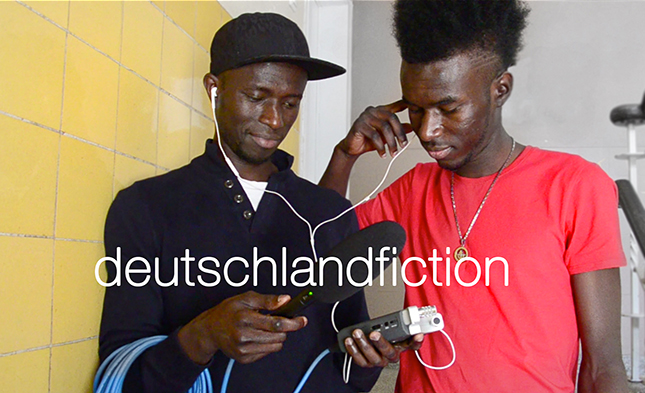
Deutschlandfiction (2017)
The film was made in collaboration with Muhammed and Prince, two young men from The Gambia who are currently looking for asylum in Germany. They wanted to share their experiences and inner knowledge about being a refugee in Germany. The film shows two appointments at the immigration office and how the treatment of the officers affect their daily life and mental state.
Deutschlandfiction is an ethnofictional film and was part of my master’s thesis. The method or ethnographic film genre ethnofiction is mostly known by Jean Rouch’s films from the 50s and 60s (Jaguar and Moi, un Noir) and later by Johannes Sjöberg who developed principles for the method and created his own ethnofiction called Transfiction. The method implies many approaches of the discipline of visual anthropology that seem to promise a contemporary and ethical research. Some of the approaches are reflection, participation, a collaborative spirit, blurring the borders of disciplines like art and ethnography and playing with the old dualisms like fact and fiction as well as objectivity and subjectivity. Since I don’t see a method as something rigid and enclosed, I tried to explore and experiment with the ethnofiction in Deutschlandfiction a bit further. I worked in a full collaboration for instance, i.e. no hierarchy, all decisions were made together by the team, everyone was allowed to film and to act in front of the camera. I also accompanied the making of the film with taking detailed notes and doing interviews with Muhammed and Prince in order to reflect on the method and the making of the film, always looking out for new and surprising elements. In the written part of my master’s thesis Figuring out Ethnofiction I described and reflected on each step of the filming to get a broader understanding of the practical implementations of ethnofiction.
■Filmography
Conteh, Muhammed/Eiting, Jana/Kani, Prince (2017): 17 Min. Shoot: 2016.
Germany: University of Bremen.
Rouch, Jean (1969/70): Jaguar. 88 Min. Shoot: 1954-55. France: Les Films de la Pléiade.
Rouch, Jean (1960): Moi, un Noir. 73 Min. Shoot: 1957. France: Les Films de la Pléiade.
Sjöberg, Johannes (2007): Transfiction. 57 Min. Sweden/UK: faktafiktion.se and Manchester University.
■Bio
Jana Eiting is a freelance artist for the Canadian-German performing arts company Mammalian Diving Reflex. She has co-coordinated, co-directed, and co-produced a number of projects, particularly in Germany but also in Switzerland and Austria. She did her Bachelor degree in cultural and religious studies and her masters degree in transcultural studies at the Universität of Bremen. In her masters program Jana focused on the topics refuge and asylum as well as visual anthropology. Deutschlandfiction (2017) was part of her masters thesis and is her first ethnographic film. In 2017 she also made a film about Cosplay with the app "Snapchat" in collaboration with the German youth wring of Mammalian Diving Reflex.
■Mammalian Diving Reflex
Based in Germany and Canada, Mammalian Diving Reflex views innovative artistic interventions as a way to trigger generosity and equity across the universe. Founded in 1993, Mammalian is a research-art atelier dedicated to investigating the social sphere, always on the lookout for contradictions to whip into aesthetically scintillating experiences. We are a culture production workshop that creates site and social-specific performance events, theatre-based productions, gallery-based participatory installations, video products, art objects and theoretical texts.
Mammalian’s body of work is interconnected, varied and vibrant, reflecting our unique and growing body of knowledge and expertise on the use and function of culture. We create work that recognizes the social responsibility of art, fostering a dialogue between audience members, between the audience and the material, and between the performers and the audience. In all it’s forms, the company’s work dismantles barriers between individuals of all ages, cultural, economic and social backgrounds; we collaborate with non-artists, and offer both participatory opportunities for the audience as well as the traditional option of simply watching the proceedings as they unfold. It is our mission to bring people together in new and unusual ways, in Toronto, Canada, our home-base, and around the world, to create work that is engaging, challenging, and gets people talking, thinking and feeling.
For more info: mammalian.ca
At the Kyoto Experiment 2017 we are doing the Project The Children’s Choice Awards. It is an intervention into the structure and institution of an arts festival, where a group of between 20 to 80 ten-year-olds from local public schools are appointed the official festival Jury, are chauffeured to and from festival shows to see the art, take notes, and size it all up. The judges respond to criteria that they have created from their vast expertise, and collectively they determine up to 50 award categories and vote on the winners. The project culminates in an Awards Ceremony where the kids present hand-made trophies to the winners, all decided by them, and described in their own words. Check-out the action and the award winners on the project blog: http://childrenschoiceawards.blogspot.ca/
Anthro-film Laboratory 23
制作過程のドキュメンタリー映画のブラッシュアップセミナー
映画『Fieldnotes フィールドノート』 撮影/編集:矢野原佑史
制作過程の映画のブラッシュアップを目的とするセミナーを、以下の通り、みんぱくで開催いたします。今回は国立民族学博物館外来研究員の矢野原佑史が、現在制作中のドキュメンタリー映画『Fieldnotes フィールドノート』について発表・解説し、参加者と意見交換する会にいたします。どなたでも参加いただけます。会の詳細は以下を確認ください。
会場:国立民族学博物館4階映像実験室
〒565-8511 大阪府吹田市千里万博公園10-1
http://www.minpaku.ac.jp/museum/information/access
日時:2017年7月18日(火) 16:00-
※参加希望者は前日までに矢野原佑史(yushi.yanohara@gmail.com)へ連絡、ご予約ください
『Fieldnotes フィールドノート』について
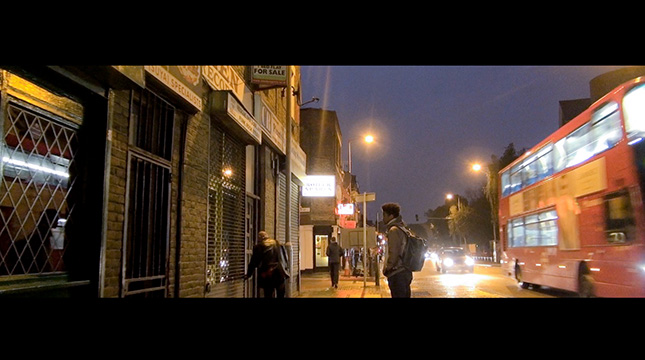
現在制作過程にある本映画は、人類学的なフィールドワークの現場において、発表者が用いたフィールドノートの断片を映像と音で表現しようと試みたものです。テクスト主体の民族誌という形式では伝えきれない感覚や感情の領域、ヒトやモノの気配等を「オーディオヴィジュアルなフィールドノート」という形で残していくことを想定しています。本映画を構成する上では「俳句」のフォーマットを用います。俳句のフォーマットを作品構成に取り入れることによって生まれる詩的かつ音楽的な映像表現の可能性を、皆様と議論できれば、と思います。本作の着想と制作のきっかけとなったのは、2006年からベルギーで実施されてきたSoundImageCulture(通称SIC)という映像制作の国際ワークショップ参加にあります。今回のセミナーでは、SICの目的や方向性とSIC参加者の作品も紹介したいと思います。よろしくお願いいたします。
発表者プロフィール
2005年より、カメルーン共和国・東南部熱帯林地域に暮らすピグミー系狩猟採集民の音楽と、同国都市部で若者たちが実践するヒップホップ・カルチャーについて研究。現在、京都大学アフリカ地域研究資料センター研究員、ならびに国立民族学博物館外来研究員。
© Anthro-film Laboratory
Anthro-film Laboratory 22
制作過程のドキュメンタリー映画のブラッシュアップセミナー
『オキナワへいこう』(仮題) 大西暢夫監督
制作過程の映画のブラッシュアップを目的とするセミナーを、以下の通り、みんぱくで開催いたします。今回は映画監督、写真家の大西暢夫氏をお迎えし、氏が現在制作されている『オキナワへいこう』について発表・解説いただき、参加者と意見交換する会にいたします。どなたでも参加いただけます。会の詳細は以下を確認ください。
会場:国立民族学博物館2階第7セミナー室
〒565-8511 大阪府吹田市千里万博公園10-1
http://www.minpaku.ac.jp/museum/information/access
日時:2017年7月6日(木) 16:00-
※参加希望者は7月3日までに川瀬慈(kawase07@gmail.com)まで連絡、ご予約ください
ドキュメンタリー映画 『オキナワへいこう』概要
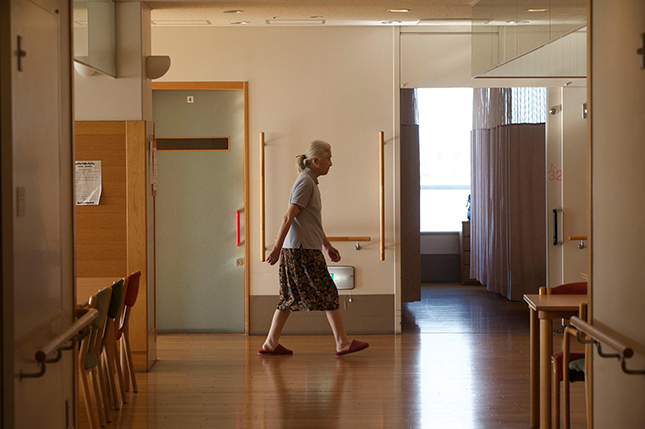
まだ未完成の『オキナワへいこう』は、精神科病棟とそこに入院する患者さん(精神障害者)のドキュメンタリー映画です。
日本の精神科医療の大きな問題として、長期入院という専門用語がある。
精神科病棟の歴史が長ければ長いほど、長期で入院する患者さんの数も多い印象だ。
入院歴が30年や50年といった常識では考えられない患者さんは日本にたくさんいる。
僕は、日本各地の精神科病棟に16年前から取材を続け、現在も『精神科看護』という医療系の専門誌のグラビア(8p)を連載し続けている。
古い格子のある病院から、現在は明るい新病棟に建て変わったところが多くなったが、昔から入院している患者さんの居場所は、変わらないのが現状だ。
地域移行という言葉が医療側から一般社会に投げかけられるようになったが、実際は長期入院の患者さんの行き場は本当に難しい社会問題になっている。
映画『オキナワへいこう』は、大阪の浅香山病院(堺市)の慢性期(開放病棟)の病棟が舞台になっている。
そこに暮らす患者さんたちのほとんどが長期入院。
その中の一人の女性患者さんの夢は「人生一度の沖縄旅行」だった。それに付いて行きたい患者さんが、他に4人。入院患者が外泊をして沖縄旅行を計画するなんて、聞いたこともなかったが、有志の看護師たちが、「行けばいいじゃん!」と率先して、沖縄旅行を促す。
しかしそれに立ちはだかったのは、主治医だった。
「状態が悪いのに旅行に出せない」という判断だったのだ。
主治医より関わりの深い看護師たちは、状態が悪いという判断に疑問を抱く。
長期入院の原因は幾つか考えられるが、その一つに主治医の権限が盛り込まれる。
自分の主張を主治医の意思決定だけで左右される。病院の中では、自分の判断で暮らせていけないということだ。
結局、沖縄に行けたのは、主治医の違う二人の患者さんだった。
一人は外泊届、一人はそのために退院までした。
感動の沖縄旅行だったが、結局、元の病棟に戻り、退院した患者さんも再入院した。これが精神科なのだ。
全国で100万人以上の患者さんが暮らす精神科病棟。
退院を受け入れる地域の僕たちの意識は、精神障害者の生き方を変える可能性が大いにあるが、病院の存在そのものにも問われることは多いだろう。
たかが沖縄旅行、されど沖縄旅行。その一歩は、閉ざされた社会の塀を越えようとする患者さんたちの社会への訴えが詰まっていた。
撮影/監督:大西暢夫
大西暢夫監督の紹介
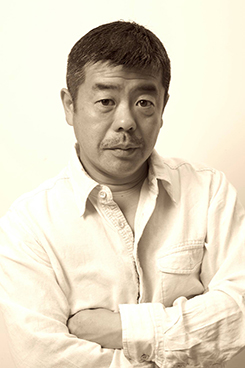 1968年岐阜県育ち。
1968年岐阜県育ち。
18歳で上京し、東京綜合写真専門学校卒業後、写真家・映画監督の本橋成一氏に師事。1998年に独立。25年間の東京での暮らしから、2010年秋より岐阜県の池田町で田舎暮らしを始める。現在は雑誌などで連載をしている。
ダムに沈む村や精神科病棟で暮らす人々やアールブリュットなど長期取材が続く。
《主な著書》
1『僕の村の宝物』(情報センター出版局)
2『分校の子どもたち』(カタログハウス)
3『山里にダムがくる』(共著:山と渓谷社)
4『おばあちゃんは木になった』(ポプラ社)
第8回日本絵本賞/日本図書館協議会 選定図書
5『ひとりひとりの人〜僕が撮った精神科病棟〜』
(精神看護出版)
日本図書館協議会 選定図書
6『花はどこから』(共著:福音館書店)
7『水になった村』(情報センター出版局)
8『徳山村に生きる』(農文協)
9『アウトサイダーアートの作家たち』(角川学芸出版)
10『ぶた にく』(幻冬舎)
第58回小学館児童出版文化賞/第59回産経児童出版文化賞 大賞
ミツバチ文庫(山田養蜂場)
11『糸に染まる季節』(岩崎書店)
12『みつばちとともに』(農文協)
児童福祉文化賞(5冊セット本受賞)
ミツバチ文庫(山田養蜂場)
13『東北沿岸600キロ震災報告』(岐阜新聞連載記事・自費出版)
14『3.11の証言 心に留める東日本大震災』(岐阜新聞連載記事・自費出版)
15『津波の夜に 3.11の記憶』(小学館)
日本図書館協議会 選定図書
16『しいたけとともに』(農文協)
17『ここで土になる』(アリス館)
2016年 小学校高学年の課題図書
●ドキュメンタリー映画『水になった村』 2007年製作
(配給:ポレポレタイムス社 第16回地球環境映像祭最優秀賞)
●ドキュメンタリー映画『家族の軌跡 3.11の記憶から』2015年製作
(山形国際ドキュメンタリー映画祭 上映作品)
●現在、ドキュメンタリー映画『おきなわにいこう』(仮題)を製作中
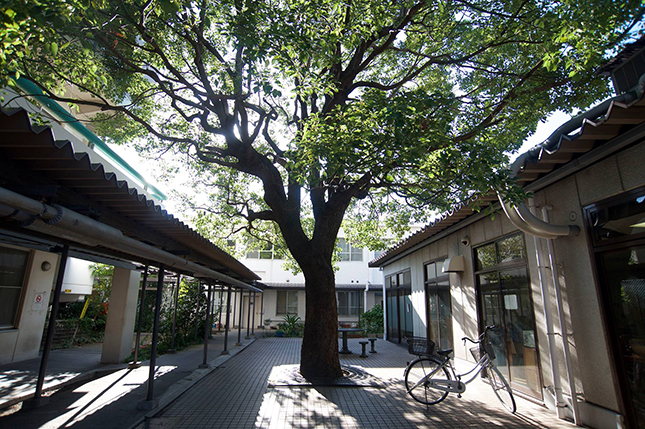
Anthro-film Laboratory 20
Filming The Everyday:
Poetics of Observation and Sense of Place in Artist, Experimental and Ethnographic Cinema.
Speaker : Becca Voelcker
Date & Time: June 27th, 16:00–, 2016
Venue: National Museum of Ethnology, 4th Floor, Eizo Jikken Shitsu
(Visual Experiment Laboratory), Senri Expo-Park 10-1, Suita, Osaka
565-8511 Japan
http://www.minpaku.ac.jp/english/
reservation is required by 2 days before the seminar
kawase07@gmail.com
日時:6月27日(月)16:00–
会場: 国立民族学博物館4階 映像実験室
(参加希望者が多数の場合、会場を別室へ変更します。)
〒565-8511 大阪市吹田市千里万博公園10-1
http://www.minpaku.ac.jp/museum/information/access
※発表言語は英語ですが、日本語での議論もOKとのことです。
※参加希望者は6月25日までに必ずkawase07@gmail.comまで連絡、ご予約ください
■Abstract
Watching a film can be like traveling to another place. We smell and feel the film’s sights and sounds, learning about other cultures and perspectives. Unbound from conventional plot or narrative, experimental non-fiction film enjoys freedom in conveying everyday life and sense of place. It can be made by anthropologists, artists, poets, and by you or me— as well as by trained filmmakers. Given the current global context of economic, political and environmental migration, places and identities are changing every day. Shifting patterns of landscape, language, labour and memory mean that attending to issues of place (and displacement) is vital for preserving peace, promoting intercultural understanding, and protecting the environment. This talk looks at ways I have engaged with filmmaking and sense of place through scholarly, artistic and curatorial approaches. It asks what exactly might be meant by ‘sense of place,’ and why should it be held in such high regard in art, anthropology and film studies. Drawing from examples from around the world, including films made at Harvard’s Sensory Ethnography Lab, this talk will attempt to identify some common threads that weave diverse filmmaking practices together. It will also draw from Japanese examples and discuss a curatorial project I am currently developing about Japanese nonfiction film and sense of place. The talk will be in English but please feel free to comment and ask questions in Japanese.
■Bio
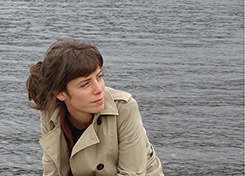 Becca Voelcker (b. 1990) is a PhD student and Presidential Scholar at Harvard University. Her research explores how moving images made between artistic and ethnographic practices can communicate senses of place and displacement. Becca grew up bilingually in rural Wales, UK. Before beginning at Harvard, she studied art at Goldsmiths, University of London, and film theory at The University of Cambridge. From 2013-15 she was based in Tokyo, Japan, as a Daiwa Scholar. Although focused on writing and curating, she also has a background in art practice. She has exhibited internationally, and writes for contemporary art journals including Frieze.
Website www.beccavoelcker.co.uk
Becca Voelcker (b. 1990) is a PhD student and Presidential Scholar at Harvard University. Her research explores how moving images made between artistic and ethnographic practices can communicate senses of place and displacement. Becca grew up bilingually in rural Wales, UK. Before beginning at Harvard, she studied art at Goldsmiths, University of London, and film theory at The University of Cambridge. From 2013-15 she was based in Tokyo, Japan, as a Daiwa Scholar. Although focused on writing and curating, she also has a background in art practice. She has exhibited internationally, and writes for contemporary art journals including Frieze.
Website www.beccavoelcker.co.uk
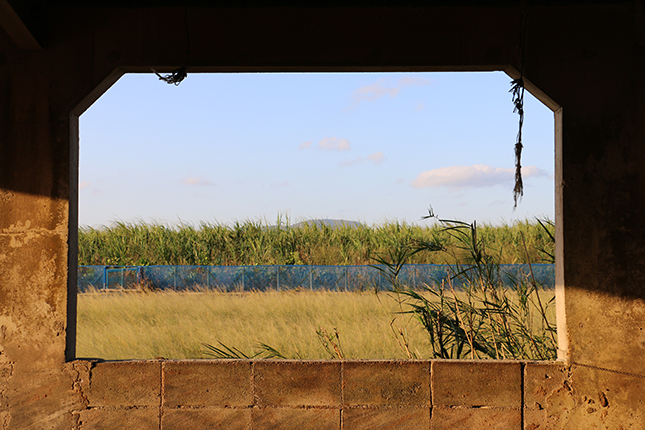 Still from Island (2015) (Becca Voelcker’s film Island, 2015 (28’) traces the rhythms and routines of everyday life on Ishigaki Island, Japan. It premiered in the 2016 Whitstable Biennale, UK)
Still from Island (2015) (Becca Voelcker’s film Island, 2015 (28’) traces the rhythms and routines of everyday life on Ishigaki Island, Japan. It premiered in the 2016 Whitstable Biennale, UK)
Anthro-film Laboratory 19【this event is canceled】
Experimental Visual Anthropology: Exploring Colour, the Image and the Other
- Film Screening and Discussion with An van. Dienderen -
Date & Time: April 5th, 14:00–, 2016
Venue: National Museum of Ethnology, 4th Floor, Eizo Jikken Shitsu
(Visual Experiment Laboratory), Senri Expo-Park 10-1, Suita, Osaka
565-8511 Japan
http://www.minpaku.ac.jp/english/
reservation is required kawase07@gmail.com
日時:4月5日(火)14:00–
会場: 国立民族学博物館4階 映像実験室
(参加希望者が多数の場合、会場を別室へ変更します。)
〒565-8511 大阪市吹田市千里万博公園10-1
http://www.minpaku.ac.jp/museum/information/access
※参加希望者は3月末日までに川瀬(kawase07@gmail.com)へ連絡ください。
※発表・議論は英語で行います。
■Program
1. “LILI”, 2015, 10’
 Nominated best short film award BFI festival London, selected for Experimenta at BFI London, IFFRotterdam 2016, commissioned by Contour 7 Biennale of the Moving Image
Nominated best short film award BFI festival London, selected for Experimenta at BFI London, IFFRotterdam 2016, commissioned by Contour 7 Biennale of the Moving Image
In a TV studio a girl named Lili is asked to serve as a so-called China Girl. China Girls, used in cinema history since the 1920’s, are women with Caucasian skin who are filmed alongside a colour-chart in order to adjust the colours of the film. They have no dialogues to memorize or characters to impersonate. All they have to do, is have an impeccable white complexion. Their skin – white as porcelain – is used as a reference for the colour grading of camera and printing, ultimately excluding people of colour who do not conform to this implicit norm. Lili tells the story of one of these China Girls through archival material, found footage and documentary recordings, and questions the tradition of China Girls contextualized in a society, which, according to anthropologist Michael Taussig exemplifies chromophobic uneasiness with color.
2. “Letter Home”, 2015, 10'
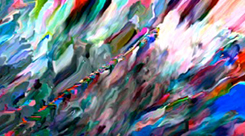 Letter Home is a film letter - without the use of narration - in which the touristic images of the artist's trip to Japan are digitally distorted. The basic strategy of this type of digital corruption is copying, which is used in the film to challenge the western perception of Japan as a ‘copying culture’. The sound, by contrast, is not corrupted, thus it helps in structuring the abstract and chaotic images and invites the viewer to project his or her own memories and sensations on it. Letter Home combines aspirations of both the touristic image hunter and the media-archeologist so as to give full expansion to the sensations produced by the digitally distorted and materialistically manipulated images and realistic sounds. Letter Home is made as a diptych with "Cherry Blossoms", which was awarded and presented at such festivals as Fid Marseille, IFFR, Oberhausen, Festival des Femmes Le Créteil, etc.
Letter Home is a film letter - without the use of narration - in which the touristic images of the artist's trip to Japan are digitally distorted. The basic strategy of this type of digital corruption is copying, which is used in the film to challenge the western perception of Japan as a ‘copying culture’. The sound, by contrast, is not corrupted, thus it helps in structuring the abstract and chaotic images and invites the viewer to project his or her own memories and sensations on it. Letter Home combines aspirations of both the touristic image hunter and the media-archeologist so as to give full expansion to the sensations produced by the digitally distorted and materialistically manipulated images and realistic sounds. Letter Home is made as a diptych with "Cherry Blossoms", which was awarded and presented at such festivals as Fid Marseille, IFFR, Oberhausen, Festival des Femmes Le Créteil, etc.
3. “Cherry Blossoms” 2012, 10'
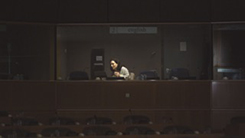 Screened at Fid Marseille, Oberhausen, Le Créteil, FIDOCS Chili, DMZ Korean international documentary Festival, Leiden Internat film festival, Kasseler DocFest
Screened at Fid Marseille, Oberhausen, Le Créteil, FIDOCS Chili, DMZ Korean international documentary Festival, Leiden Internat film festival, Kasseler DocFest
Special Prize of the Jury at the International Short Film Competition "Monsieur Guillaume" at FIDOCS Chile 2013:
Carly is working late at night in one of the many translation booths in a dark plenary hall of the European Parliament. It is the only place worldwide where everyday work is translated in 23 languages. Carly exerts to translate a documentary about Japanese subculture. Without specific interest for the theme she translates monotonically from the Japanese. Although she initially automatically translates, she is more and more attracted by the punk girls.
■About An van. Dienderen
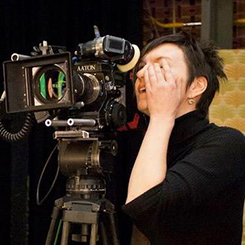 Filmmaker An van. Dienderen works at the intersection between documentary, anthropology and visual arts. While exploring various documentary strategies and the anthropological relation between self and other, she also investigates the medium of film in a self-reflective way. She investigates the opposition of fact and fiction, imagination and observation, representation and experience, using the importance of the image in our multicultural society as a point of departure. Her work shows the absurd, poetic, and often touching stories that these oppositions can hold in everyday life. (Source Contour7)
Filmmaker An van. Dienderen works at the intersection between documentary, anthropology and visual arts. While exploring various documentary strategies and the anthropological relation between self and other, she also investigates the medium of film in a self-reflective way. She investigates the opposition of fact and fiction, imagination and observation, representation and experience, using the importance of the image in our multicultural society as a point of departure. Her work shows the absurd, poetic, and often touching stories that these oppositions can hold in everyday life. (Source Contour7)
She graduated in audiovisual arts (Sint-Lukas, Brussels), obtained a PhD in Comparative Cultural Sciences (Ghent University), and was a visiting scholar at UC Berkeley. She made several documentaries screened worldwide, awarded with (inter)national prizes. Films include Visitors of the Night (’98), Site (’00), Tu ne verras pas Verapaz (’02), The Ephemerist (’05) Patrasche, a Dog of Flanders – Made in Japan (’08), Cherry Blossoms (’12), Letter Home (’15) and Lili (’15). She regularly publishes on visual/performative anthropology, is a lecturer and artistic researcher at the School of Arts Ghent, and initiated the international art workspace SoundImageCulture and productioncompany Elektrischer schnellseher. Her work has been shown on the Margaret Mead Film and Video festival (New York), FID Marseille, DocFest Sheffield, Belluard Festival (Fribourg), DMZ Korea International documentary festival, International Short film Festival Oberhausen, FIDOCS, Festival Internacional de Documentales de Santiago, International Filmfestival Rotterdam, etc and is represented by argos.
More info: http://www.anvandienderen.net
Anthro-film Laboratory 18
ブラッシュアップセミナー
制作過程の民族誌映画のブラッシュアップを目的とするセミナーを以下の通り、みんぱくで開催します。
作品のモード、構成、モンタージュ、字幕作法等に関する、クリティカルかつ建設的な意見交換の場となればよいと思います。参加希望者は会の前日までに川瀬(kawase07@gmail.com)へ連絡ください。
映像制作の経験がない方もふくめ、どなたでも参加いただけるカジュアルな会です。
川瀬慈
日時:1月14日(木)14:30–
会場: 国立民族学博物館4階 映像実験室
※参加希望者が多数の場合、会場を別の部屋へ変更します。
〒565-8511 大阪市吹田市千里万博公園10-1
http://www.minpaku.ac.jp/museum/information/access
■発表1
中央アジアのスーフィズムをめぐる「民族誌的な映像記録」の制作に向けて
発表者:和崎聖日(中部大学全学共通教育部 全学総合教育科講師)
要旨:中央アジアでは、12世紀後半から、スーフィズム(イスラームにおいて内面を重視する思想・運動)が社会的に大きな役割を果たしてきた。スーフィズムの核のひとつは、神との神秘的な合一体験を目指す修行であるズィクルにある。なかでも、声を出して神の名を連祷する「声高のズィクル」は、中央アジアにおいて、神への畏怖や愛を謳う、または壮大な初期イスラーム史を讃える叙事詩の美しい詠唱とともに、日常生活で直面する病や死へのある種の「治癒」儀礼としても行われてきた。発表者は、中央アジアでタジキスタンと並ぶイスラーム文化圏であるウズベキスタンを地域対象として、この「声高のズィクル」を中心に、スーフィズムと関わりのある宗教儀礼をこれまで記録してきた。本発表では、ソ連時代の反宗教政策を生き延びたスーフィズムの今日の姿を映す「民族誌的な映像記録」の制作に向けておおまかな構成を示したいと思います。
発表時間:50分(日本語での発表)
主な著作:
2015「旧ソ連・中央アジアのウラマー一族と『英知集』」『歴史評論』第783号、2015「中央アジア定住ムスリムの婚姻と離婚」藤本透子編『現代アジアの宗教―社会主義を経た地域を読む』春風社、2015「揺らぐ家族と農村―ソ連解体後のウズベキスタンにおける海外就労とその宗教的帰結―」小島敬裕編『移動と宗教実践―地域社会の動態に関する比較研究―』CIAS Discussion Paper No.47
■発表2
『Berlin Transgression』の制作にむけて
発表者:
てらだゆうき (東京大学大学院)
キュー・レイ(東京大学訪問研究員)
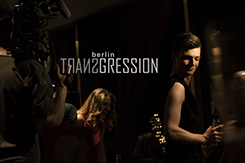 要旨:多様で開放的な都市として知られるベルリンだが、セクシャル・マイノリティーとされる人々は、日々葛藤や暴力を経験している。ユーモアと夢に溢れた方法で困難に立ち向かう5人のパフォーマーを追った。ドラァグクイーンやトランスジェンダーのアーティストとして活動するパフォーマーの多くは、日中は違う職業を持ち、経済的に余裕があるとはいえない状況下で、ナイトクラブの小さなステージに立ち続けている。ベルリンの壁が崩壊し、東西統一から25周年を迎えるドイツ。資本主義というシステムの中で、自由は獲得できたのか。ナイトクラブでのステージと彼らの日常に密着し、社会のさまざまな境界線に挑戦するドキュメンタリーである。(2016年3月完成予定)
要旨:多様で開放的な都市として知られるベルリンだが、セクシャル・マイノリティーとされる人々は、日々葛藤や暴力を経験している。ユーモアと夢に溢れた方法で困難に立ち向かう5人のパフォーマーを追った。ドラァグクイーンやトランスジェンダーのアーティストとして活動するパフォーマーの多くは、日中は違う職業を持ち、経済的に余裕があるとはいえない状況下で、ナイトクラブの小さなステージに立ち続けている。ベルリンの壁が崩壊し、東西統一から25周年を迎えるドイツ。資本主義というシステムの中で、自由は獲得できたのか。ナイトクラブでのステージと彼らの日常に密着し、社会のさまざまな境界線に挑戦するドキュメンタリーである。(2016年3月完成予定)
This is a story about the daily struggles of drag queens and transsexual artists in what is supposed to be one of the world's most liberal cities, Berlin, 25 years after the fall of the wall. In their search for love and recognition they fight against the violence of social norms in a witty and courageous manner. This project sheds light on the life of performers whose stage is mainly gay bars and fetish clubs. We followed five main characters not only to the back stage but also to their homes where they opened up their hearts about their deepest dreams and desires.
発表時間:50分(英語での発表)
トレーラー映像:https://vimeo.com/130104516
ホームページ:http://berlintransgression.com/
Facebook:https://www.facebook.com/BerlinTransgression
プロフィール:
てらだ ゆうき(監督)
1986年東京生まれ。ロンドン大学政治学科を卒業後、現在東京大学大学院在籍。芸術と社会の関係に幅広く関心があり、ミュージアムの歴史と表現芸術に関する研究を専門とする。2014年訪問研究員としてベルリン自由大学に滞在中、映像人類学のクラスに参加。Berlin Transgressionが監督デビュー作となる。
キュー・レイ(監督)
2014年~2015年までベルリン自由大学訪問研究員。現在は東京大学訪問研究員。経験豊富なジャーナリストとして独自の国際政治雑誌とポッドキャスト(Blynkt)を立ち上げる。2014年にKaskelineフィルムアカデミーを卒業し、Berlin Transgressionが監督デビュー作となる。
Anthro-film Laboratory 17
ブラッシュアップセミナー
日時:7月15日(水曜・休館日)16:00–
会場: 国立民族学博物館4階 映像実験室(青い扉の部屋)
※参加希望者が多数の場合、会場を別の部屋へ変更します。
〒565-8511 大阪市吹田市千里万博公園10-1
http://www.minpaku.ac.jp/museum/information/access
発表者・作品概要:
作品1.『今日の精霊(前編)』
約16分、日本語字幕
桂悠介(大阪大学大学院人間科学研究科)
青年海外協力隊で西アフリカはマリに滞在中、気づいたら自分の周りに漂っていた「精霊」という存在。帰国後どうしても気になって再度マリに行った際聞いてきました。「精霊って何ですか?」治療師の先生、熱心なムスリム、たまたま出会った人、踊る人、殺される鶏、隣人の鼻歌の中、それぞれにとっての、それぞれの精霊。「精霊なんて存在しない」という声はまだ聞こえてこない?フィールドワークの成果を映像で提示するというより、フィールドワークが始まるプロセス自体が映っていると思います。次回の撮影に向けた前編という位置づけです。よろしくお願いいたします。
作品2.『Between Homes: African Floating in Hong Kong』
28分、英語字幕
許景新/Jerome Xu (香港浸会大/Hong Kong Baptist University)
It's a documentary about African people in Hong Kong. They have different identities in Hong Kong, but most of them are refugees. To some extent, refugee is their lifestyle. They are experiencing the multi-dynamic home in this era of globalization.
※許さんは欠席。参加者からの意見をメールで伝えます。
Anthro-film Laboratory 16
ブラッシュアップセミナー
日時:6月10日(水曜・休館日)14:00–
会場: 国立民族学博物館4階 映像実験室(青い扉の部屋)
※参加希望者が多数の場合、会場を別の部屋へ変更します。
〒565-8511 大阪市吹田市千里万博公園10-1
http://www.minpaku.ac.jp/museum/information/access
発表者・作品内容:
発表者1.林紗記(京都大学大学院人間・環境学研究科)
『新潟県十日町市~冬の記憶~』
(45分)
発表者は2014年の8月の1ヶ月間、新潟県十日町市の山間集落で農業体験インターンを通し地域の夏の暮らしを映像で記録した。今回は2015年1月の1週間、同じく新潟県十日町市の山間集落で雪とともに生きる人々の冬の暮らしに焦点をあてた映像を記録した。松代地区にある竹所集落と人口規模や立地条件などが似通った飛渡地区にある池谷・魚田川集落を撮影地とし、人口減少という同じ問題を抱える集落同士の交流や、どんど焼き・祈寿念仏などの冬の年間行事を記録した。撮影者と被写体の関係性・進化する撮影機器によってどのように映像が変容するのか、撮影地において上映会を開くことによって何が生まれるのか、などについて今後考えていきたい。今回上映する映像はまだ完成版ではなく、みなさまの意見やアドバイスを元にブラッシュアップを行っていきたい。
発表者2.村津蘭(京都大学大学院アジア・アフリカ地域研究研究科)
『A do fine a そこにいるか』
(77分)
発表者は西アフリカのベナン共和国アラダ市に2012年1月から2014年1月まで2年間、青年海外協力隊員として滞在した。そこで知り合った、アブラヤシ灰の伝統石鹸作りで生計を立てるおばあさんを中心に、その場所で生活する、ということを、
日常の生活と死にともなう儀式を通して描く。
Anthro-film Laboratory 15
於:国立民族学博物館 4階 大演習室
2月17日(火)15時スタート
発表者:
太田光海 社会科学高等研究院(EHESS)社会人類学部
矢野原佑史 京都大学アフリカ地域研究資料センター
コメンテーター:
森田良成 大阪大学大学院人間科学研究科
大森康宏 国立民族学博物館
発表者1 太田光海 社会科学高等研究院(EHESS)社会人類学部
「友情と亀裂の狭間を生きる―パリ郊外の高校生サッカーチームにおけるフィールド体験から—」
本発表では、移民社会フランスにおけるサッカーの位置づけの特殊性とその現状について、修士課程で行った人類学的調査と映像撮影の体験を振り返りながら考察する。脱植民地化に伴う旧宗主国への移民の流入とそれに伴う都市郊外における経済的・社会的不平等が問題となる一方、サッカーは移民系選手の活躍の場として羨望と偏見が入り交じる両義的な眼差しにさらされてきた。だが、肥大化するイメージとは裏腹に、人々がサッカーに実際に取り組む様子やロッカールームでの日常的な光景は十分に伝わっていない。極度に多様化する現代フランス社会の中で、今サッカーをプレーする少年たちはチーム内でどのように関係性を紡ぎ出しているのか?そのただ中に人類学者として飛び込み、自らの身体を媒介にしてカメラに「身を預ける」ことで捉えられるものとは何か?上記の視点から、映像人類学的表現の可能性を探るとともに、博士課程進学に向けた展望にも言及する。
発表者2 矢野原佑史(京都大学アフリカ地域研究資料センター)
「『プロモーション・ビデオの映像人類学』という可能性」
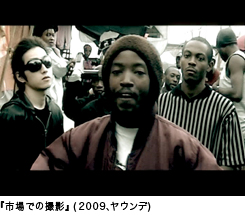 発表者は2006年より、カメルーン都市部におけるヒップホップ・カルチャーとそれを実践する若者たちについて調査を進めてきた。その際、彼らの多くが居住するスラム地区で彼らとともに日常生活をおくり、楽曲や映像の共同制作を行うという調査方法で、彼らの世界観や生活におけるヒップホップ・カルチャーの機能等を考察してきた。
特に、若者たちの世界観をフィクショナルに視覚化するプロモーション・ビデオが、日常生活からは視認できない彼らのオルタナティブな「リアリティ」や時代性を映し出す「イマジネーションの民族誌」である可能性を検討してきた。本発表では、以上の視座より、新しい映像人類学の方向性を指し示す。
発表者は2006年より、カメルーン都市部におけるヒップホップ・カルチャーとそれを実践する若者たちについて調査を進めてきた。その際、彼らの多くが居住するスラム地区で彼らとともに日常生活をおくり、楽曲や映像の共同制作を行うという調査方法で、彼らの世界観や生活におけるヒップホップ・カルチャーの機能等を考察してきた。
特に、若者たちの世界観をフィクショナルに視覚化するプロモーション・ビデオが、日常生活からは視認できない彼らのオルタナティブな「リアリティ」や時代性を映し出す「イマジネーションの民族誌」である可能性を検討してきた。本発表では、以上の視座より、新しい映像人類学の方向性を指し示す。
・各発表、60分以内です。
・出席希望者は2月15日までに、川瀬へ連絡下さい。
kawase07〔アットマーク)gmail.com
Anthro-film Laboratory 14
根来祐(ねごろ・ゆう)監督作品
ふたつを見て、考える
日時:2014年12月5日 13:00 -
場所:大阪大学 吹田キャンパス
人間科学研究科 1F インターナショナル・カフェ
http://www.hus.osaka-u.ac.jp/ja/access.html
入場料:無料
参加ご希望の方は
にメールください
摂食障害の仲間たちが語る『そして彼女は片目を塞ぐ』(2001)
自分と母、祖母が語る『her stories』(2010)
9年が経ち、変わったこと、変わらないこと。
監督と、観て、話して、考える。
その時からあなたの周囲が違って見える。
コメンテーター 藤目ゆき(大阪大学人間科学研究科グローバル人間学専攻・教授)
ファシリテーター 田沼幸子(同専攻・助教)
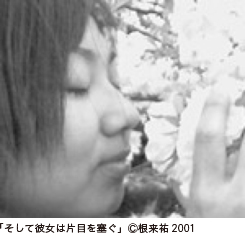 「そして彼女は片目を塞ぐ −Then, She Closes Another Eye—」
「そして彼女は片目を塞ぐ −Then, She Closes Another Eye—」
(Ⓒ根来祐 2001/ビデオ/57分)
摂食障害という依存症、神経症の世界を、当事者の目で追いかけたもの。
監督本人が摂食障害を抱えているがその視点から自分を取り巻く環境を読み取っていく。
3年越しの彼女たちとの交流で見えてきたものは、かつて少女だった彼女たちの目からみた日本の現状だったと思う。
誰が本当の当事者なのか、あなたの目で確かめてみてほしい。
*山形国際ドキュメンタリ—映画祭2001上映作品
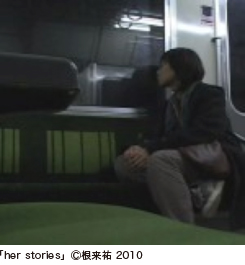 「her stories」
「her stories」
(Ⓒ根来祐 2010/ビデオ/50分)
私、36歳。20代の頃は「仕事が自分のすべて」と思い込み、摂食障害にもなった。
現在はフリーの映像作家として、東京で暮らしている。
母、63歳。結婚、出産を期に幼稚園の仕事をやめ、専業主婦をしてきた。
反対を押し切って上京した娘の人生を思うと、今も不安。
祖母、89歳。実の父が自分と母を捨てた後、日本有数の紡績会社で女工として働いた。
茶道の先生を40年以上続けている。
あなたの生き方を、私は選ばない。
あなたがいるから、私はここにいる。
私・母・祖母…異なっていて、つながっている3世代の女たちの私的ドキュメンタリー
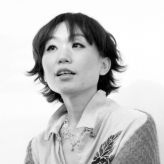 根来祐(ねごろゆう)
根来祐(ねごろゆう)
岡山県倉敷市生まれ。20歳から10年近く摂食障害を経験。数年自助グループに参加。
映画、テレビドキュメンタリーの仕事を経てフリーに。97年に依存症をテーマに短編を3本制作。01年に摂食障害を扱った長編ドキュメンタリーを制作。祖母、母、自分の三世代の労働とライフスタイルを並べた「her stories」などの作品がある。
消費と依存、モラトリアムと成熟拒否、身体、サブカルチャーにおける女子文化、労働行政と移民政策など様々なテーマで作品制作を続けている。
Anthro-film Laboratory 13
Film screening and Discussion with Kieran Hanson
日時:2014年3月18日 19:30 -
場所:天劇キネマトロン http://amanto.jp/tengeki/access.htm
入場料:500 yen
参加ご希望の方はこちらまでメールください
Date: March 18th 19:30–
Venue: Tengegi kinematoron
Address: 1-1-18 Nakazakinishi Kita-ku, Osaka-shi, Osaka-fu, Japan
Charge: 500 yen
Reservation is required
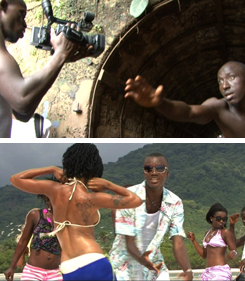 Kieran Hanson will be showing his award-winning film “Shooting Freetown” below. We will discuss about experiments in collaborative documentary filmmaking based on his film projects “Shooting Freetown”, “One Long Journey”, “British Born Chinese” and “Beyond Freetown: The Moa River Journey”.
Kieran Hanson will be showing his award-winning film “Shooting Freetown” below. We will discuss about experiments in collaborative documentary filmmaking based on his film projects “Shooting Freetown”, “One Long Journey”, “British Born Chinese” and “Beyond Freetown: The Moa River Journey”.
Shooting Freetown (2011) 29min
A short documentary film, shot in Sierra Leone (May-July 2011)
Director: Kieran Hanson, UK
Camera, Sound, Editing by Kieran Hanson.
Produced as the final project for MA Visual Anthropology,
Granada Centre for Visual Anthropology, University of Manchester.
Website: www.shootingfreetown.co.uk
Facebook Page: www.facebook.com/shootingfreetown
Twitter: www.twitter.com/ShootingFtown
Synopsis:
A decade since Sierra Leone's devastating civil war, from the ashes rises a new dawn of creativity in audio-visual media. Inspired by Jean Rouch's ‘shared anthropology’ and ‘ethno-fiction’, Shooting Freetown follows three people forging their way in film and music in the nation's capital, facing the constant struggles with vision and resourcefulness. By incorporating collaborative video projects, their stories give a fresh image of post-war Freetown - presented to the world through their own lens.
Awards:
• WINNER Best Film (Student Short Documentary), Manchester Film Festival 2012
• WINNER Espiello Chobin Award (Best Film by a Director Under 30), Espiello International Ethnographic Film Festival 2013
• NOMINEE Student Award, One World Media Awards 2012
• 3RD PRIZE Debut Competition, VI Moscow International Festival of Visual Anthropology
Director Bio:
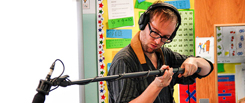 Kieran Hanson is a film-maker from Lancashire, UK. He attained an MA Visual Anthropology from the Granada Centre, University of Manchester in 2011. His thesis was an ethnographic film project carried out over the summer and autumn of that year in Sierra Leone, West Africa. This resulted in the short documentary Shooting Freetown, plus a number of collaborative video pieces. Shooting Freetown has been selected for festivals all over the world, winning several awards and earning a nomination for the prestigious One World Media Awards.
Kieran Hanson is a film-maker from Lancashire, UK. He attained an MA Visual Anthropology from the Granada Centre, University of Manchester in 2011. His thesis was an ethnographic film project carried out over the summer and autumn of that year in Sierra Leone, West Africa. This resulted in the short documentary Shooting Freetown, plus a number of collaborative video pieces. Shooting Freetown has been selected for festivals all over the world, winning several awards and earning a nomination for the prestigious One World Media Awards.
As part of Manchester based film production and education company All Rites Reversed (www.allritesreversed.co.uk), his roles include Co-Producer on One Long Journey, sound recordist on British Born Chinese as well as Assistant Tutor on the Filmmaking For Fieldwork summer course. Kieran recently returned from several months in Brussels developing audio-visual projects with Think Young. He is currently a guest lecturer in visual anthropology at Yunnan University (China) and is editing his forthcoming Sierra Leone film Beyond Freetown: The Moa River Journey.
セミナー記録:市岡康子氏講演
大阪大学卓越セミナー第10回(コンフリクトの人文学セミナー第94回)
映像制作における異文化理解とその表象
日時:2014年2月28日(金)15:00–
場所:大阪大学吹田キャンパス 人間科学研究科 東館106教室
講師: 市岡康子氏 (テレビプロデューサー/ディレクター)
要旨:
パプアニューギニアの深奥部に広がる大パプア台地に暮らすカルリの儀礼ギサロを主題としたテレビ番組制作の実際から、制作者自身の異文化の理解とその表象に至るプロセスを提示する。
ギサロとは「歌」という意味だが、儀礼としてのギサロは歌と悲しみの相互交換といえるだろう。ふたつのロングハウス共同体の間で行われ、訪問側は4人の踊り手とコーラス団を率いてやってくる。儀礼が始まると踊り手が1人ずつ立って歌い始める。メロディーは一定だが、歌詞はその都度書き換えられ、相手の村の生活圏にある地名、大木の名前などがちりばめられている。聴くほうには、それらのなじみの場所にまつわる思い出(亡き父母のいつも働いていた場所など)に触発され涙を流す者がでる。この時踊り手は賞賛されるが、泣かせた相手にタイマツで背中を焼かれる責めに耐えねばならない。予備知識のない一般視聴者には野蛮とか残酷と取られがちな儀礼の底に流れる意味をどのように把握したかを、制作の時間軸に沿って体験してほしい。
日程:
15:00–17:00 「映像制作における異文化理解とその表象」
『ギサロ――悲しみと火傷』(1987年「すばらしい世界旅行」)の
制作過程にもとづき議論する。
17:20–19:00 「開発への渇望」
『ギサロ』関連作品を紹介し、開発援助のありかたを考える。
講師プロフィール:
元立命館アジア太平洋大学教授。1962年に日本テレビに入社し、「ノンフィクション劇場」「すばらしい世界旅行」などのドキュメンタリー番組の制作を担当。1972年、制作会社日本映像記録センターの設立に参加。アジア太平洋地域を専門に多数の番組を制作し、各地の人びとの生活と文化を克明に描いた。2001年から6年間、立命館アジア太平洋大学でフィールドワークに基づいた映像制作のゼミを担当。大阪大学GCOE「コンフリクトの人文学」(2007-2011)では文化人類学の研究成果に基づく映像作品の制作を指導し、2作品を完成に導いた。著書に『KULA―貝の首飾りを探して南海をゆく』(2005年、コモンズ)などがある。
Anthro-film Laboratory 12
制作過程の映像作品のブラッシュアップセミナー
Works-in-progress seminar
日時:2014年1月31日 16:30–
場所:国立民族学博物館内 総合研究大学院大学 第1演習室
発表作品1.Po thi
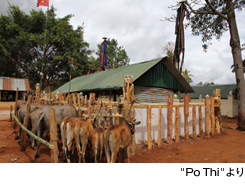 Directed by Eisuke Yanagisawa and Vincenzo Della Ratta
Directed by Eisuke Yanagisawa and Vincenzo Della Ratta
2013/ Hi-Visions/ 34min
“Pơ thi” is the biggest death ritual and ceremony of the Jarai ethnic group in Vietnam. They believe that when someone dies, his or her Spirit is not able to rejoin the ancestors. Only after “Pơ thi” has been celebrated, the Spirit will be able to reach its final destination in the “Village of the Spirits”.Shot in the Central Highlands of Vietnam, this movie summarizes the most significant moments of the “Pơ thi” ritual, from its preparation till the end of the celebration. Parades of disguised figures, animal sacrifices, gong music and dances are performed by the living to please the Spirits of the dead, and to release them from all earthly bonds. Apart from allowing viewers to witness a fascinating traditional ritual, this movie shows us how such traditions continue to exist in the context of modern Vietnam.
Selected in World Film Festival 2014
http://www.worldfilm.ee/
発表作品2.We Don’t Need a Grave
Directed by Satbyul Kim
2013/27min
SHIZENSO is a natural mortuary practice that has no religious affiliation. It scatters cremation ashes of the deceased in the ocean and mountain. During 1990s in Japan, SHIZENSO emerged due to the urbanization and changes in social attitudes towards family and religion. The film recounts stories of members from Grave-Free-Promotion Society (GFPS) who practice Shizenso. It explores not only this unique practice of departing one s beloved ones but also the mixed emotions of those who practice it.
Anthro-film Laboratory 11
Film screening with directors -- 監督と考える、映画のチカラ --
日時:10月18日(金)13:00–16:10
場所:大阪大学(吹田キャンパス)人間科学研究科1階インターナショナル・カフェ
http://www.hus.osaka-u.ac.jp/access/access.html
※本会は、グローバル人間学実験実習Iの公開授業として行います。参加自由、無料ですが、その点、ご理解ください
ある人々と深くかかわり合いながら映像を撮ってこられた二人の
監督をお呼びして、その作品と試みについてのお話をうかがいます。
以下、監督と作品概要
3限(13:00–14:30)
アートプロジェクト「今日、この島に私がいます」 (30分、日本語)
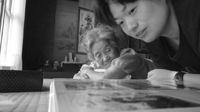 本アートプロジェクトの紹介について:
本アートプロジェクトの紹介について:
「今日、この島に私がいます」とは、映像作家・杉田このみが展開するアートプロジェクト。
ある期間「私」がある「島」に滞在し「やりたいことをやり続けている状態」を作品とする試みである。
来島者とは「出演者」として、カメラで動画や静止画を撮影することや、twitterなどSNSへ出来事を投稿することの承諾書を交わしている。
現在は愛媛県の睦月島で展開。睦月島は、松山市郊外の港からフェリーで30分ほどに位置し、周囲13kmの小島で、人口300人に満たない上に、島民全員が50歳以上という過疎高齢の島である。
睦月島には杉田の父の本家がある。家族親戚や友人らと睦月島に2週間ほどここに滞在し、やりたいことを決める。
2013年9月までに4回実施し、出演者は約100人。これまでに海水浴、釣り、コスプレ、花火、鬼ごっこ、合宿、パフォーマンス、ツーリング、丸刈り、肝試し、猫探し、お絵描き、盆踊り…と、100人の「私」たちは島の人々と交流を深めながら、時には遠巻きに眺められながら島を楽しんだ。
杉田このみ監督
略歴:映像作家。1979年愛媛県松山市生まれ。
2000年より故郷である愛媛県を舞台にした映画を自主制作する。
代表作に「こぎいでな」(2003年)、「日-hitsuki-月」(2007年)、「ふと木歩という名をおもう」(2008年)など。
2007年武蔵野美術大学大学院博士課程単位取得退学。
現在、一橋大学助手、専修大学非常勤講師など。
4限(14:40~16:10)
映画 "We Want (U) to Know" (54 min., English subtitle)
(邦題:何があったのか、知りたい(知ってほしい)) 54分、クメール語、英語
本作は、カンボジアの人々が、クメール・ルージュ裁判のあいだ、痛ましい記憶とどのように折り合いをつけようとしたかを明るみにする。これは参加型フィルムである。村人たち自身がカメラを持ち、クメール・ルージュの時代に何を経験したのかを記録した。その経験を若い世代と共有することで、生き残った人々は30年の沈黙を破り、現在なすべき挑戦に関して力強く語り始めた。木の下の大きなスクリーンは、立ち向かうための公共空間となり、この映画を超えた希望の標となった。
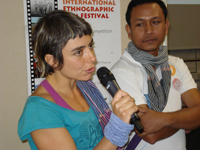 エラ・プリーセ (Ella Pugliese) 監督
エラ・プリーセ (Ella Pugliese) 監督
略歴:1974年ローマ生まれ。言語学学士、映像人類学にフォーカスした移民研究修士。現在はフリーランスの作家・映像作家としてベルリンに在住。移民に関する事象について、国際研究機関や映像学校、テレビ局と恊働してきた。NGOや小学校、高校などで若者に向けた参加型ワークショップ、大学では自身に関する民族誌(auto-ethnography)や映像制作に関するセミナーを行っている。
Anthro-film Laboratory 10
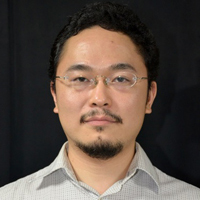 日時:2013年7月25日(木)15時30分~
日時:2013年7月25日(木)15時30分~
場所:国立民族博物館4階大演習室
発表タイトル:
「複製技術の演劇」「地図を演劇にする」
発表者:
あごうさとし (劇作家・演出家・俳優・ロボットオペレーター)
発表内容:
1.「複製技術の演劇」
演劇の複製可能性について検証する連作。
ベンヤミンの「複製技術時代における芸術作品」「歴史哲学テーゼ」等を下敷きに、「パサージュ」というタイトルで上演している。
・「パサージュ1」登場人物(ベンヤミン)が、演劇の構成を試みる。2012年11月カフェモンタージュにて上演。
・「パサージュ2」観客を舞台に乗せ、観客の身体性が演劇を構成しうるのか探る。2012年12月、やなぎみわプロデュース「駅の劇場」招聘作品。
・「パサージュ3」俳優は登場せず、劇作・演出と観客の身体のみで演劇を構成する。2013年、こまばアゴラ劇場・大阪府立江之子島芸術創造センターにて上演予定。
以上を通じて、演劇作品の複製可能性を検証する。
2.「地図を演劇にする」
報告者が非常勤講師として勤務する天理医療大学にて実施するプロジェクト。
天理市の病院・市役所・神社・商店その他の施設を取材し映像・写真によって記録し、それらを地理関係上に展示する。同時に、俳優は取材先で得た情報・経験を、身体を通じて再現・再生する。観客は、展覧会をみるように、それらの映像や俳優によるパフォーマンスを鑑賞する。以上より、「宗教文化都市」と知られる天理市が内包する力学・空気・歴史性・現代性を再現する。
発表者プロフィール:
あごうさとし
大阪府出身。同志社大学法学部卒業。広告会社でコピーライターとして勤務。退職して、2001年、WANDERING PARTY の旗揚げに参加。第3回公演以降、全ての作品の作・演出をつとめる。2011年劇団解散後は、利賀山房で上演したイヨネスコ作「授業」を皮切りに、「複製技術の演劇」を主題にデジタルデバイスや特殊メイクを使用した演劇作品を制作する。昨今は、平田オリザ氏のロボット演劇のロボットオペレーターとしての活動も加わる。
2013−2014年度公益財団法人セゾン文化財団ジュニアフェロー。
神戸芸術工科大学非常勤講師/京都造形芸術大学非常勤講師/天理医療大学非常勤講師/心斎橋大学講師。
受賞歴:
日本演出者協会主催「若手演出家コンクール2007」最優秀賞受賞
2010年度京都市芸術文化特別制度奨励者
「利賀演劇人コンクール2012」奨励賞受賞
近年の活動:
2010 「total eclipse」(作・演出)於:横浜美術館・国立国際美術館
2010 「silent fart, holy fart」(作・演出) 於:京都府立文化芸術会館
2011 「授業」イヨネスコ作(演出・出演)於:利賀山房
2011 やなぎみわ演劇プロジェクト「1924海戦」(脚本・演出助手)
於:神奈川芸術劇場 大スタジオ
2012 やなぎみわ演劇プロジェクト「1924人間機械」(脚本・演出助手・出演)
於:京都国立近代美術館・高松市美術館・世田谷美術館
2012 「しあわせな日々」ベケット作(演出・出演) 於:利賀山房
—複製技術の演劇—パサージュⅠ(作・演出・出演) 於:カフェモンタージュ
—複製技術の演劇—パサージュⅡ(作・演出・出演) 於:アートエリアB1
2013 青年団+大阪大学ロボット演劇プロジェクト「さよなら/働く私」
(ロボット操作) 於:ジャパンソサイエティー・オハイオ州立大学他
その他:
2006〜2008 ラジオドラマ 京都府人権放送「はたけさんちの夕ご飯」脚本(KBSラジオ 電通関西支社)
ウェブサイト:
http://www.agosatoshi.com/
Anthro-film Laboratory 9
1979年の革命後、イラン政府が欧米諸国と敵対する一方で、イラン映画はキアロスタミやマフマルバーフなど巨匠を多数輩出し、世界的に高い評価を得てきました。日本にも多くのイラン映画ファンが存在し、両国の映画交流も拡大しつつありますが、映画政策や映画を取り巻く社会状況を紹介する学術研究は、日本ではあまり実施されてきませんでした。「革命後イランにおける映画と社会の学際的研究―権威主義体制下の娯楽と抵抗の文化」(トヨタ財団助成)プロジェクトでは、経済学、歴史学、社会学、ジェンダー研究といった多角的な視点から研究を実施すると同時に、映画関係者とのインタビューを記録し、短編映画として編集することを計画しております。今回は、映像作品の制作が初体験である報告者より、Anthro-film laboratoryにて企画と製作過程の作品を紹介させて頂き、コメンテーター及び参加者の皆さまより、アドバイス、ご意見を頂きたいと思います。
日時:6月18日(火)17時~20時
場所:早稲田大学120-1号館2階201会議室
http://www.waseda.jp/jp/campus/waseda.html
以下、発表者と発表内容
1.貫井万里/早稲田大学イスラーム地域研究機構招聘研究員
撮影地:イラン
研究プロジェクトの概要説明後、短編映画「周縁化 あるいは 非周縁化された女性たち―イラン映画界で生きることTo be
marginalized, or not to be marginalized :Women as cinema practitioners in Iran」(監督 Naghme Samini)と「イランと日本の映画交流」(監督 Gotolatollah Zakeri)の企画の紹介と映像(10分~15分程度)上映の予定です。
2. 鈴木均/日本貿易振興機構アジア経済研究所上席主任調査研究員
撮影地:イラン
「イラン地方都市フィールド調査ビデオの上映」と解説(30分~1時間)
3. 司会
川瀬慈/国立民族学博物館文化資源研究センター助教
4.コメンテーター
田沼 幸子/大阪大学大学院人間科学研究科助教
分藤大翼/信州大学全学教育機構准教授
5. お問い合わせ先・共催
早稲田大学イスラーム地域研究機構(貫井万里)
Tel: 03-3203-4748 fax: 03-3203-4840
Eメールでのお問合せはこちら
NIHUプログラム・イスラーム地域研究早稲田拠点(WIAS)「イスラームとジェンダー」研究会
Anthro-film Laboratory 8
「制作中の映像作品のブラッシュアップセミナー」
日時:4月25日16:30–
場所:大阪市立大学・文化交流センター・小セミナー室(大阪駅前第2ビル6階)
以下のリンクを参考下さい。
http://www.osaka-cu.ac.jp/ja/academics/institution/bunko/index.html
【会の概要】
人類学研究者がとりくむ映像作品を対象に、制作過程にある作品のブラッシュアップを目的とするセミナーを開催します。
作品の制作目的や公開の方法はそれぞれ異なりますが、各作品の構成と編集について、みなで建設的に意見を交換しあう楽しい会にいたしましょう。
以下発表者、発表内容
1.『ウフィティ・ウリコ(妖術はある!)』(仮題)
発表者:米田亮太/京都大学大学院アジア・アフリカ地域研究研究科
撮影地:マラウィ共和国
7分(制作計画についての口頭発表のみ)
撮影予定地域であるマラウィ共和国では、妖術言説が深く人々の生活に根ざして存在している。また、それらの妖術言説は、地域の伝統医療実践とも密に関係している。しかし、近年、民主主義の導入などにより、「人権」という概念が人々の間で広まりつつあり、妖術言説は人権侵害として、非難の的となってきている。このような状況のなかで、妖術言説をめぐる人々の認識がどのように「ずれ」ているのか、映像によって可視化してみたいというのが、本映像制作の狙いである。
2. 『Sound of Tai Weaving』
発表者:伊藤悟/国立民族学博物館
撮影年:2008年12月
撮影地:中国雲南省徳宏州
5分(字幕なし、音と映像のみ)
音と振動に肉迫した表現によって刷り込まれた身体感覚を喚起できないか模索しています。「からんころん、と綜絖の錘がぶつかりあう乾いた木の音、どしんどしん、と刀杼を打つ音、しゅっ、と筬が経糸を擦る音が何度も繰り返される。
機織の振動が画面に伝わる。腰掛けていた竹の反動ときしみを思い出す。私の手足が音と微妙な揺れに包まれて疼きだす。映像が私の経験と共振する。」
サンプル(当日は再編集版)
http://www.youtube.com/user/satoruasia?feature=mhee
3.『Seven Songs for Mourning: Myel Agwara among Alur 』(仮題)
発表者:田原範子/四天王寺大学
撮影年:2009~2013年
撮影地:ウガンダ共和国、ネビ県、ホイマ県
アルル語(英語字幕)
54分
Myel agwara is the last farewell for the dead, literally means "the dance of long flute" in Alur,
spiritually controlled by ambaya, the representation of other world. Since 2005, we prepared myel agwara for Cezario Oungi, the late clan leader. The ritual was held on March 2012 for passing on intangible mores to the future generations. It was performed for the first time since 1987 in
Uganda. This film focuses on the songs and practices to portray the everyday life providing us with the opportunity to rethink the meaning of death and other world.
4.『NGAGPA STYLE ~ヒマラヤの在家密教行者の世界~』(仮題)
発表:佐藤剛裕/明治大学野生の科学研究所、ゾクチェン研究所 研究員
撮影年:2010~2012年
撮影地:ネパール ムスタン郡・ドルポ郡
20-30分程
発表者は、ヒマラヤ高山地帯で寺院組織に属さずに村落の祭祀を扱う在家密教行者(ンガッパ)の伝統を研究している。今回の鳥装儀礼と関わりの深い密教舞踊を伝えるドルポ、ムスタン地方の様子を通して、
チベット仏教の古層に迫る。
5. 『soledad y esperanza(孤独と希望) 』
発表者:田沼幸子/大阪大学
撮影年:2011年ー2013年1月
撮影地:キューバ、アルゼンチン
スペイン語
15分(本編予定時間60分)
長年、第三世界の「希望」となってきたキューバはそれゆえに、理解者となってくれるはずの国外の左翼やヒューマニストからも抑圧を看過ないし過小評価されてきた。それゆえ、国外に去ったキューバ人たちも依然つづく母国の理想化と、それとは相容れない自分をとりまく現実との齟齬に苦しむ。それでも少しずつ、広がりつつある理解と生まれつつある希望の萌芽に光をあてる。
6.『ザフィマニリスタイルのゆくえ』
発表者:川瀬慈/国立民族学博物館(監督川瀬、監修:飯田卓・川瀬)
撮影年:2012年8-9月
撮影地:マダガスカル共和国中央高地
マダガスカル語(日本語字幕)
20- 30分
本作ではマダガスカル中央高地のザフィマニリのものづくりと、それを支える人々の暮らしを紹介します。同時に、ユネスコによる世界無形文化遺産登録や、ツーリズム等、ザフィマニリの社会にもたらされる外部からのインパクトに対して人々や社会がどのように折り合いをつけているかを示し、グローバリゼーションのなかで変容していく無形文化と生業について検討します。
Anthro-film Laboratory 7
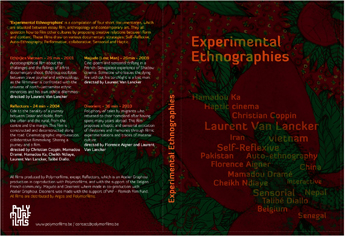 詩的かつラディカルな映像表現で知られるアーティスト/人類学者のLaurent Van Lancker 博士が、来月ベルギーより来日し各地で映画の発表を行います。関西では、彼を迎えた以下二つの企画を予定しております。
詩的かつラディカルな映像表現で知られるアーティスト/人類学者のLaurent Van Lancker 博士が、来月ベルギーより来日し各地で映画の発表を行います。関西では、彼を迎えた以下二つの企画を予定しております。
ご本人が監督された映画の発表を通して、人類学における映像表現の様々な可能性について、議論を深めたいと思います。
『Surya』 上映
会場:天劇キネマトロン
日時:2月19日 19:30–22:00
Charge: 500 yen
『スーリヤ Surya』 2007, 76min, 英語他
監督:ローラン・ヴァン・ランカー
Directed by Laurent Van Lancker
本作では、現代の吟遊詩人たちがそれぞれに異なる言語と朗誦スタイルで、架空の叙事詩を謡い紡ぎ、主人公“名前のない英雄”の命を繋いでゆく。文化の香気、言語の味わい、旅の匂い。我々は語り手から語り手へと旅をする。想像と現実、内なる世界と外の世界、ドキュメンタリーとフィクションの間を振り子のように揺れ動きながら。この抒情詩は、ヨーロッパからアジアにかけての陸路の旅(ベルギー、スロヴァキア、トルコ、シリア、クルディスタン、イラン、パキスタン、インド、ネパール、チベット、中国、ベトナム)を経て生み出された。想像・創造力は、オーディオヴィジュアルパフォーマンスを通し、あらゆる境界を越えて旅を続ける。
※ 作品上映後のディスカッションは、主に英語で行います。
映像作家
ローラン・ヴァン・ランカー Laurent Van Lancker
ブリュッセルを拠点に活動するアーティスト。映画制作(IAD Film School, Brussels)と人類学(SOAS/ロンドン大学東洋アフリカ研究学院)を学び、ゲント大学で芸術学博士号を取得。制作した映像作品は、映画館、アートセンター、美術館、テレビ等、多様な場で公開されてきた。『Ymako』(英国王立人類学協会主催国際民族誌映画祭1998においてバジル・ライト賞受賞)、『雲と移動』(グランプリジュンヌ、アジア映画祭1999)等を発表後、2001年から2012年にかけて『実験的民族誌』と呼ばれる短編ドキュメンタリーのシリーズを制作。自己再帰的/パフォーマティヴ/相互行為的/感覚的/感触的といった様々な映像のモードを探求してきた。長編ドキュメンタリー『スーリヤ』は、ロドス国際映画祭で金鹿賞・観客賞を受賞した他、パリ、ライプツィヒ、ドバイ、ダーバン、マル・デル・プラタ、モントリオール、サンクトペテルブルク等の映画祭で上映された。近年は「拡張されたドキュメンタリー」研究グループ(ゲント大学)に参加し、インターネットによる芸術的なコラボレーション実践プロジェクト【Diwans.org】を完成させている。また教育者としても、ベルリン自由大学、ロンドン大学、ブルキナファソやベルギーの映画学校等で映像人類学や映画制作の指導を定期的に行う。ブリュッセルを拠点とする芸術・映像人類学の国際ワークショップSoundImageCulture(SIC)の中心的な人物でもある。
※【Diwans.org】 http://www.diwans.org
※【polymorfilms】http://www.polymorfilms.be/#/Films/
※【SoundImageCulture】http://www.soundimageculture.org/en
Workshop “Experimental Ethnographies”
(4 作の上映と各作品の方法論や様式に関する監督による解説と議論)
会場:国立民族学博物館内 総合研究大学院大学 第1 演習室
日時:2月20日14:30–17:30
Laurent はベルリン自由大学、ロンドン大学、ブルキナファソやベルギーの国立映画学校等、各地で映像人類学や映画制作の指導を行っています。
ブリュッセルを拠点とする芸術・映像人類学の国際ワークショップ SoundImageCulture ( http://www.soundimageculture.org/en ) の中心的な人物でもあります。
両会ともに定員20 名、議論は英語で行います。
Anthro-film Laboratory 6
「原一男監督と語り合う会」
日時:10月10日(水曜)20時~
場所:アクスム(エチオピア料理)
大阪府大阪市中央区東心斎橋1-17-15 丸清ビル5F
『ゆきゆきて、神軍』
『極私的エロス 恋歌1974』等で知られる映画監督
原一男監督をお招きし、エチオピア料理を食べながら、
映画について自由に議論する会にいたします。
Anthro-film Laboratory 5
日時:9月25日 16:30-
場所:大阪大学人間科学研究科ユメンヌ・ホール
http://www.hus.osaka-u.ac.jp/access/access.html
*事前の参加予約は必要ございません。
上映作品 『IPPO IPPO』
発表者 和氣正太郎 (マンチェスター大学 Social Anthropology with Visual Media, Ph.D Student)
コメンテーター 鈴木和歌奈(大阪大学人間科学研究科博士課程/日本学術振興会特別研究員DC1)
『IPPO IPPO』
日本・ノルウェー 2010年・47分・DV
監督:和氣正太郎
日本語(英語字幕)
作品要旨:
女性がんサバイバーのマーシャさんは、静岡県がん患者会「一歩一歩の会」が
主催する富士登山に初めてチャレンジする。本作は、この登山に同行し記録
することで、彼女の抱えるジレンマや恐れ、そして希望を照らし出す。
はたして、彼女の得た「病後の人生」とは?英語字幕付き上映。
会の終了後、千里中央駅界隈で、和氣氏を囲んで懇親会を行います。
Anthro-film Laoratory Vol 5.
Date & Time: September 25th 16:30–
Location: Osaka University, Yumennu Hall
http://www.hus.osaka-u.ac.jp/access/access.html
No reservation required.
Presenter/Filmmaker:
Shotaro Wake
(Ph.D. Student. Social Anthropology with Visual Media,
The University of Manchester)
Commentator:
Wakana Suzuki
(Graduate School of Human Sciences, Osaka University, JSPS)
Film:
IPPO IPPO (2010)
Japan and Norway. 47min. DV. Director: Shotaro Wake.
(in Japanese with English subtitles)
Synopsis:
Marsha is a middle-aged housewife with a long history of fighting against
serious diseases. This year she has to decide if she is going to
participate for the first time in the annual support group event of climbing
Mt. Fuji, Japan’s highest mountain. As we follow Marsha in the steps
towards her decision, we begin to understand the meaning of her dilemma,
and ultimately experience her hopes and fears as we travel along this special
journey with her.
This ethnographic film, based on the visual/medical anthropological
perspective, raises important questions about quality of life; what does it mean to live
a meaningful life, and where and how do you find it?
The film, Ippo Ippo, is a product of director Shotaro Wake’s master
thesis project in Visual Cultural Studies at Univeristy of Tromsø, Norway.
For this he conducted a five month fieldwork in 2009 at a local cancer support
group, Ippo Ippo, in Shizuoka, Japan. He joined the group not only as
a researcher but also as a former cancer patient and became their latest
cancer member.
Profile of the filmmaker/Presenter:
Shotaro Wake is currently doing a Ph.D in Social Anthropology with
visual media at the University of Manchester. His research project,
Japanese Cancer Stories, will explore how patients and their zone of
trust re-establish continuity in their everyday lives in Japan. More
specifically, Shotaro will look at how they use empathy to communicate
emotionally sensitive topics and issues that are difficult to put into
words.
Anthro-film Laboratory 4 – "Cuba Sentimental” Series
発表者:
田沼幸子(大阪大学人間科学研究科グローバル人間学専攻助教)
レオニード・ロペス(映画監督、世界遺産修復師、スペイン語講師)
期日:2012年8月22日(水)19:00 -22:00
会場:天劇キネマトロン http://amanto.jp/tengeki/access.htm
上映作品:
『Cuba Sentimental, 旅の記録』(60分)
監督:田沼幸子、助監督:レオニード・ロペス
撮影:田沼幸子、森田良成他
キューバを出国した友人達を追った映像作品『Cuba Sentimental』は山形やドイツ、キューバの映画祭で上映された。同作を観た映画監督らのコメントと、同作の登場人物ら本人がキューバに集まって鑑賞したときの様子とコメントをあわせ、「絶え間ない探求」を続ける、もうそれほど「若い」とはいえない青年たちの姿を描く。
当日は、前作『Cuba Sentimental』の上映のあと、新作『Cuba Sentimental,旅の記録』を上映いたします。
『Cuba Sentimental』
参考URL:http://global.hus.osaka-u.ac.jp/cubasentimental/index.html
Anthro-Film Laboratory 3 - Work-in-progress Film Screening & Discussion
期日:2012年7月19日(木)19:00 - 22:00
会場:天劇キネマトロン http://amanto.jp/tengeki/access.htm
人類学研究者がとりくむ映画、サウンドアート、プロモーション・ビデオ等を対象に、制作過程にある作品のブラッシュアップを目的とするセミナーを開催します。作品の制作目的や公開の方法はそれぞれ異なりますが、各作品の構成と編集について、みなで建設的に意見を交換しあう楽しい会にいたしましょう。
上映作品と発表者:
『無題』
柳沢英輔(国立民族学博物館)
7分、2012年制作
撮影地:大阪、万博記念公園
内容:日常の微細な音とその記録(フィールドレコーディング)に焦点を当てる。iPhoneで撮った未編集のスケッチ的映像。
『How I See』
矢野原佑史(京都大学大学院アジアアフリカ地域研究研究科)
4分24秒、2009年制作
撮影地:カメルーン、ヤウンデ
内容:カメルーンの首都ヤウンデで、ヒップホップ・カルチャーを実践する者たちと共同制作したプロモーション・ビデオ。調査者も「ラッパー」として参加することで、調査対象者が創造する世界の考察を試みた実験的作品。
『送霊儀礼ソンコーカオの哭きうた①』
伊藤悟(国立民族学博物館)
20分、2007年撮影
撮影地:中国雲南省
内容:徳宏タイ族は葬儀の数日後、シャマンを招き、死者の魂を霊界に送りだす。儀礼はシャマンのうたによって死者の道行きが歌われる。特徴はシャマンによる様々な精霊のやりとりをうたう一人多役の声の演劇的パフォーマンスである。
『お墓がいらない人たち―変貌する日本の葬送儀礼』
金セッピョル(総合研究大学院大学)
17分、2008年制作
撮影地:日本/東京、神奈川、山梨一帯
内容:現代の新しい葬送形態である自然葬を紹介した映像。自然葬の順序と儀礼行動、個別の実施者たちの自然葬にいたった理由、実施にあたっての心境などを収めた。
『再会の旅』
金セッピョル(総合研究大学院大学)
15分、2012年制作
撮影地:日本/東京一帯
内容:墓という、故人を思い出す可視的な装置をもたない自然葬は、どのような理由で、どのような感情をもって行われているのであろうか。また、自然葬実施者たちはどのように故人に別れを告げ、けじめをつけているのであろうか。本作品は、故人との思い出がある所々に少しずつ遺灰を撒いていく旅を映像に収め、このような問いを探求するものである。
『アナ・ボトル―西ティモールの町と村で生きる』
森田良成(摂南大学外国語学部)
43分、2012年制作
撮影地:インドネシア、西ティモール
内容:西ティモールにある町クパンには、「アナ・ボトル」(空き瓶の子)と呼ばれる男たちがいる。彼らは荷車を押して町を一日歩いて、空き瓶や鉄くず、ダンボールなどの廃品を集め、それらを換金してお金を得ている。町での重労働によって得たお金を、彼らは何に使っているのか?彼らのお金の稼ぎ方・使い方から、物やお金の価値、「貧しさ」について考える。
ファシリテーター:
石倉敏明(明治大学野生の科学研究所)
川瀬慈(国立民族学博物館)
Anthro-film Laboratory 2 - "Sense"
発表者:
松山のぞみ(龍谷大学非常勤講師)
期日:2012年7月17日(火)19:00 - 22:00
会場:天劇キネマトロン http://amanto.jp/tengeki/access.htm
Senseをキーワードに人類学を再考する議論があります。本会では、かならずしも言語に還元されない、合理的に論証されえない感覚(五感+α)や記憶、欲望、想像等の領域のオーディオヴィジュアルな探求と記述、について映像作品を見ながら考えたいと思います。
特に、マンチェスター大学映像人類学修士課程The Visual & Sensory Media pathway学位フィルムや、ブリュッセルを拠点とする人類学者とアーティストの協働ワークショップSoundImageCulture(SIC)、映画監督の松山のぞみさんの作品等を上映いたします。
以上より、Senseのオーディオヴィジュアルな記述の多様な試みについて検証します。
上映作品:
"In the realm of unconscious desire"
(3min, 2006) Nozomi Matsuyama
A short experimental piece expresses a young female photography student’s desire in her dreams. Things that she likes and wants in her real life are always reflected in her dreams even if it was something that she didn’t want to know.
"Silent Noise"
(16min, 2007) Nozomi Matsuyama
Jo has been disturbed her sleep by baby crying next door. There has always been a baby’s buggy outside the neighbour’s door but she’s never seen a baby. However, when she hears news about her sister, things start to change in her surroundings.
Anthro-film Laboratory 1 - 民族誌映画祭の報告と上映会
発表者:
川瀬慈(国立民族学博物館 助教)
田沼幸子(大阪大学人間科学研究科グローバル人間学専攻助教)
伊藤悟(国立民族学博物館 外来研究員)
期日:2012年6月12日(火) 17:00–21:00
会場:国立民族学博物館内 総合研究大学院大学 第1演習室
近年盛んな民族誌映画祭(ethnographic film festival)は、文化人類学の新たな理論的潮流をうみだす母胎として、メディアアートや映画界をも柔軟に包摂しつつ各国で展開しています。しかしながら、民族誌映画祭について日本ではあまり知られていないのも事実です。そのようななか当映画祭の現状について情報交換する場をもちたいと思います。
まず、伊藤悟さんにロンドンRAI国際民族誌映画祭とエストニアWorldFilm国際民族誌映画祭について、田沼幸子さんにケベック国際民族誌映画祭とゲッティンゲン国際民族誌映画祭について、ごく最近に作品を発表された立場からご報告いただきます。川瀬慈は、5月に開催されたゲッティンゲンの民族誌映画祭・学生映画部門審査、ならびに各学派の作品様式の近年の傾向に関してご報告いたします。そのあと当映画祭・学生映画部門の作品をいくつか上映し、ディスカッションいたしましょう。
上映作品:
第11回ゲッティンゲン国際民族誌映画祭( http://www.gieff.de/ )より
【Best Student Film】
"Looking at Themselves - Babaluda Luda" (34')
- Romania -
Mihai Andrei Leaha (Romania)
【Honorable Mention】
"My Kosher Shifts" (23')
- Great Britain-
Iris Zaki (Israel)
【Honorable Mention】
"I Filming" (47')
- China, Yunnan, Shilin -
Lijun (China)